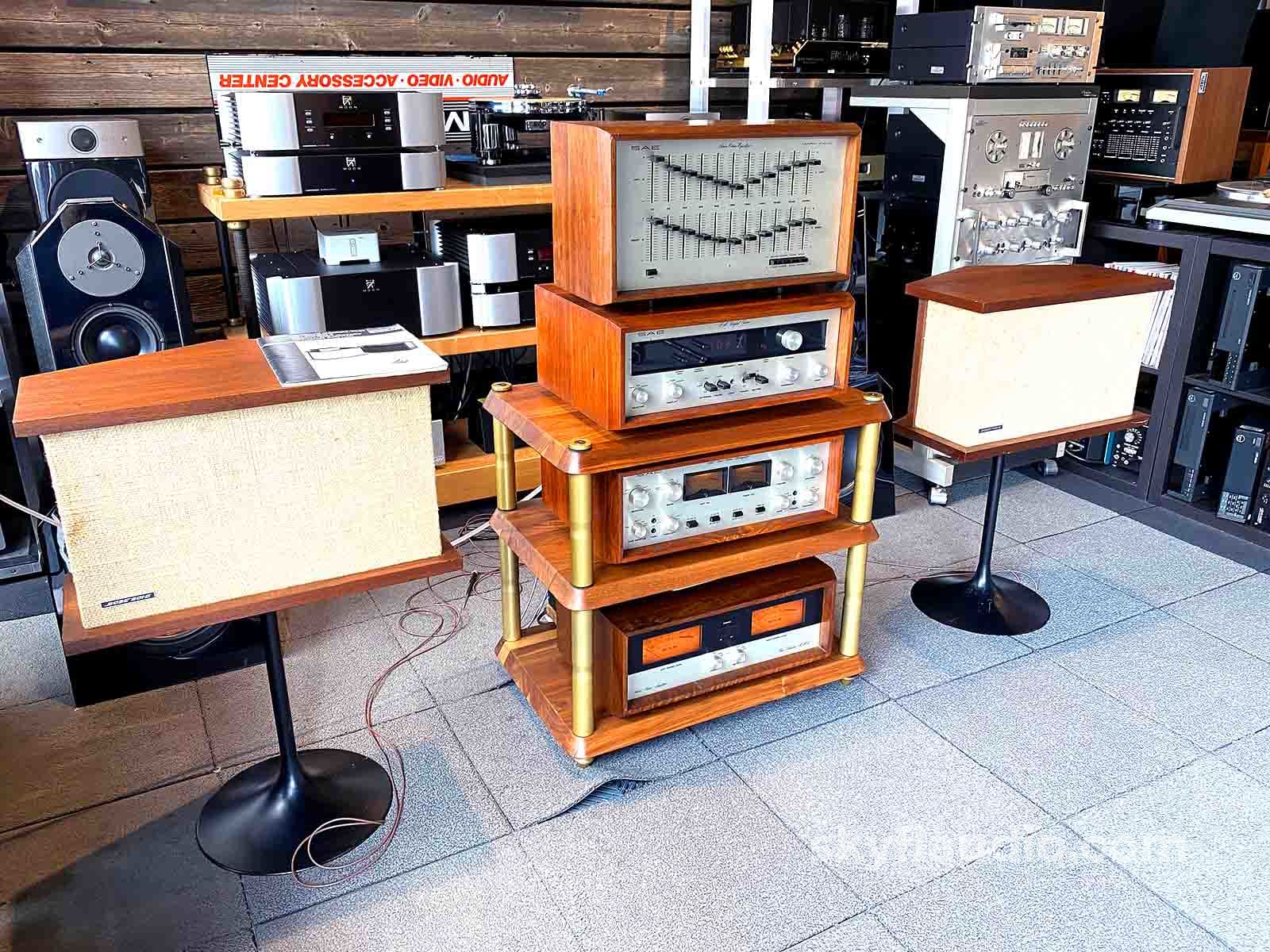
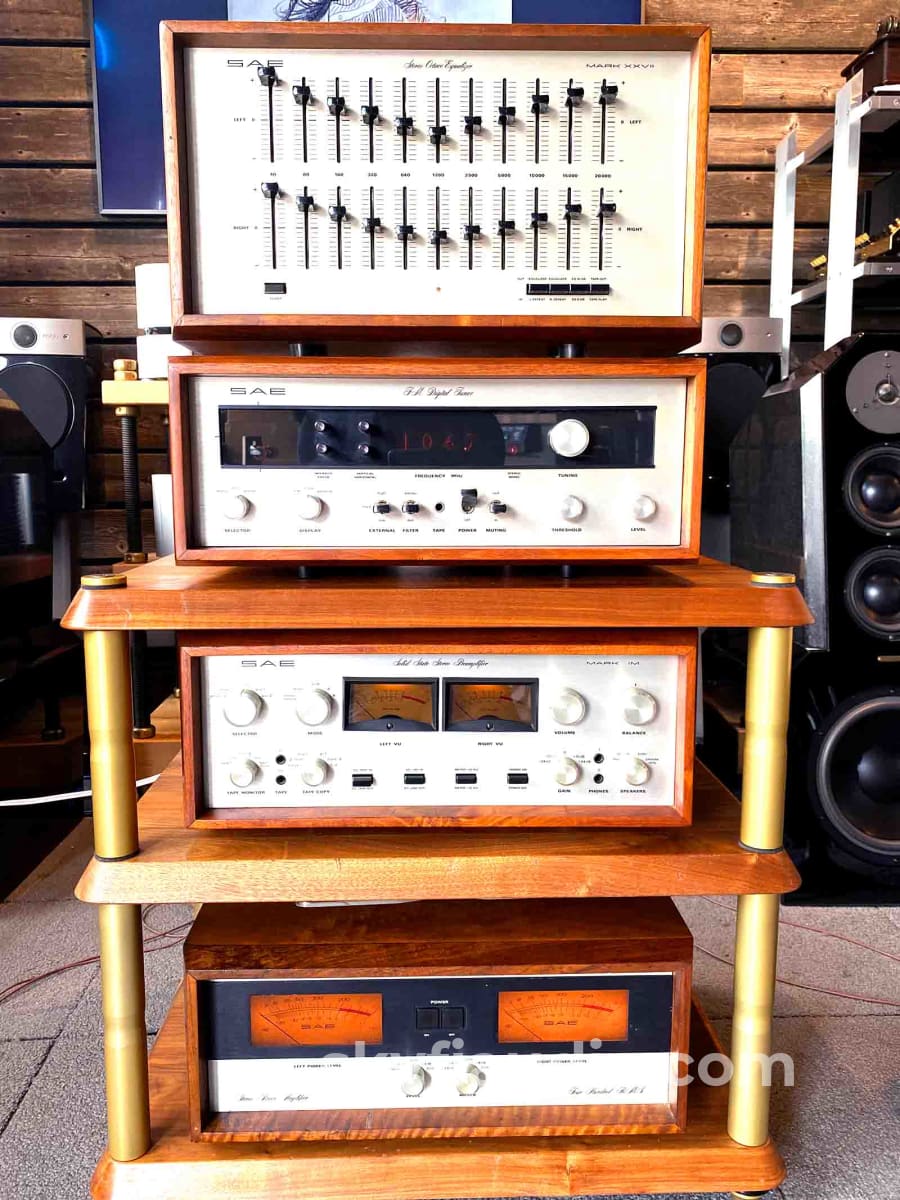
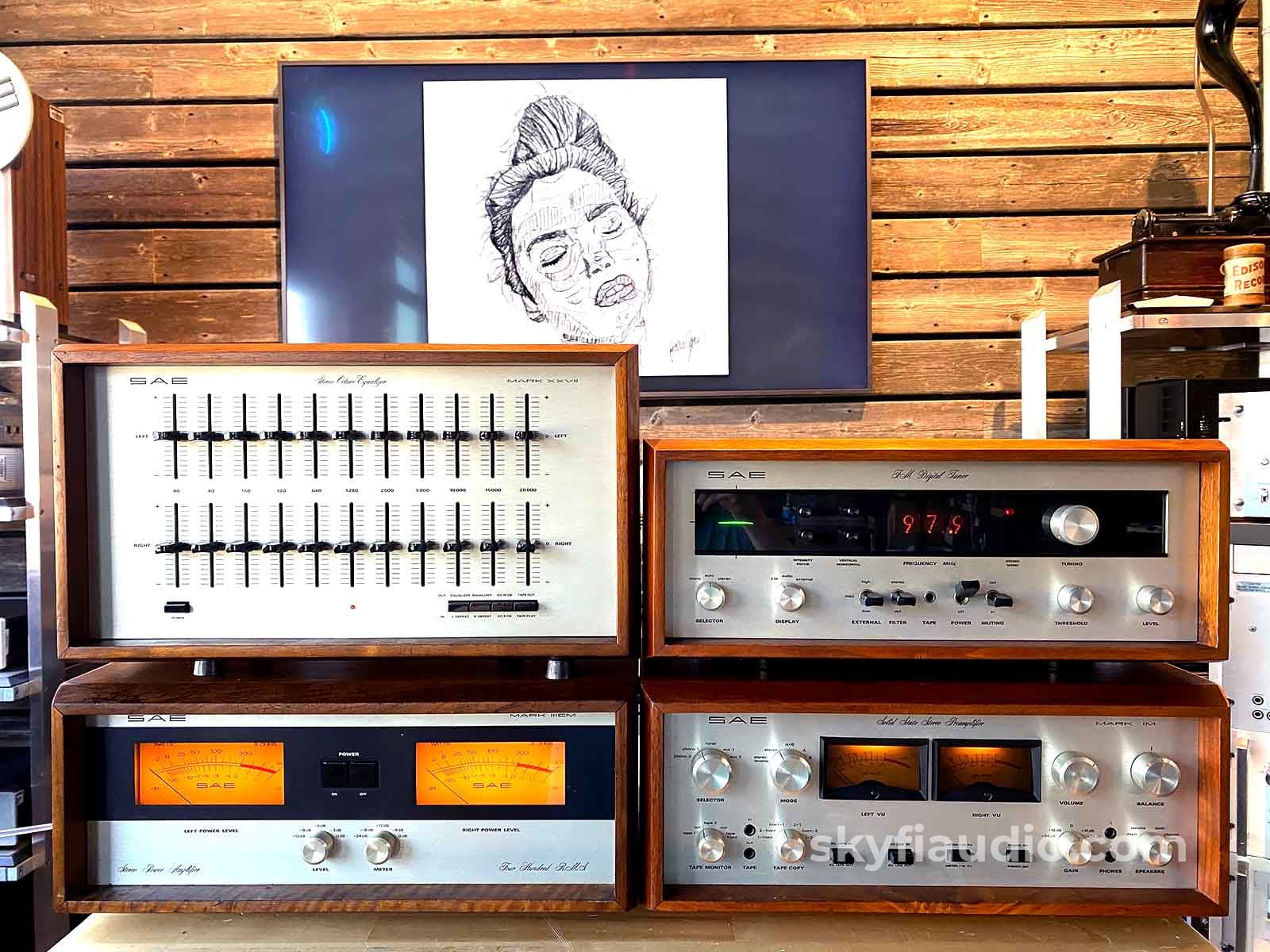
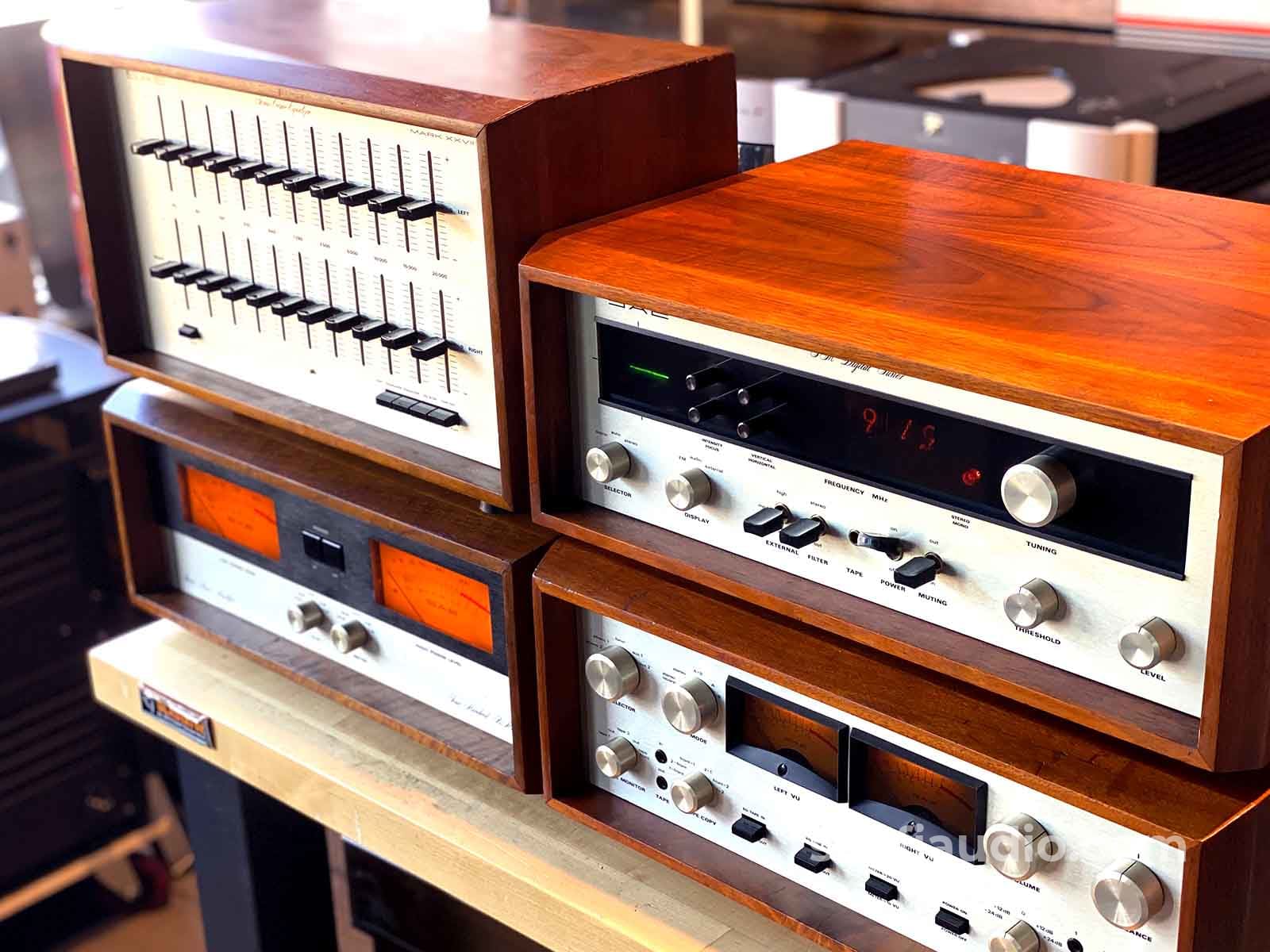
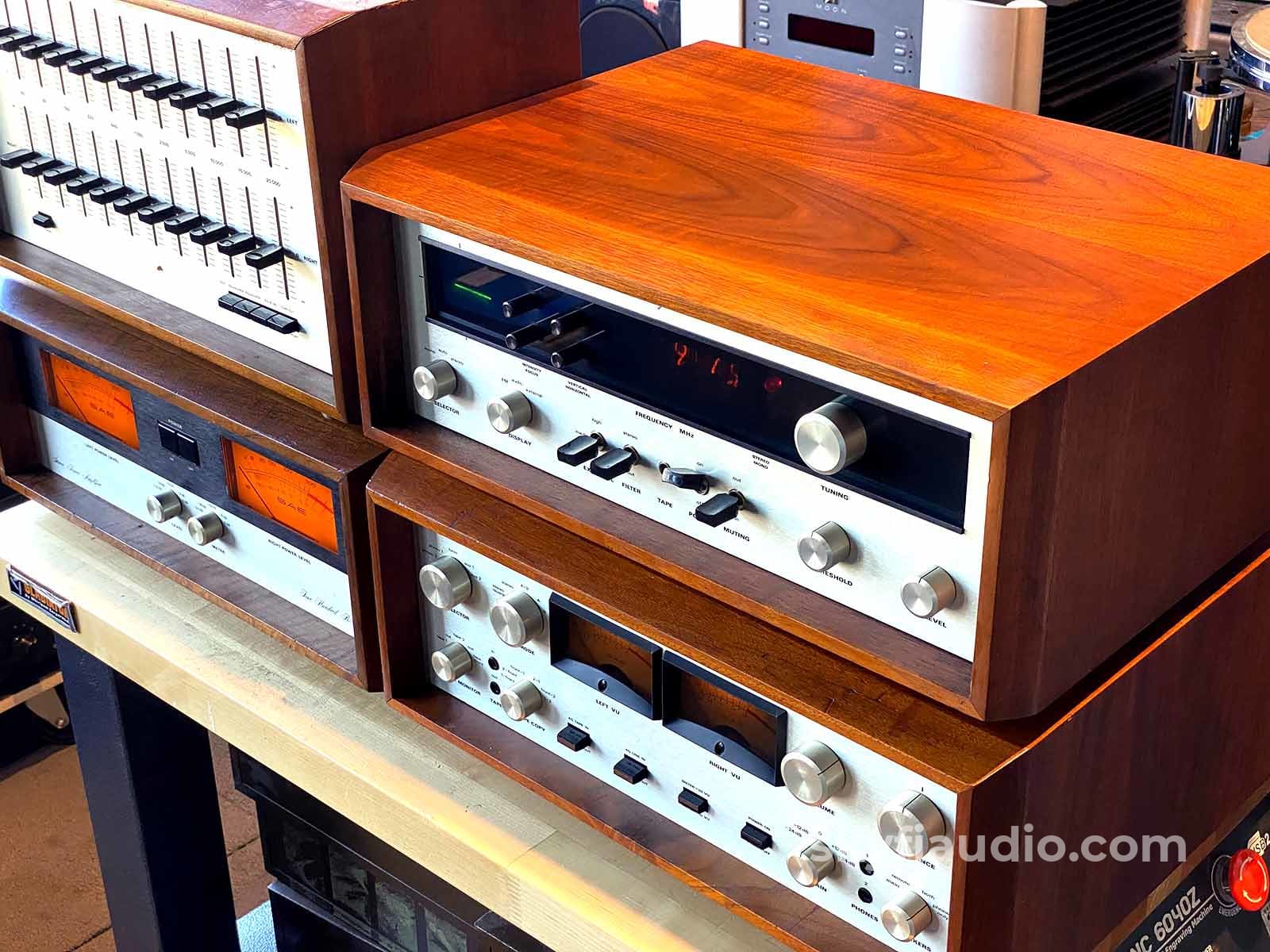
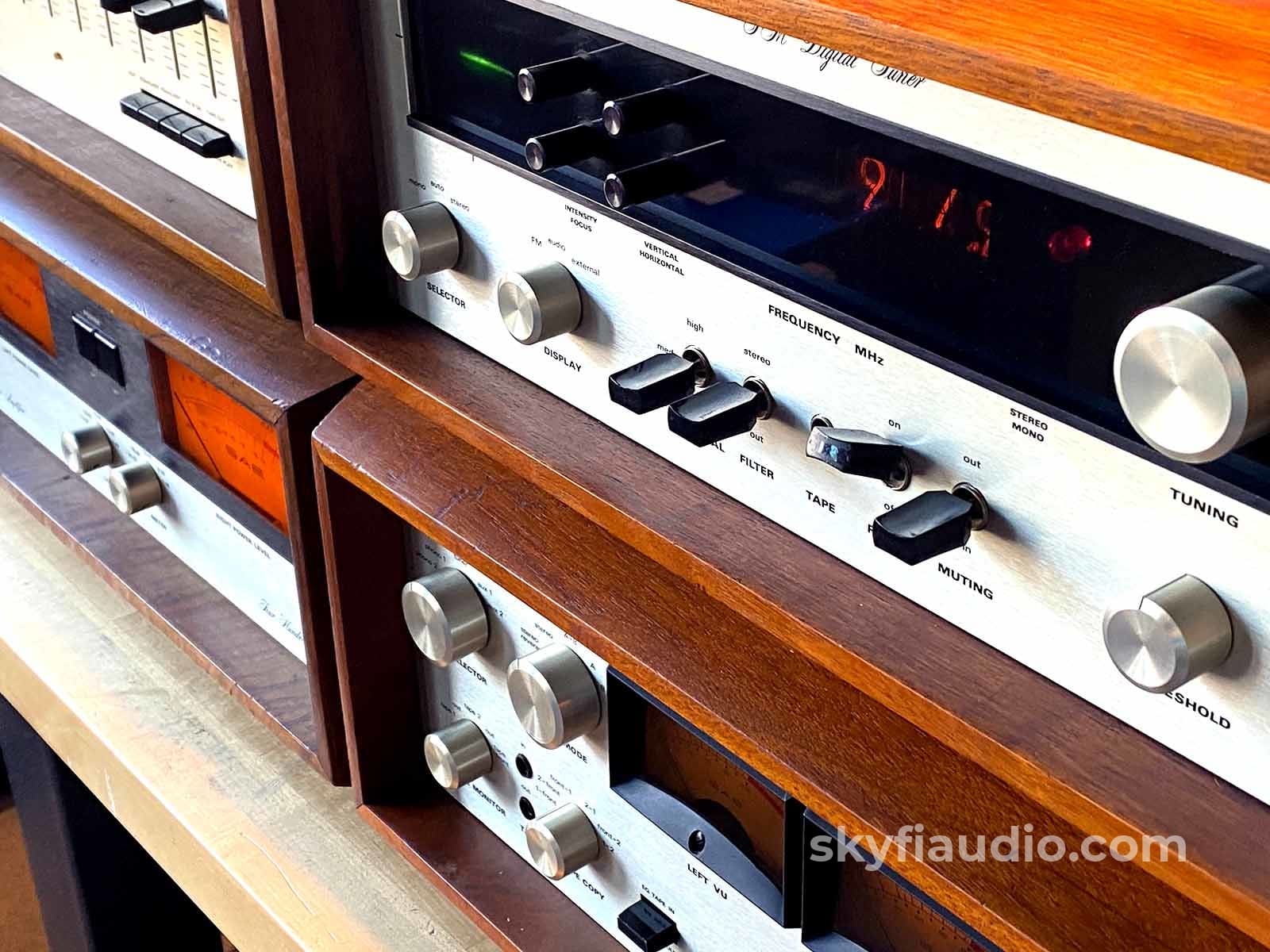
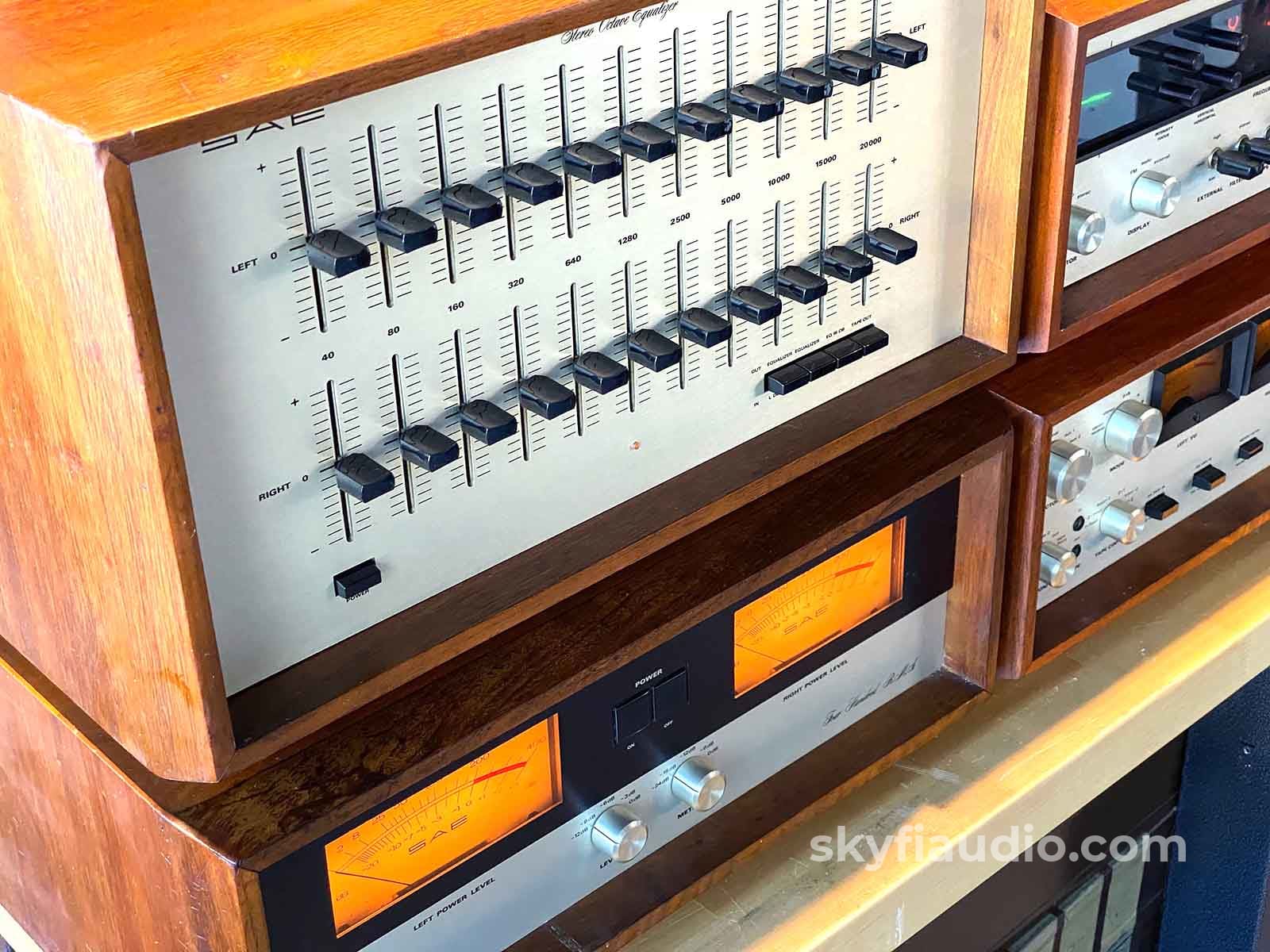
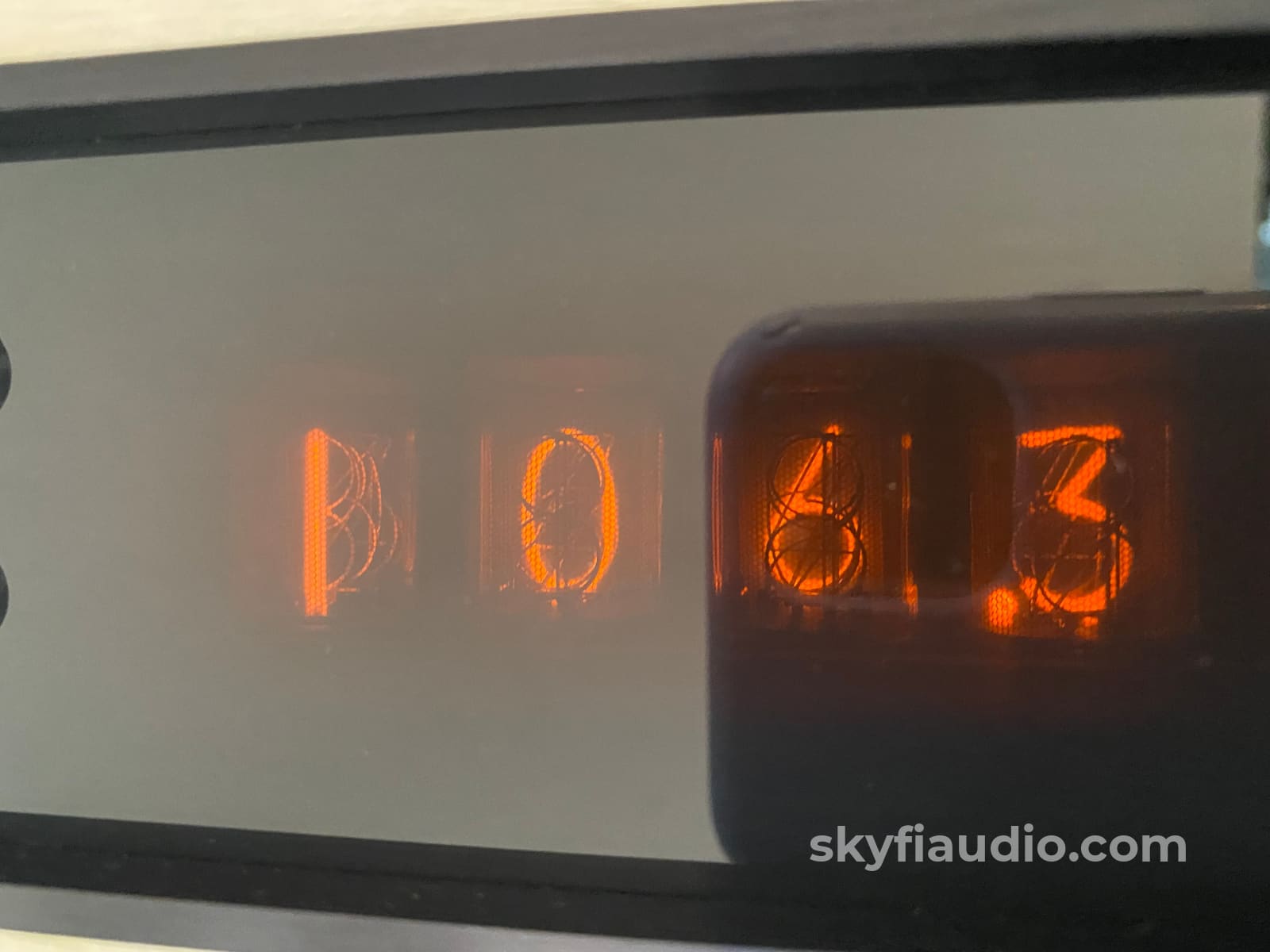

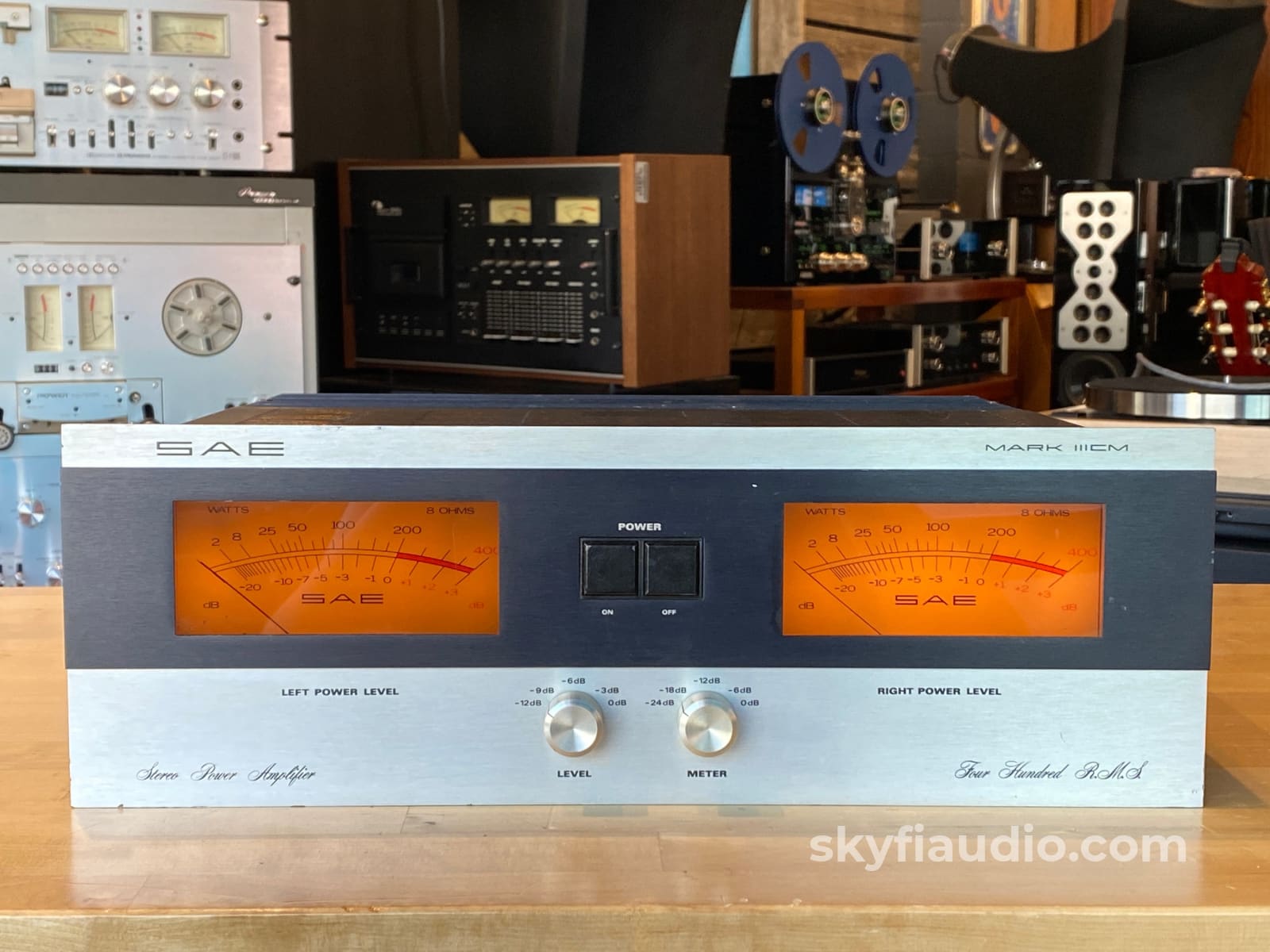
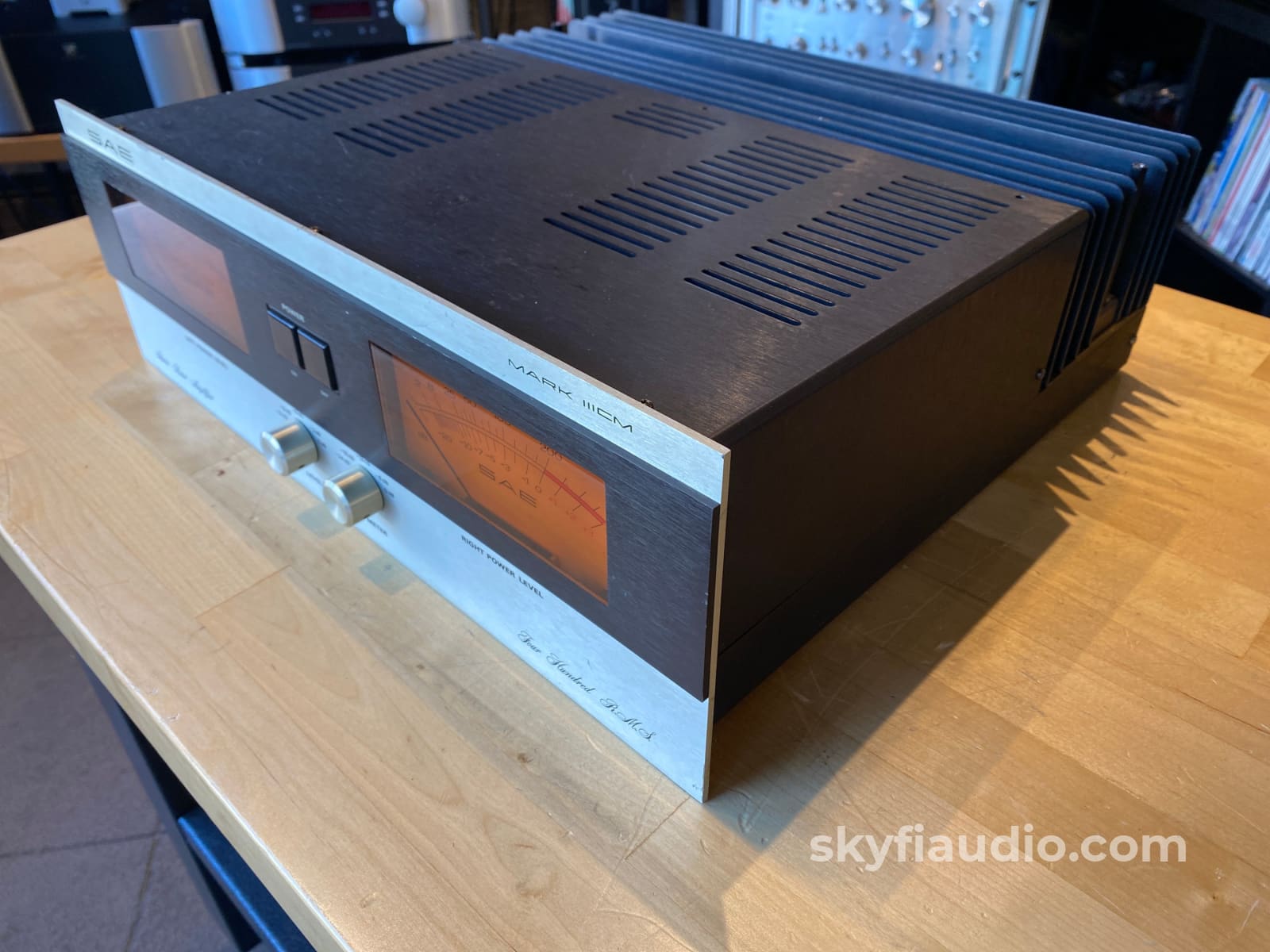
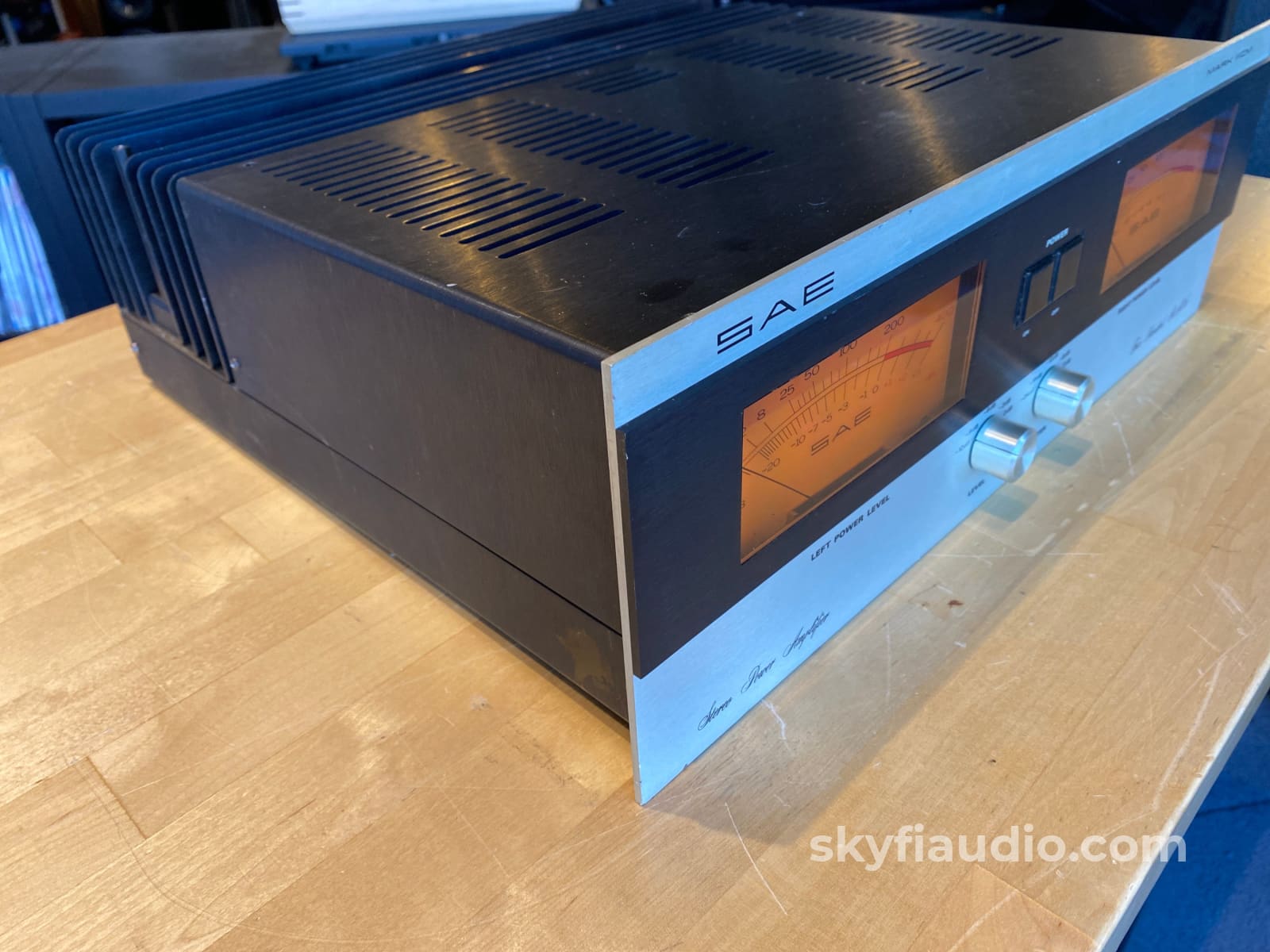
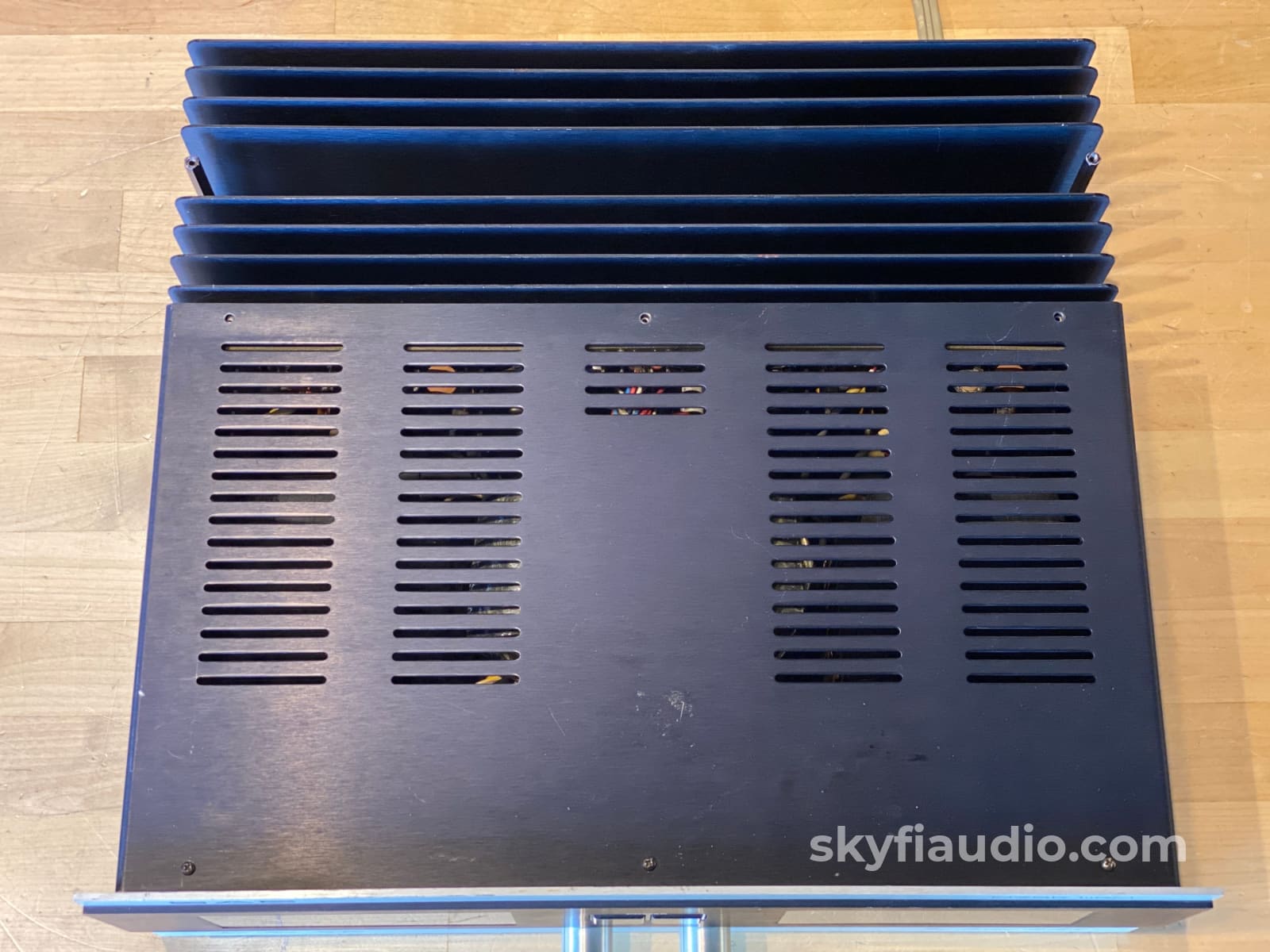

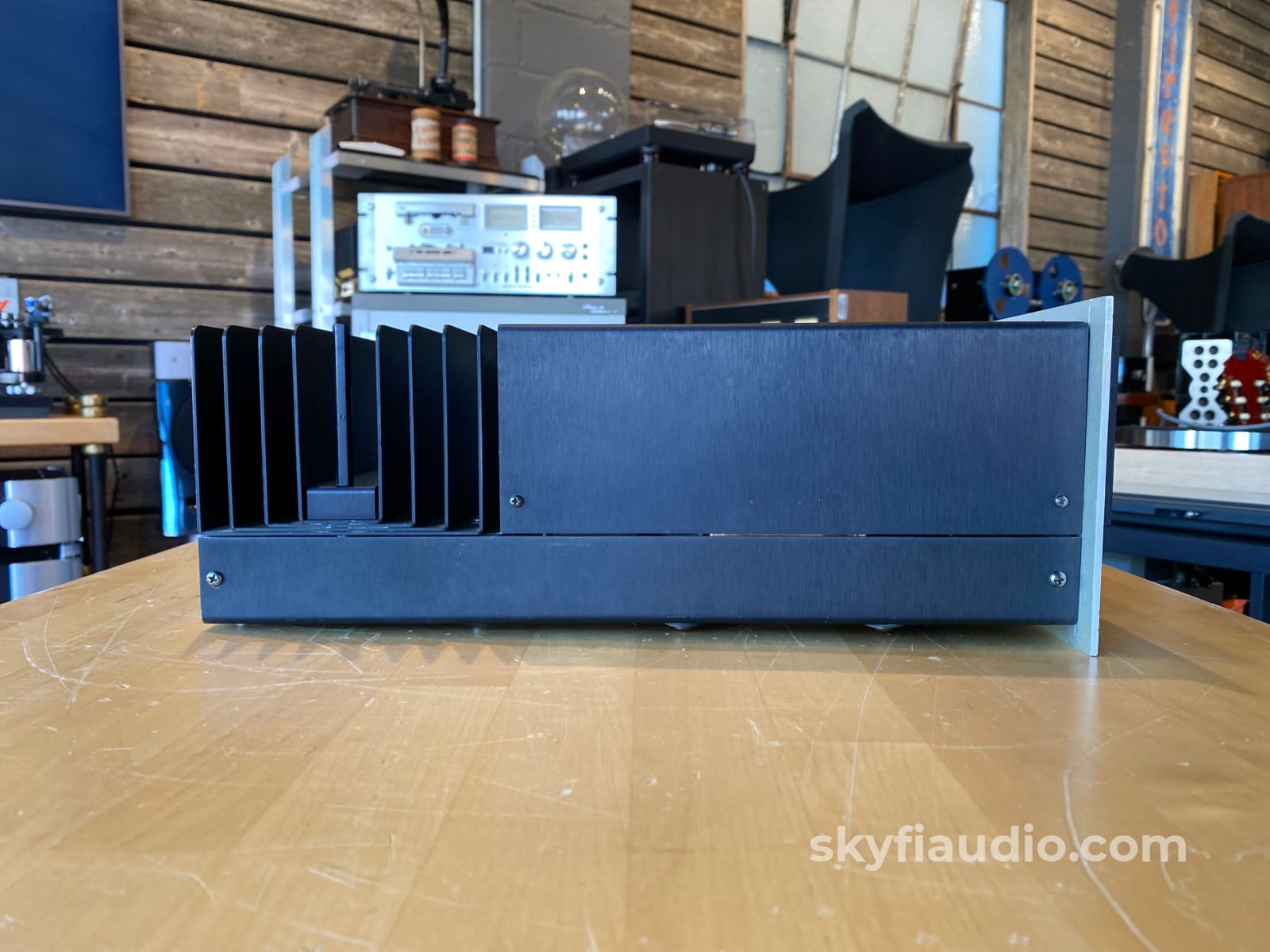
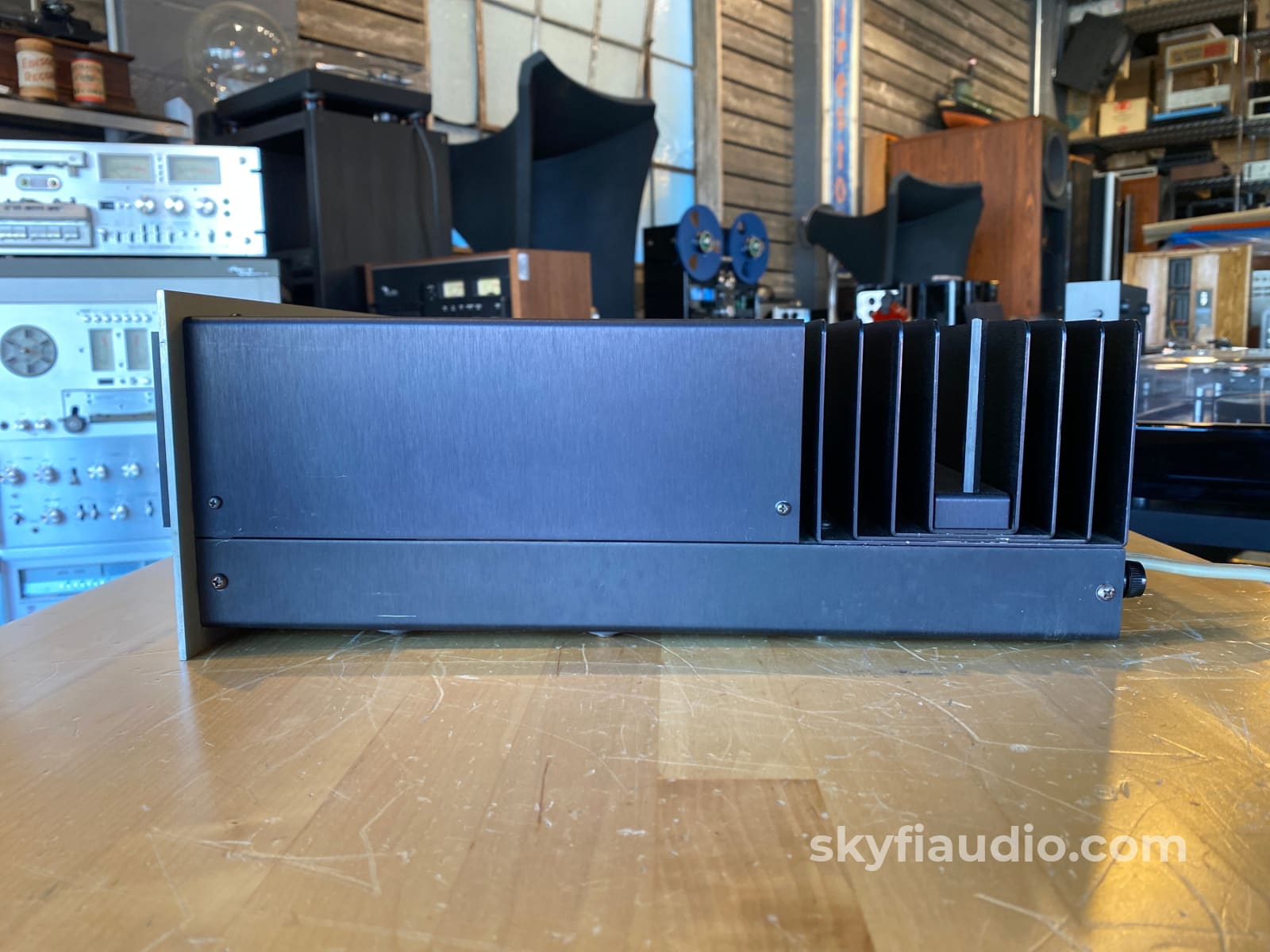
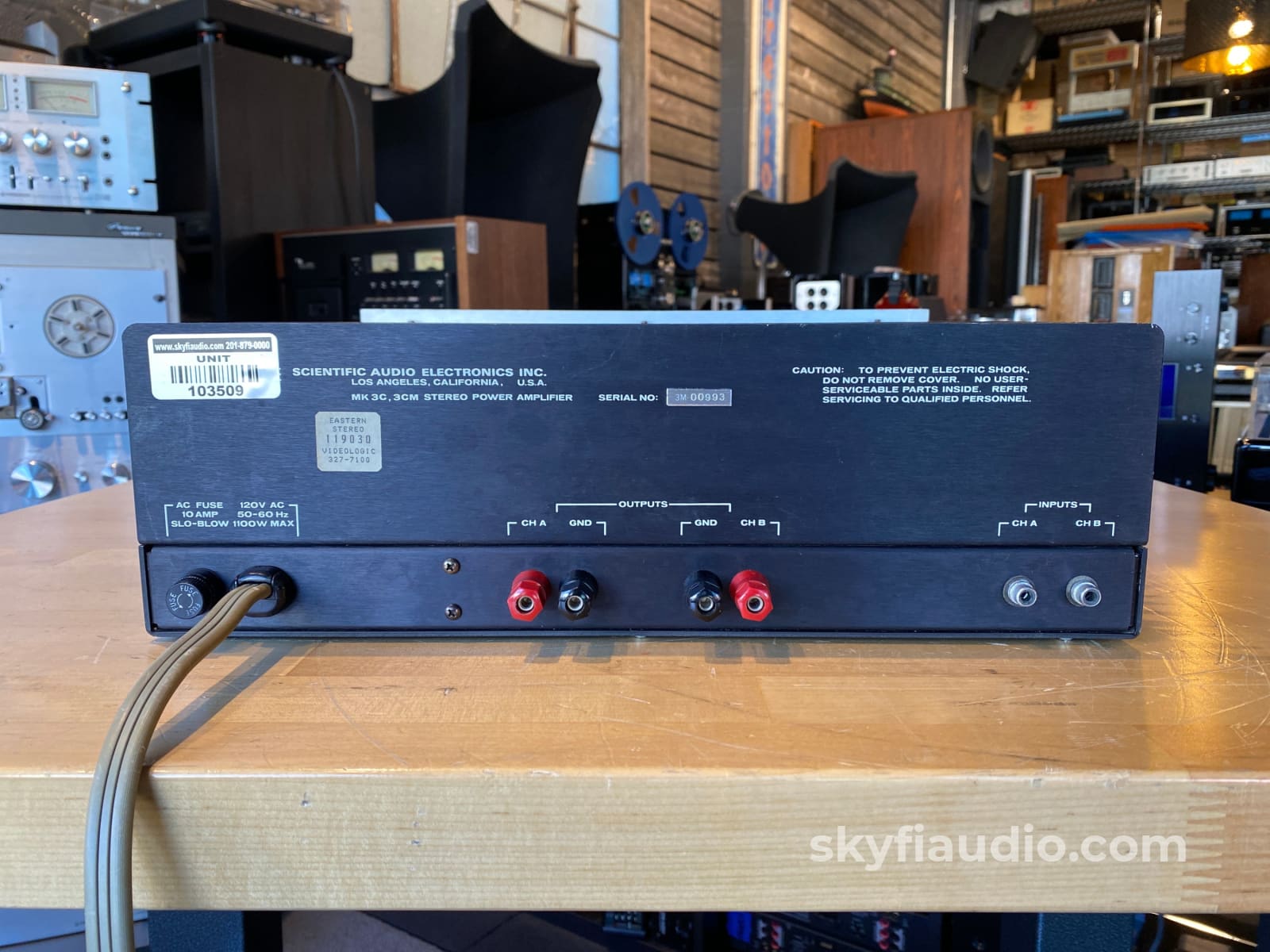
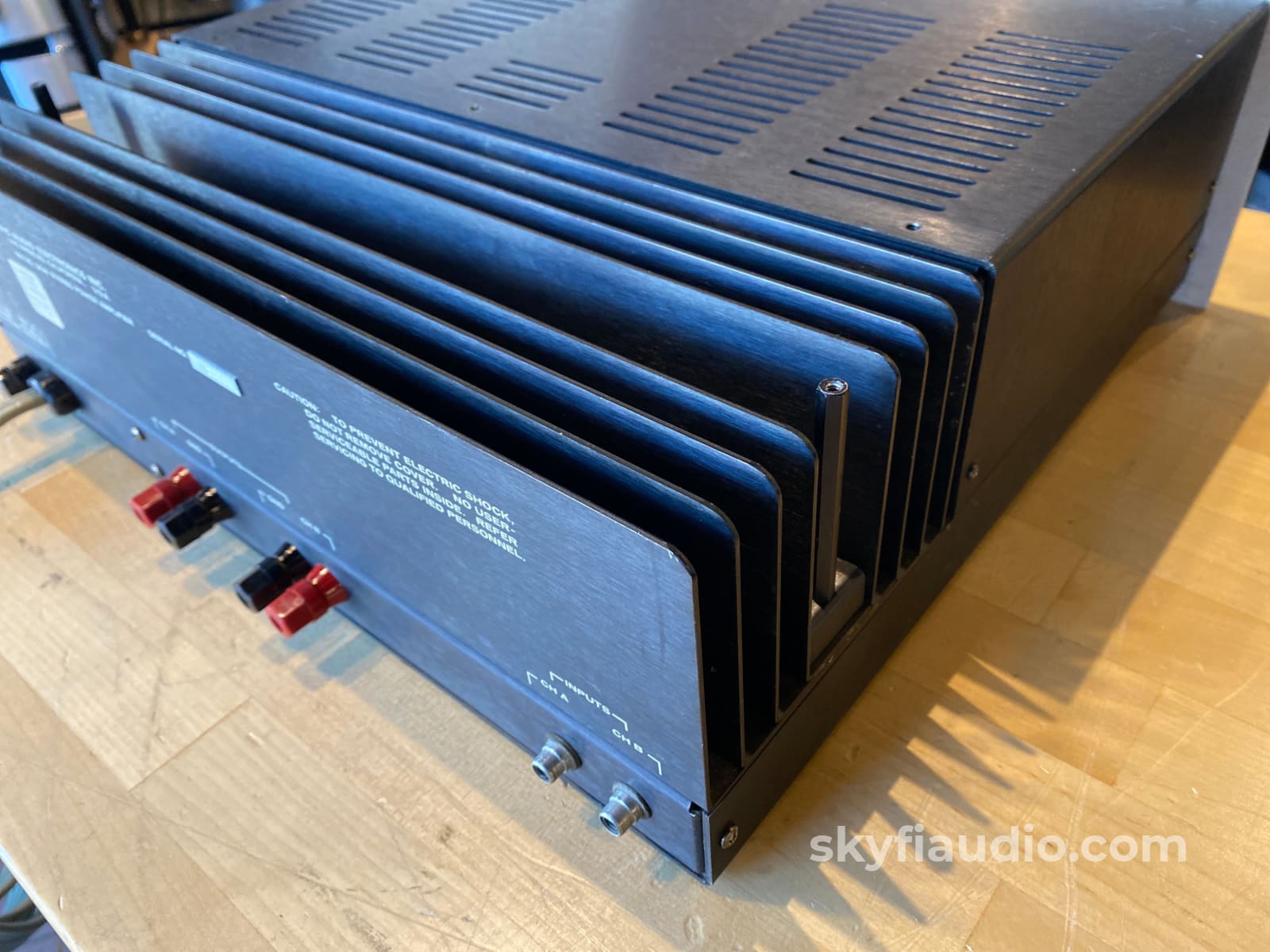
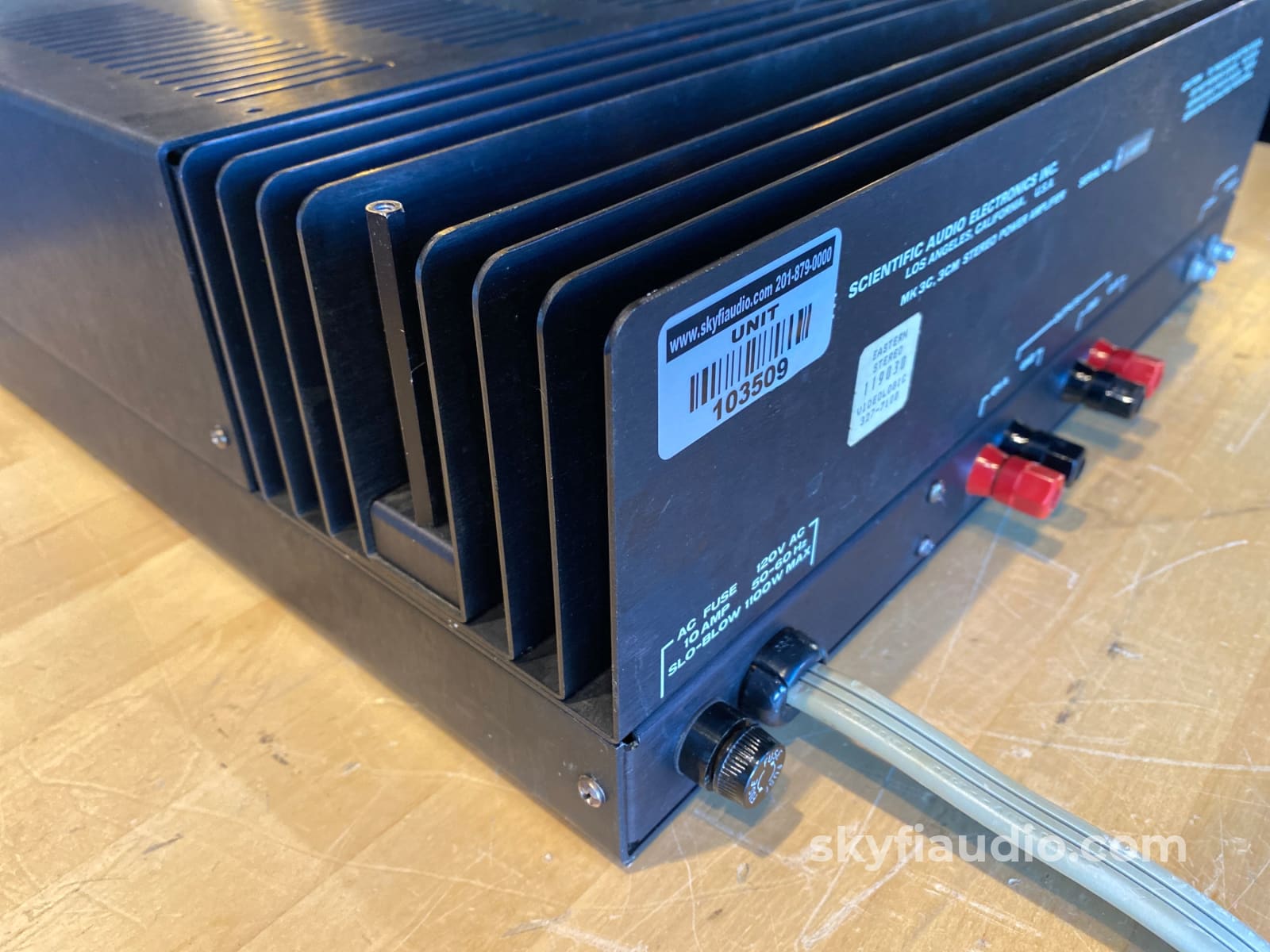
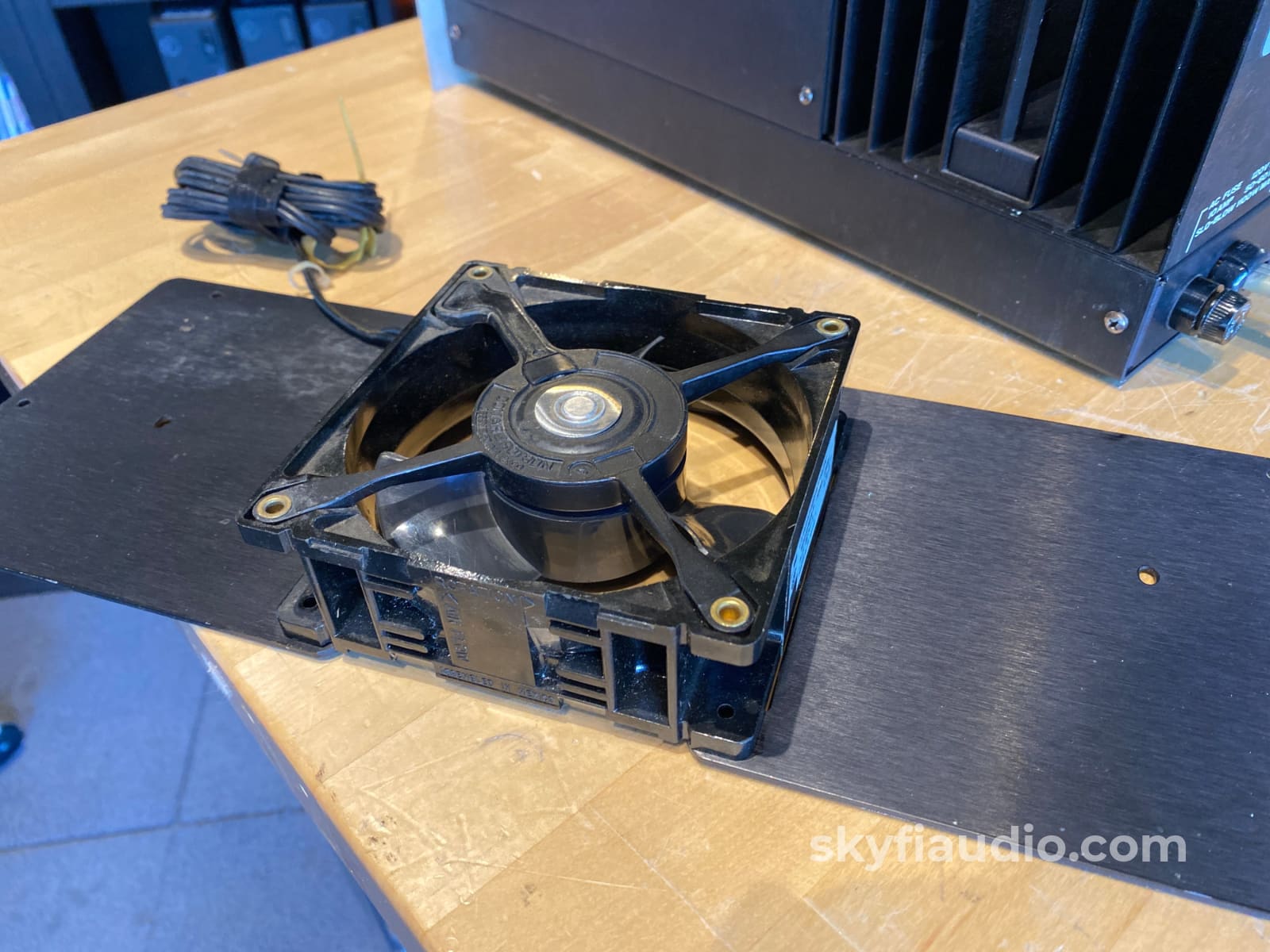
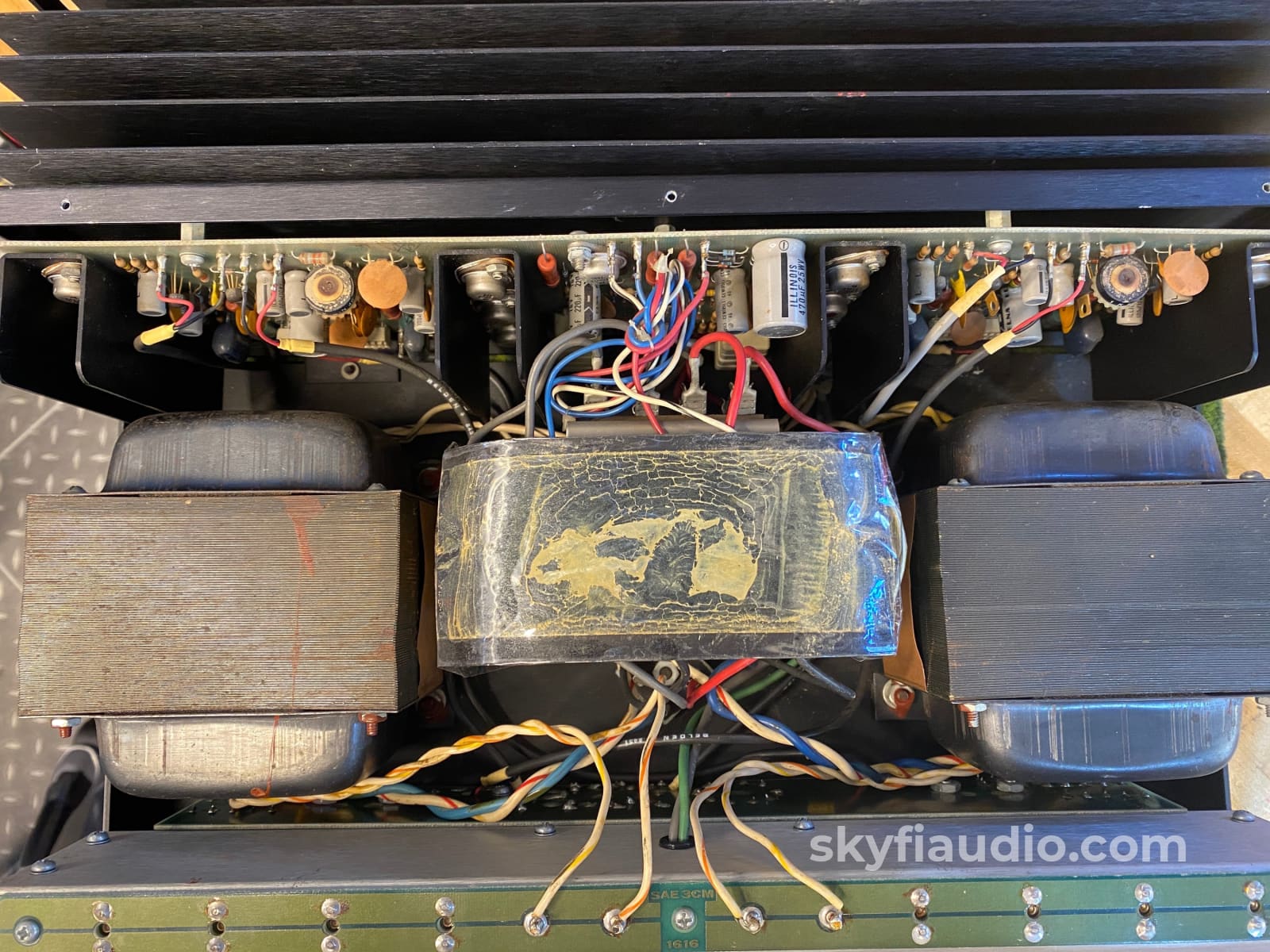

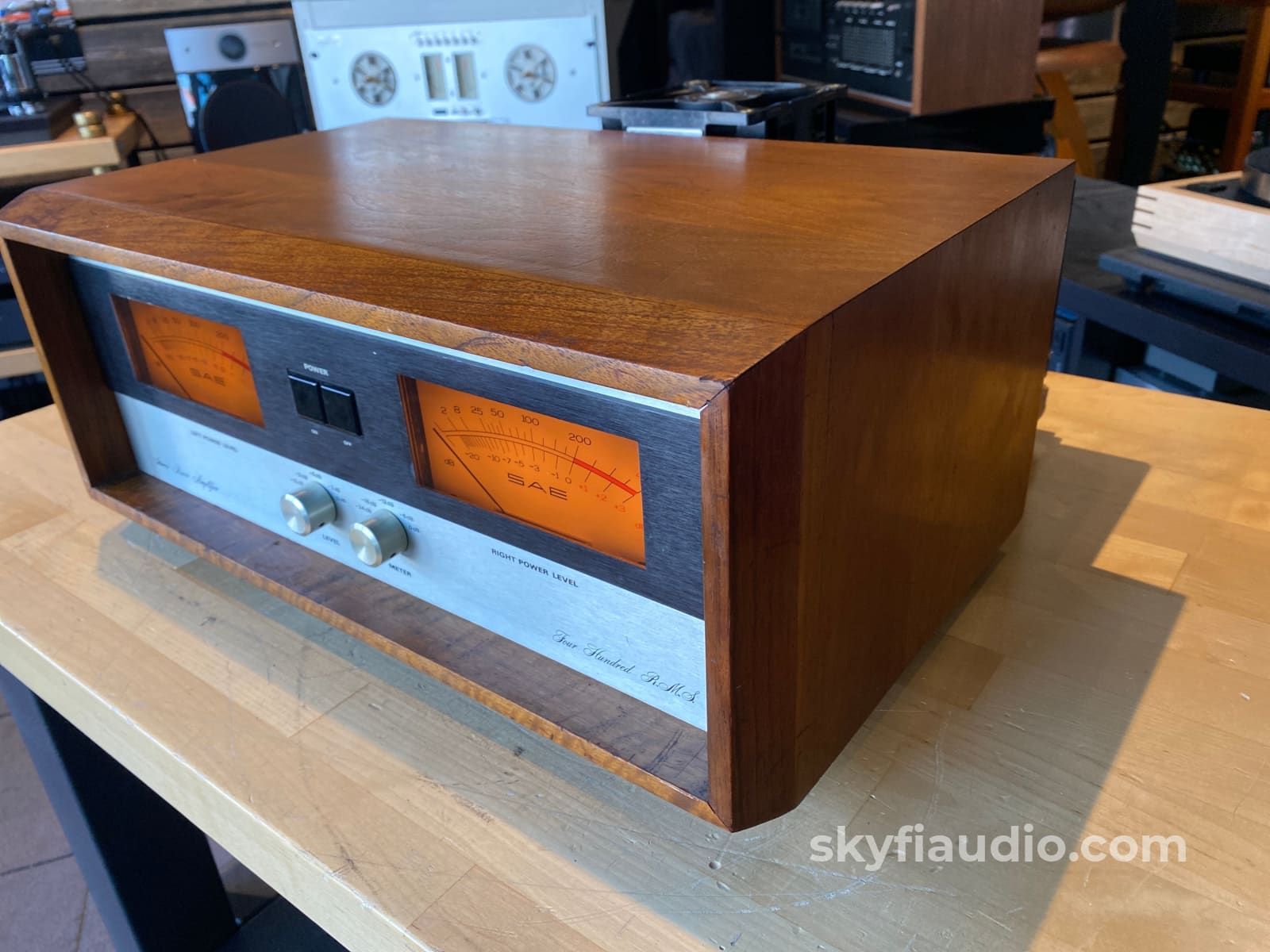

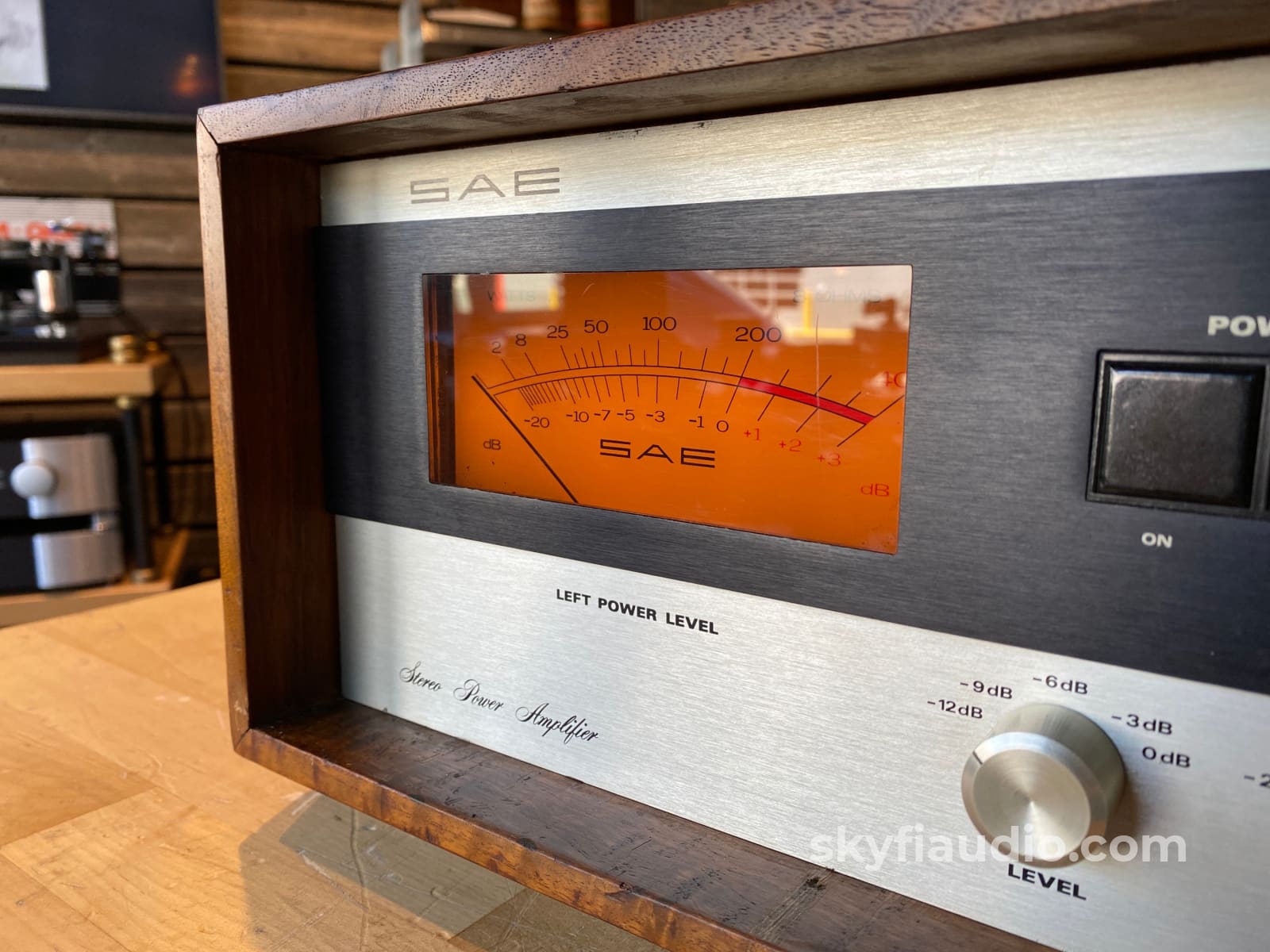
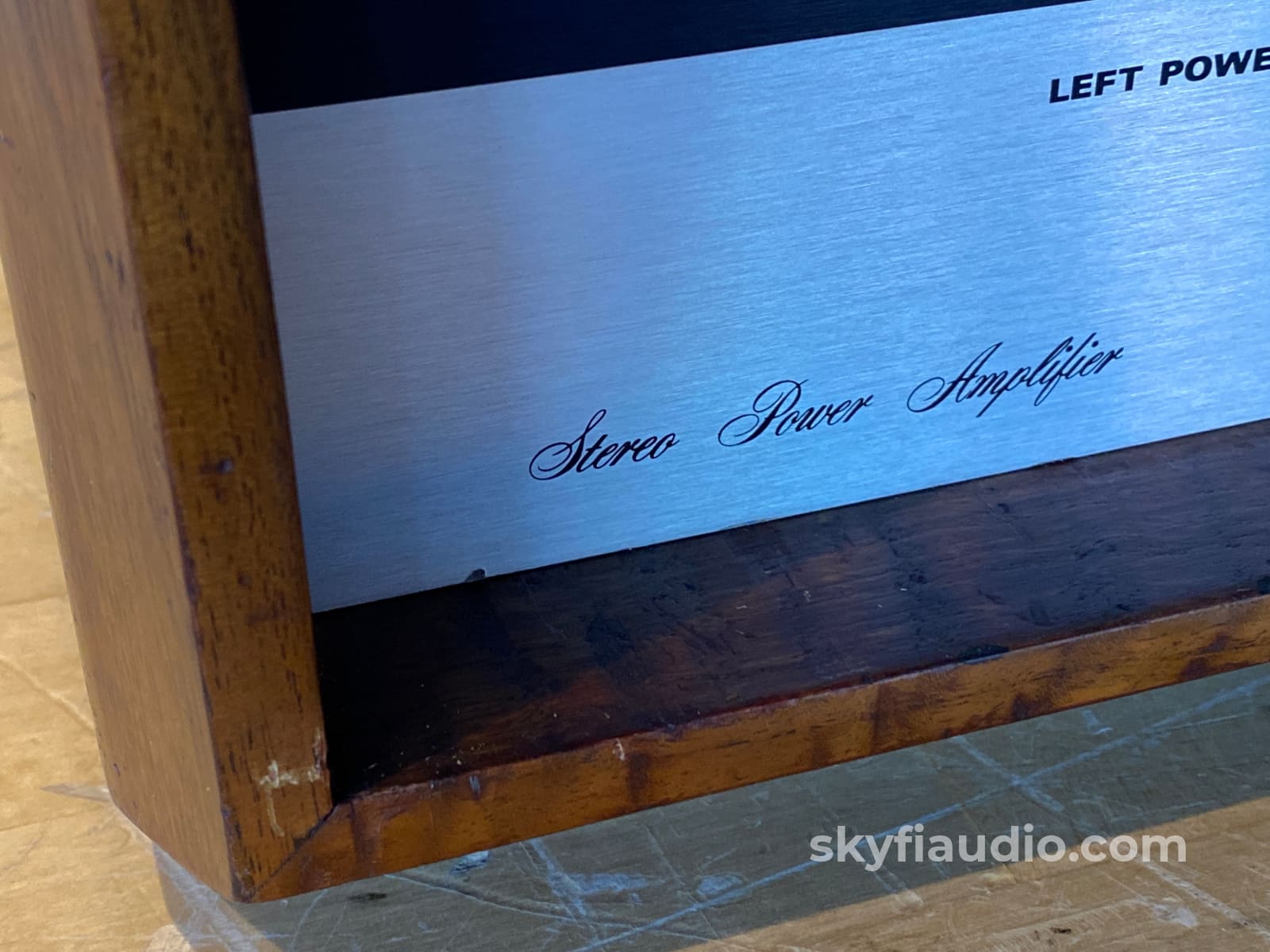
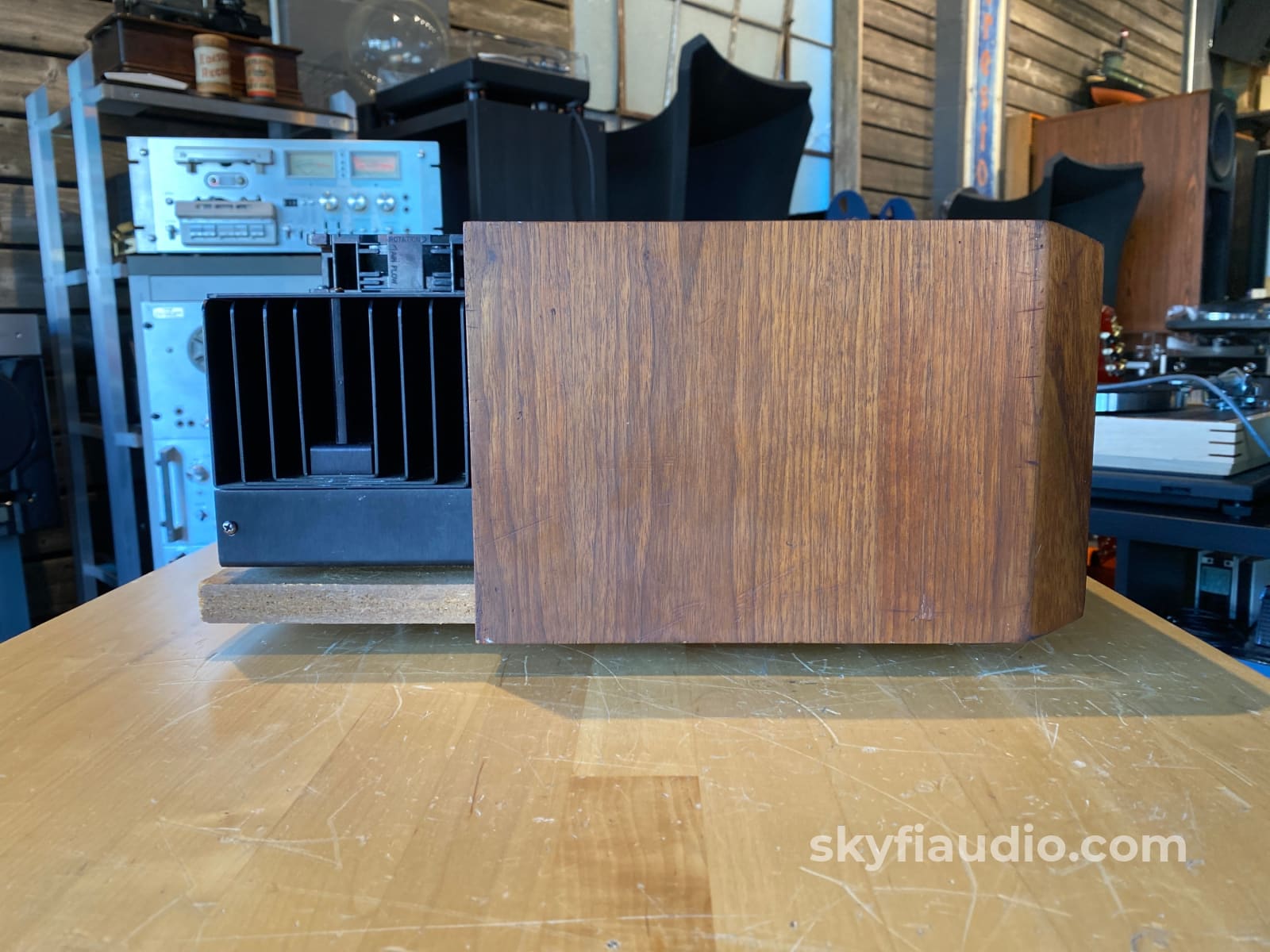
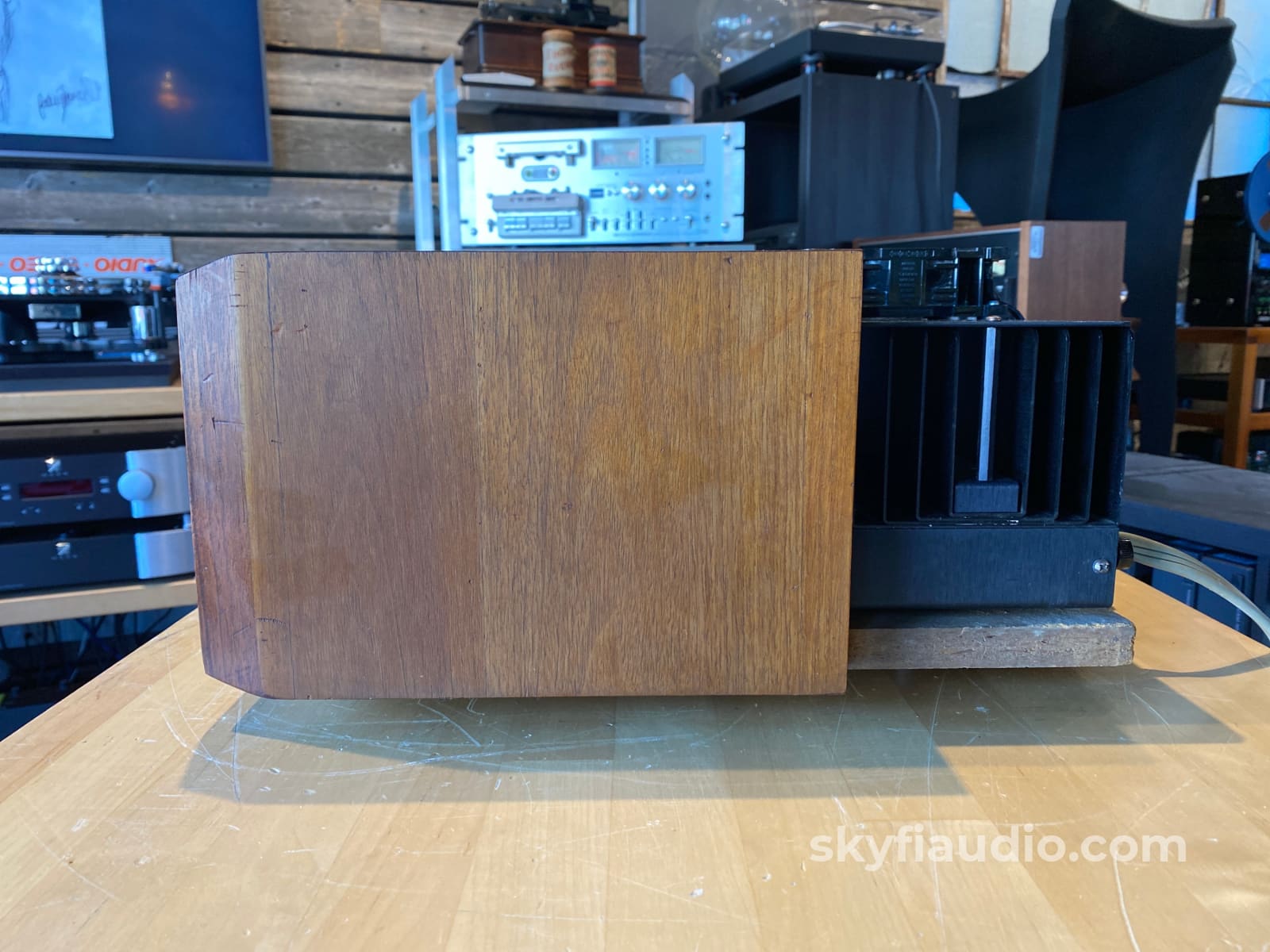

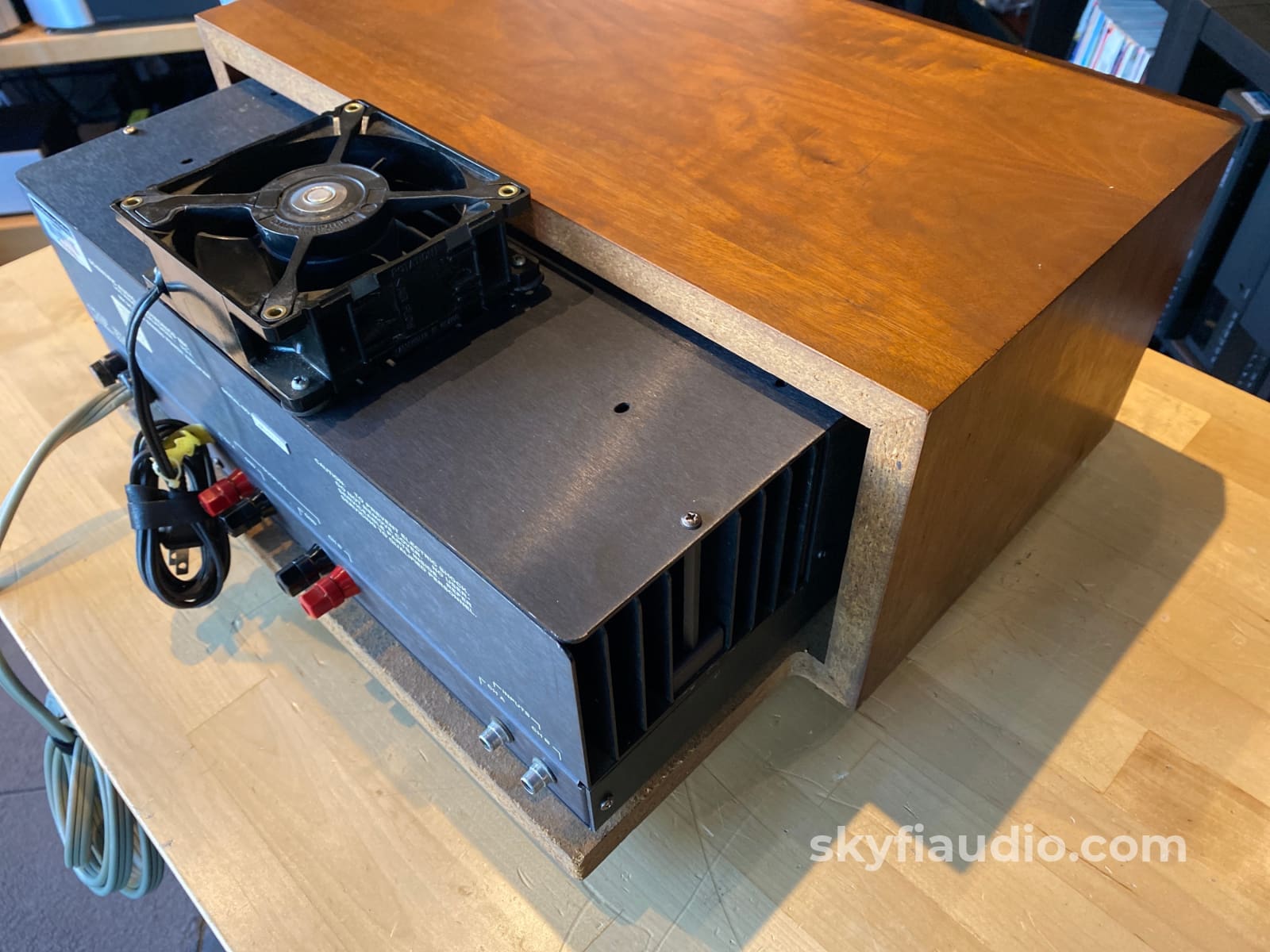
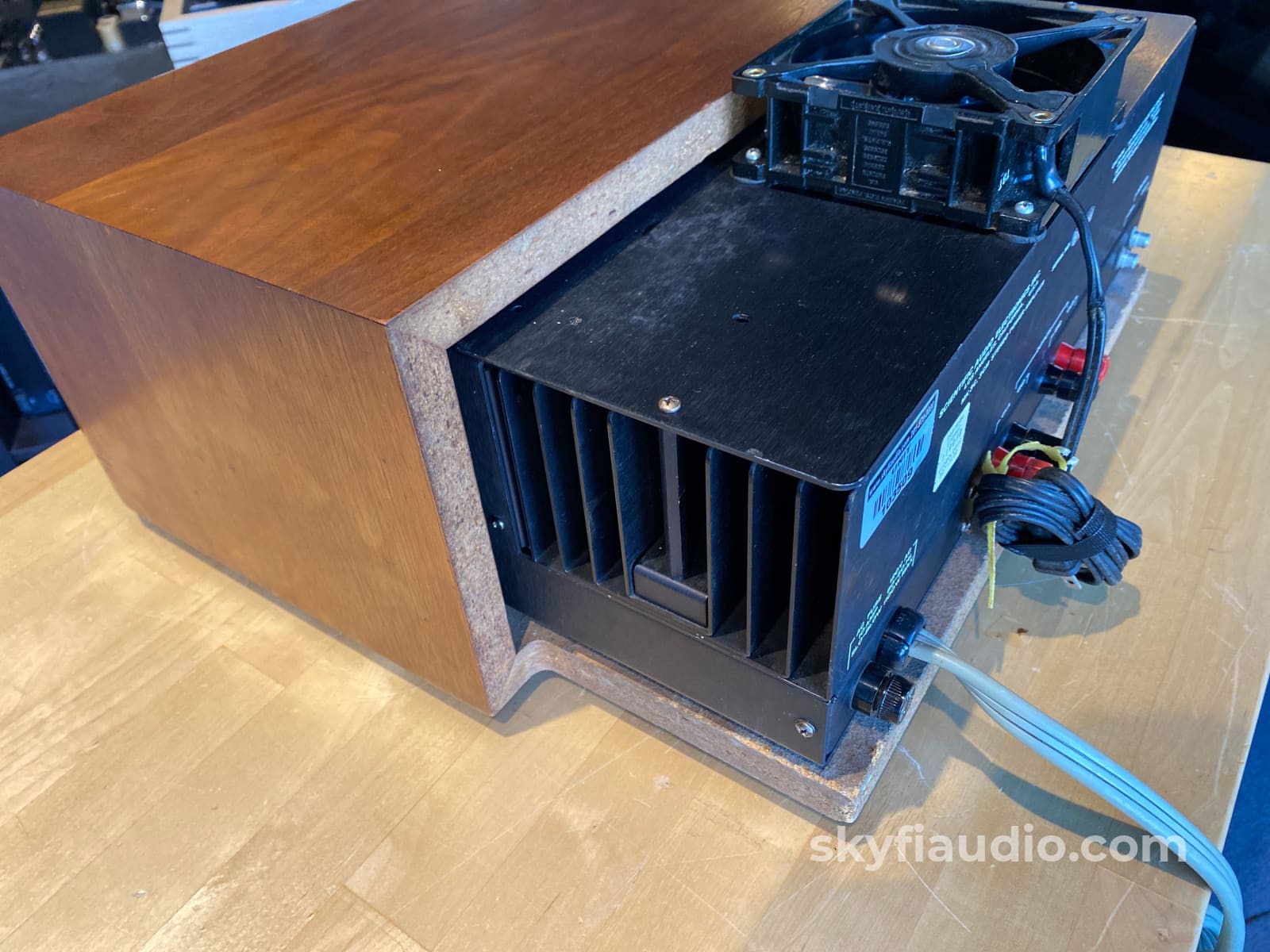
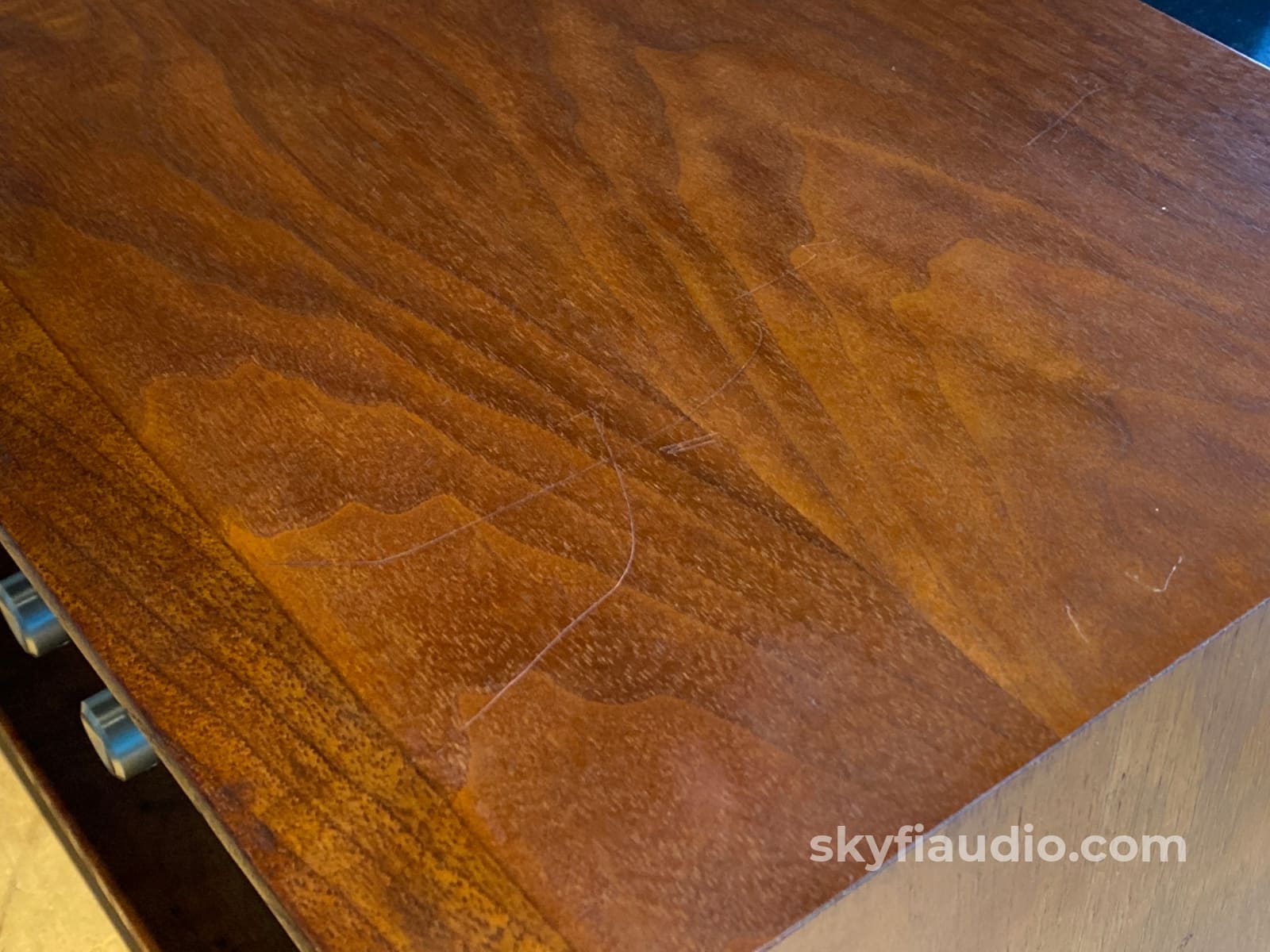
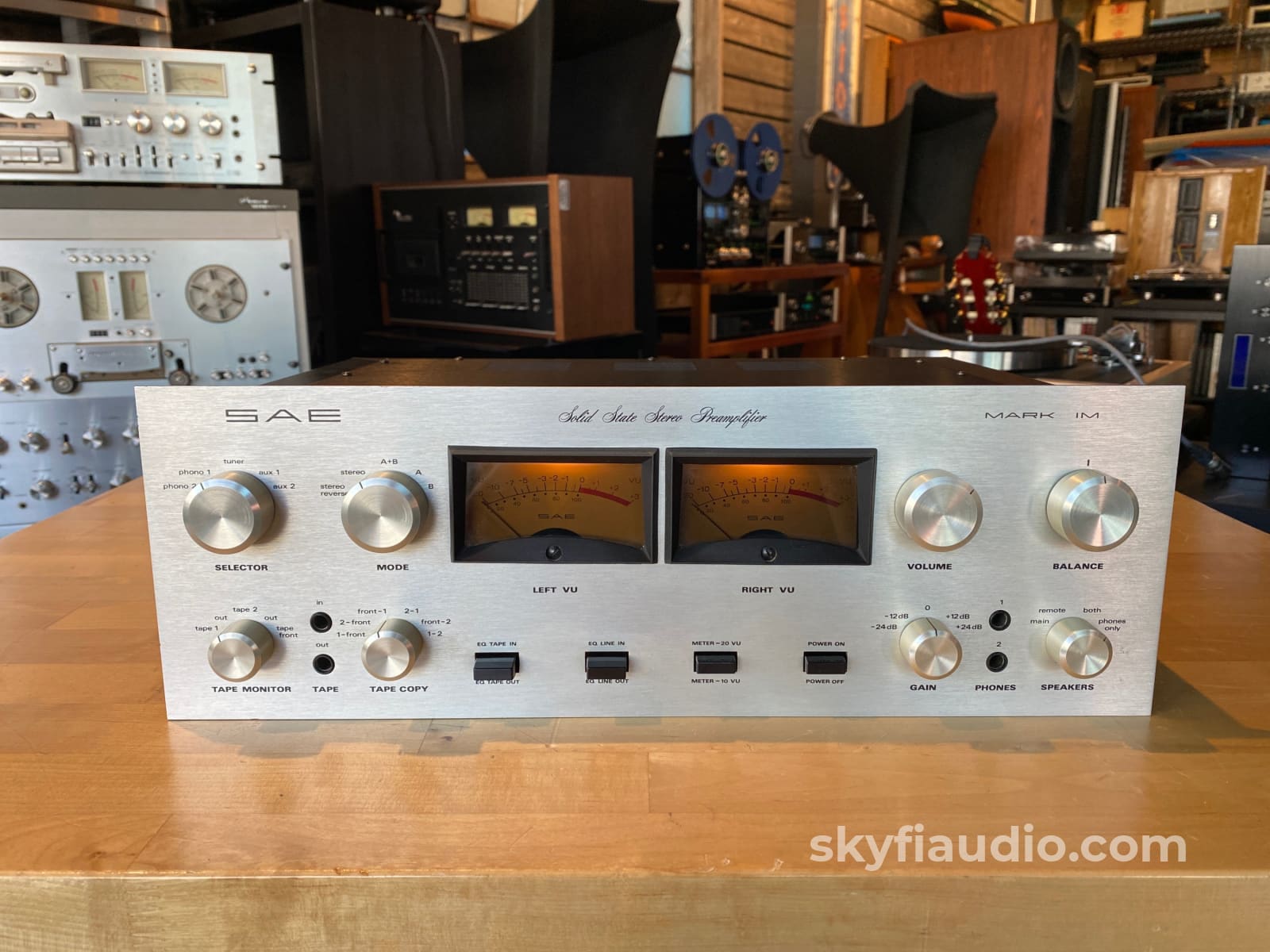
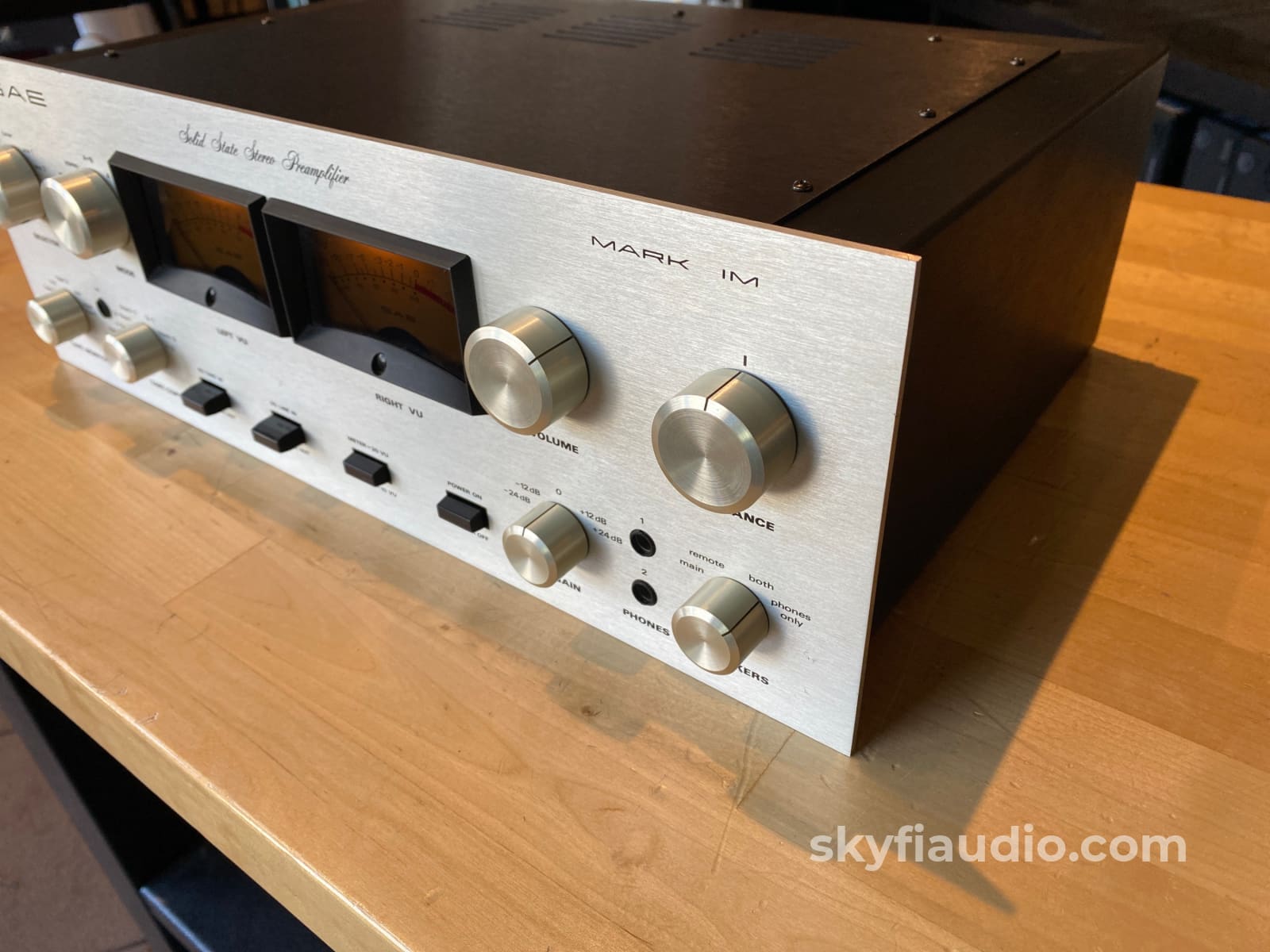
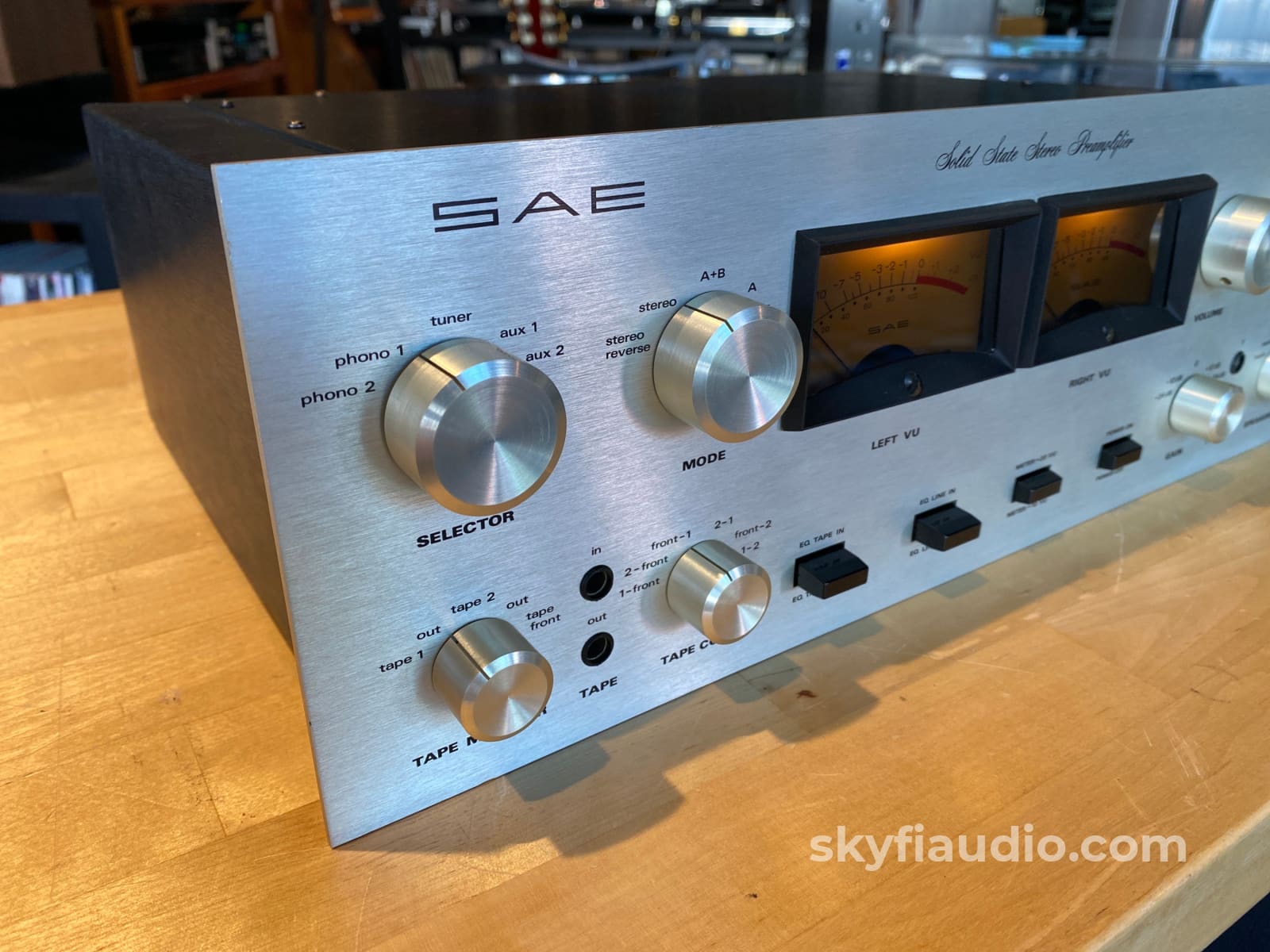
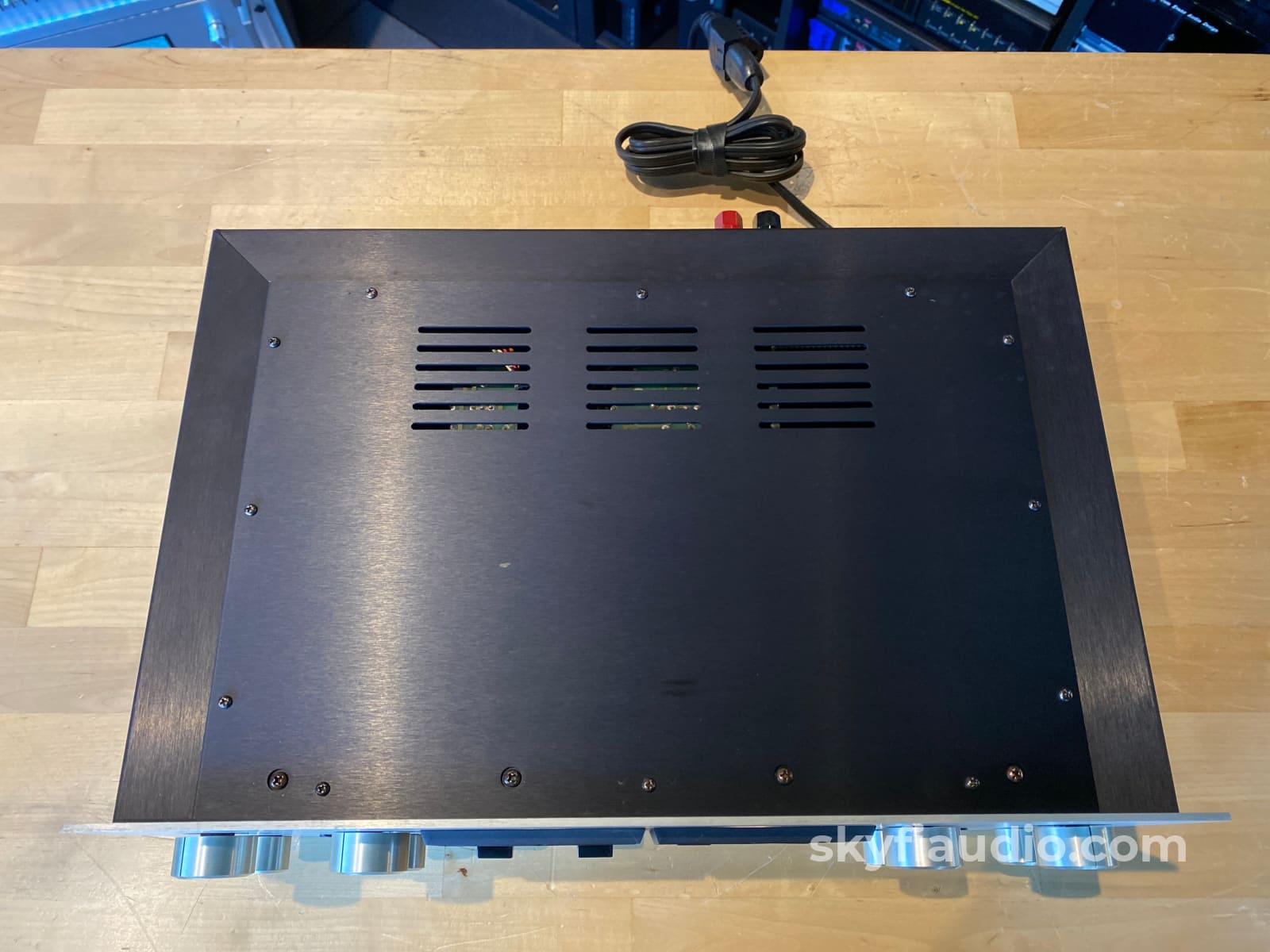
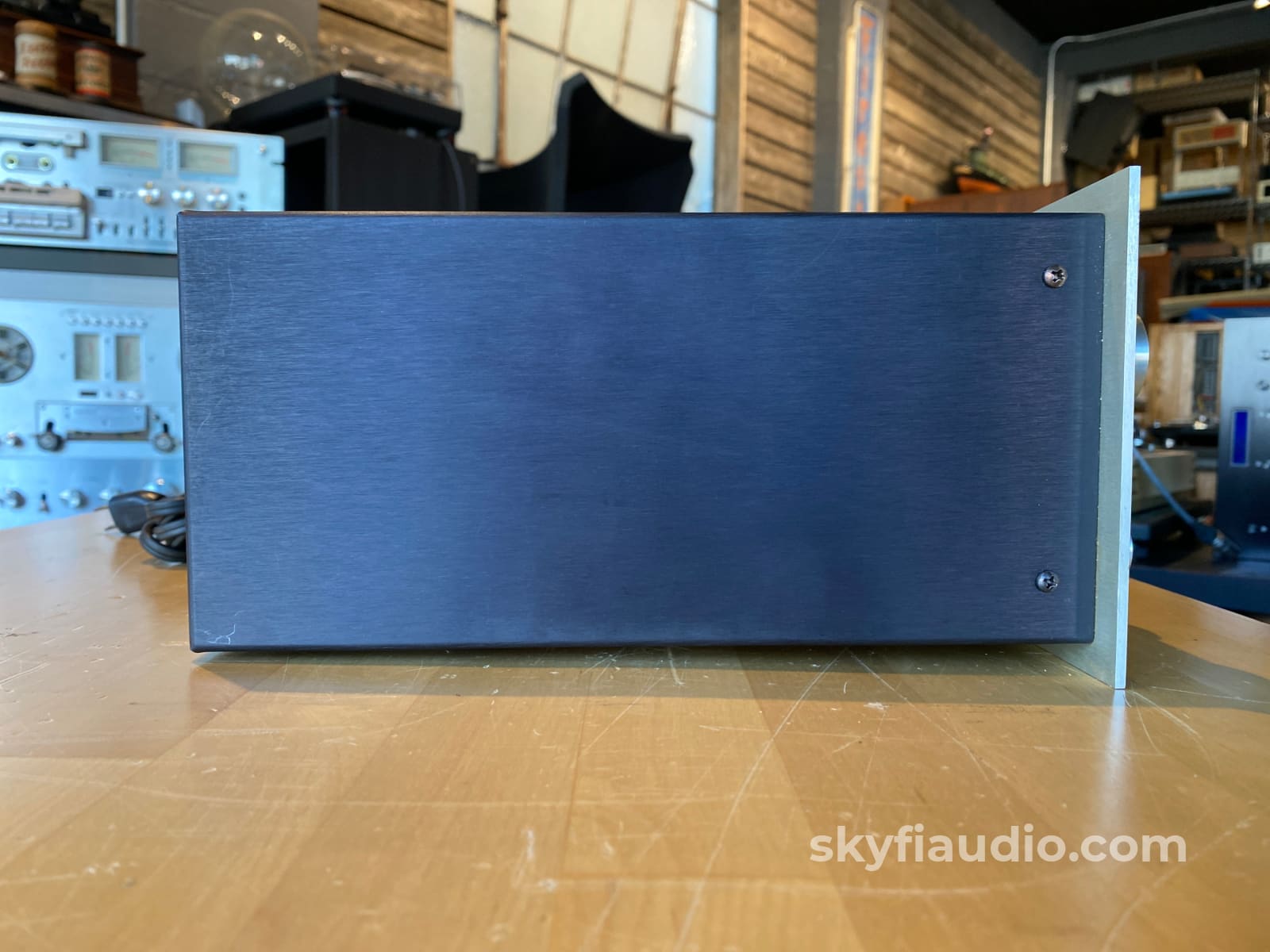
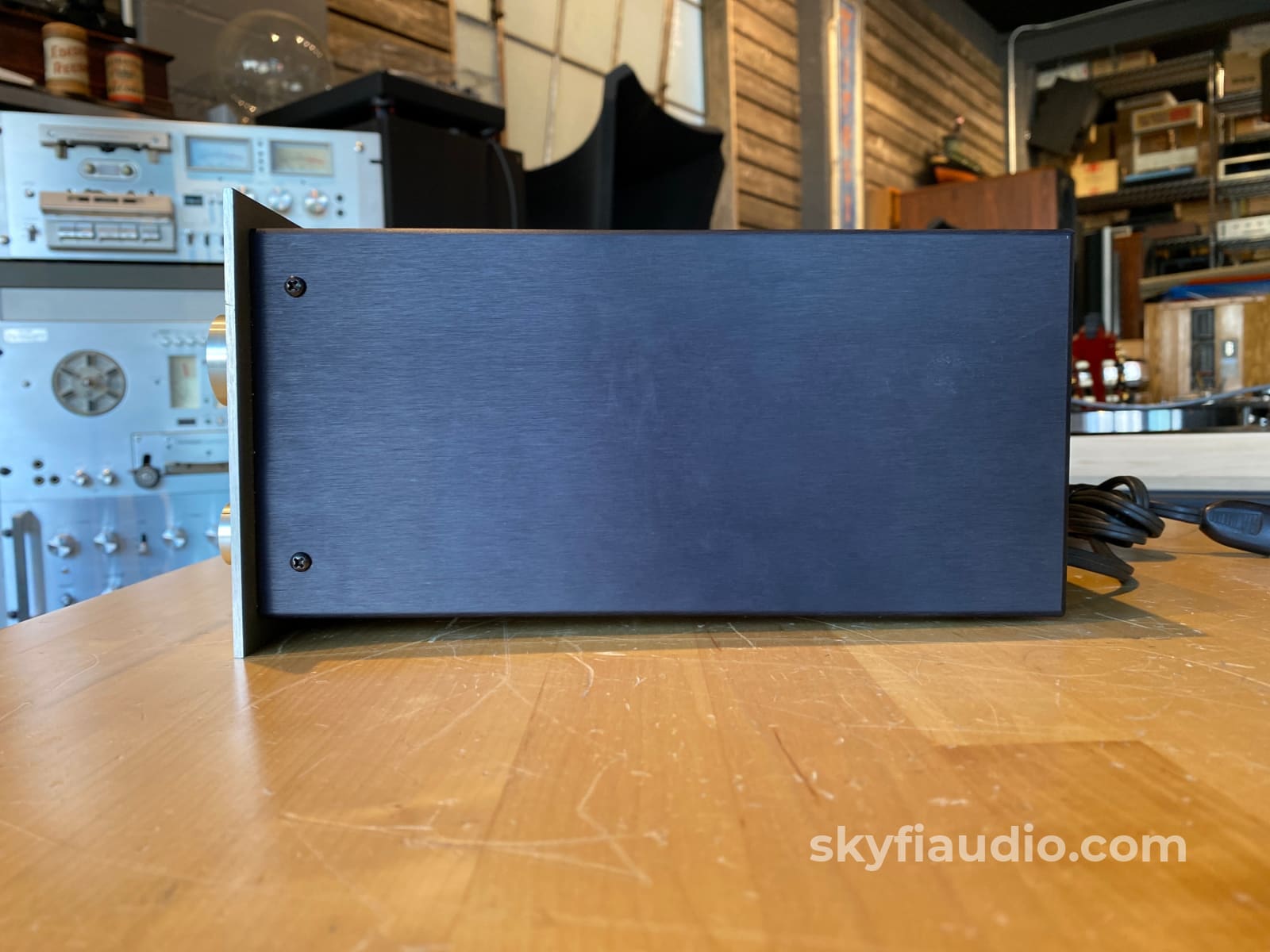
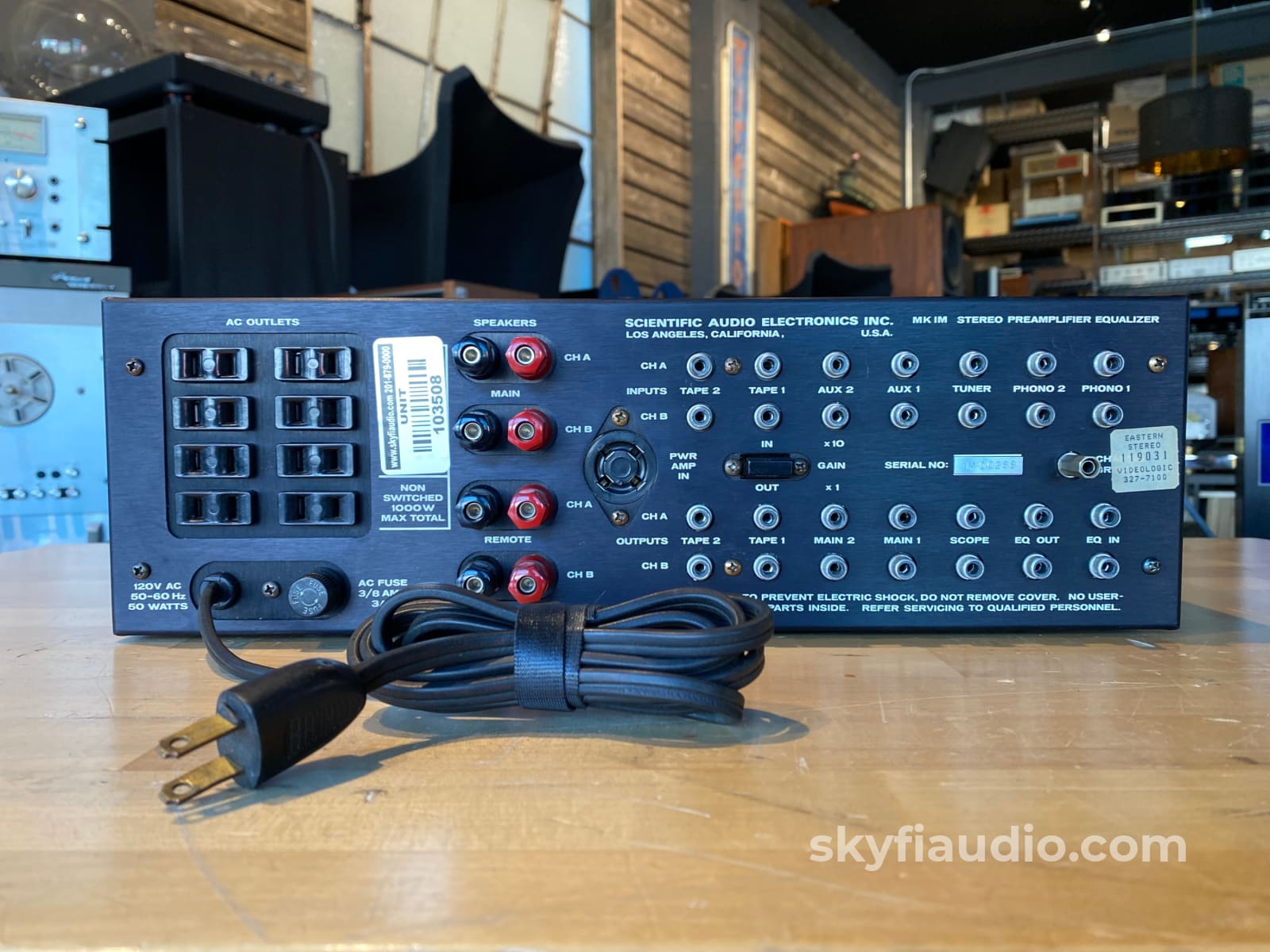
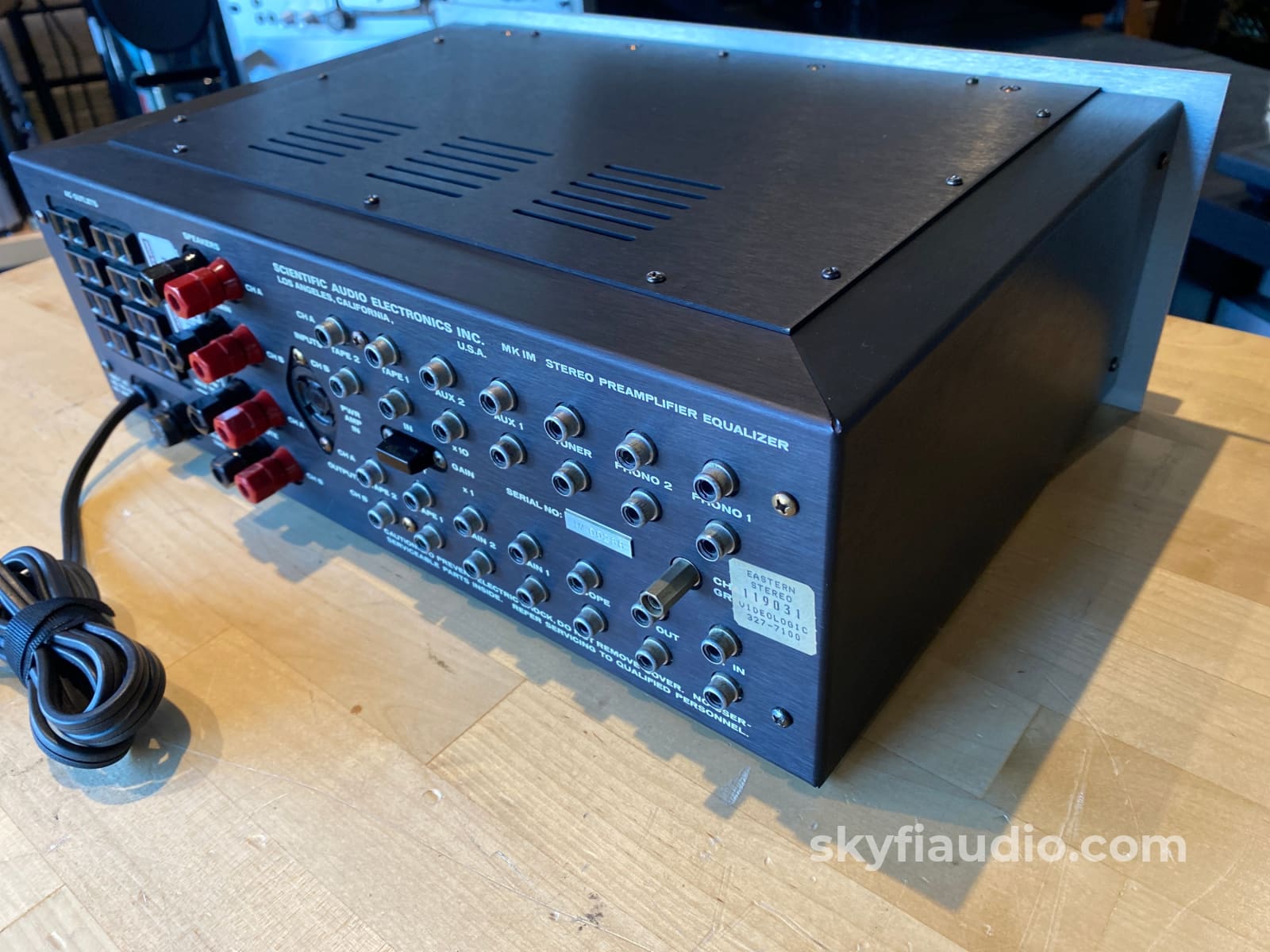
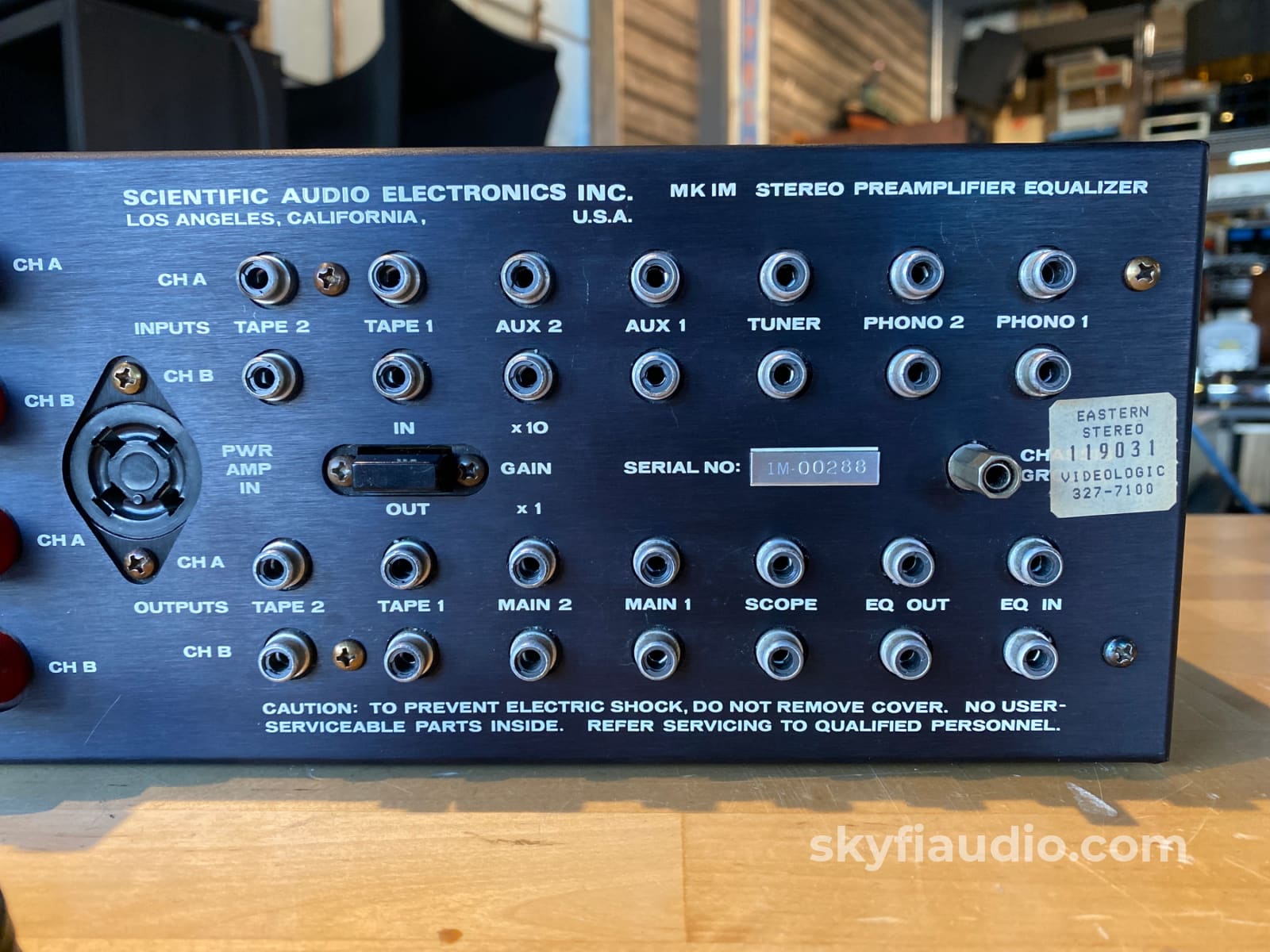
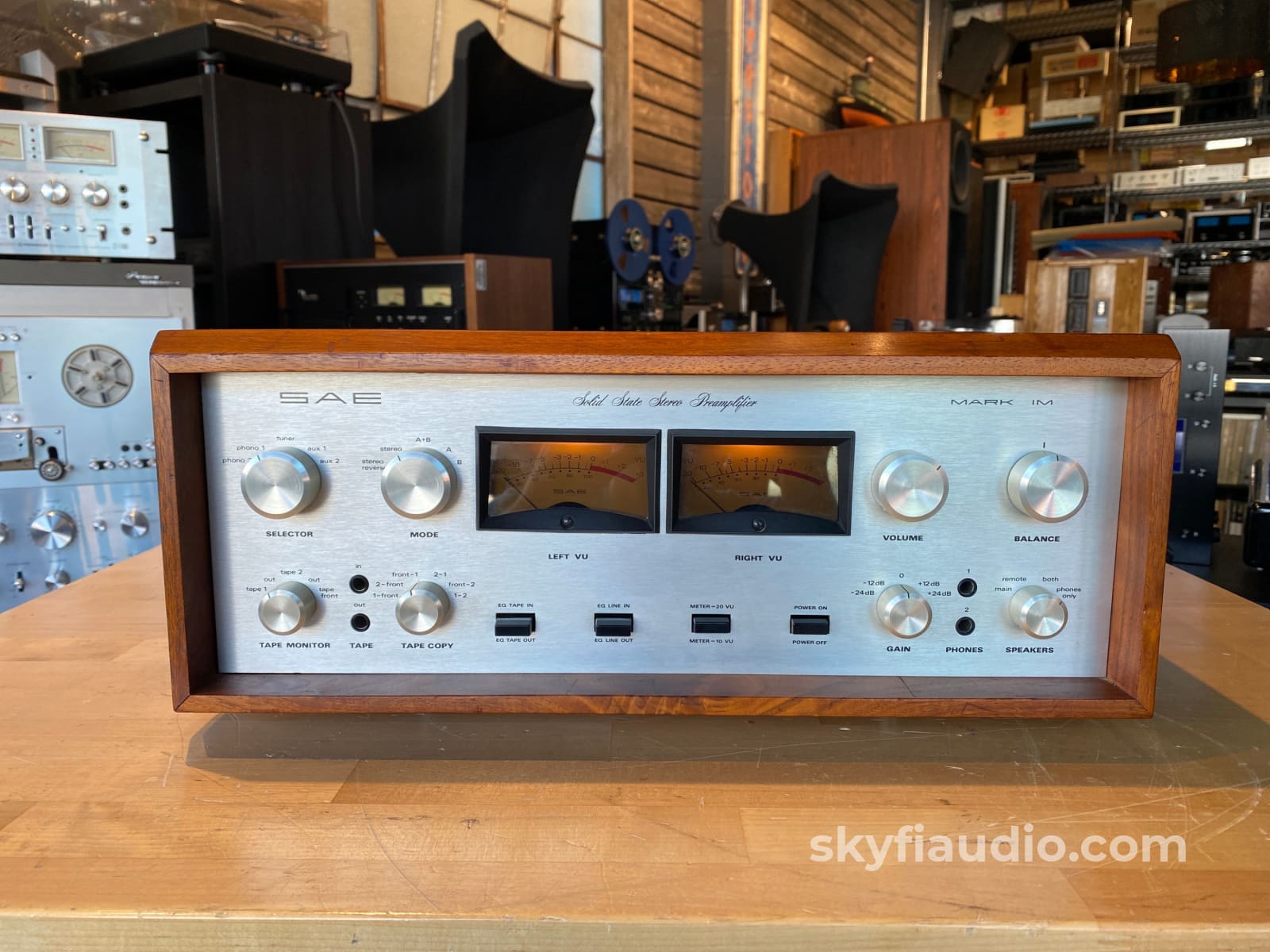

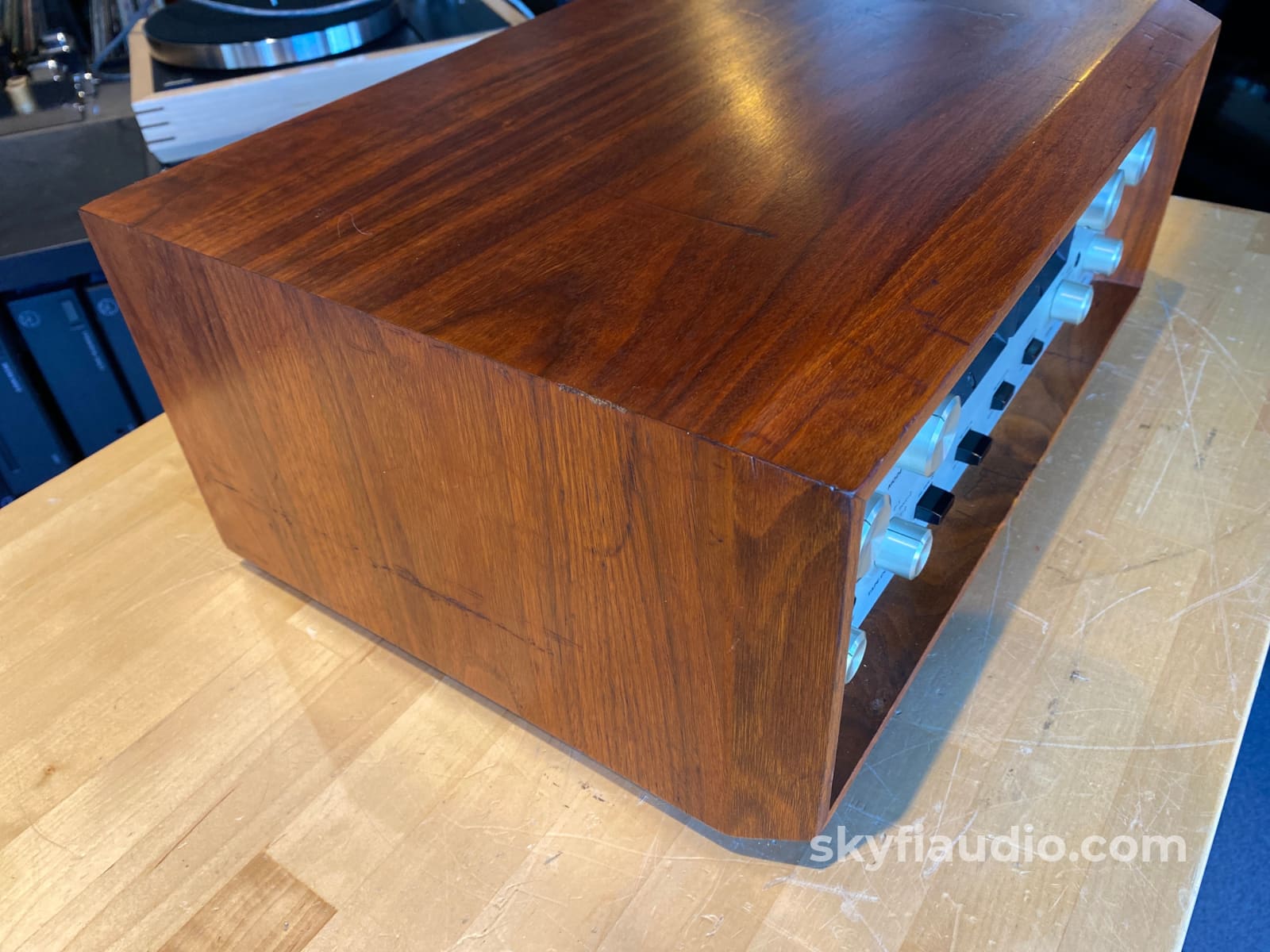

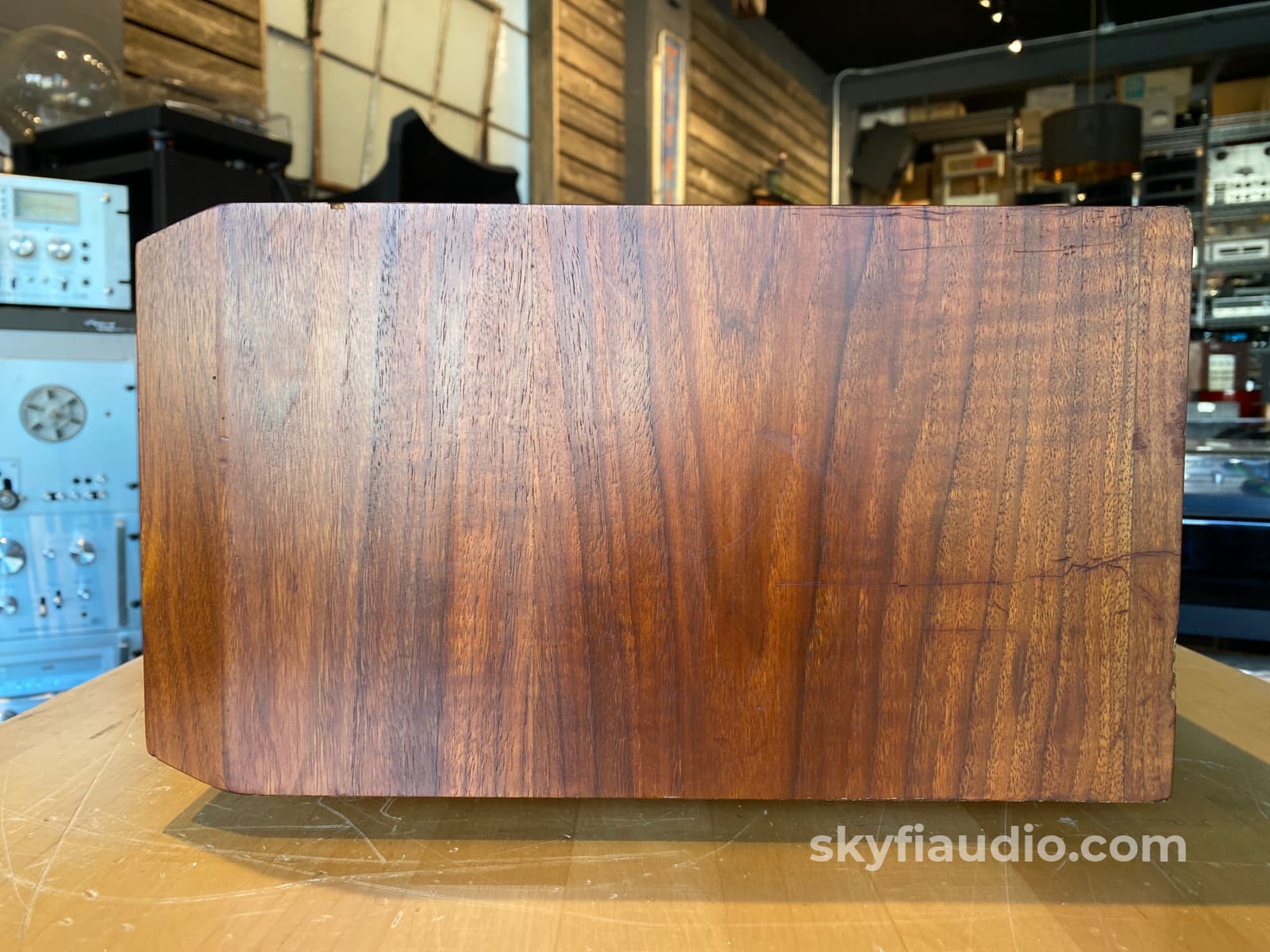
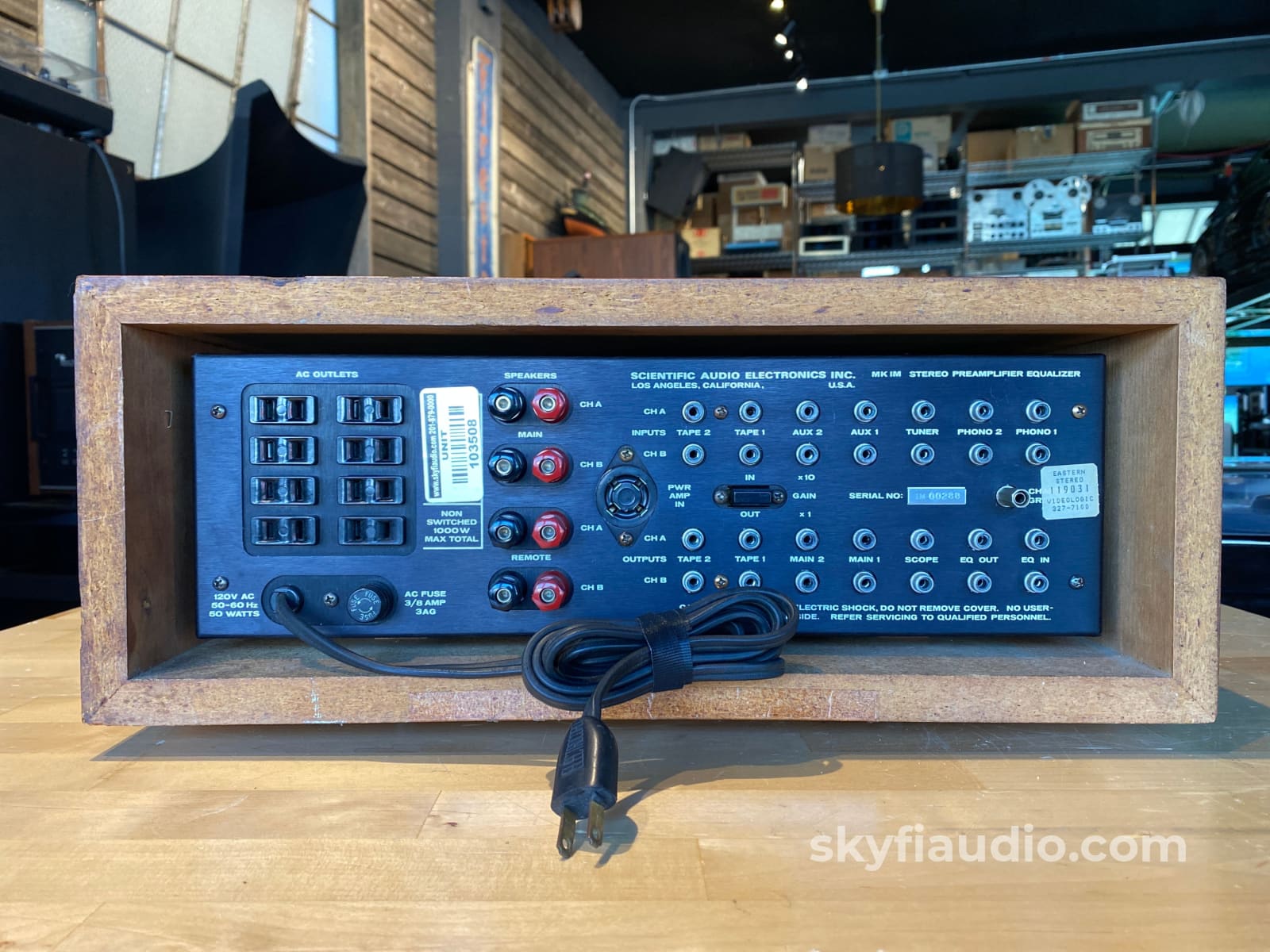
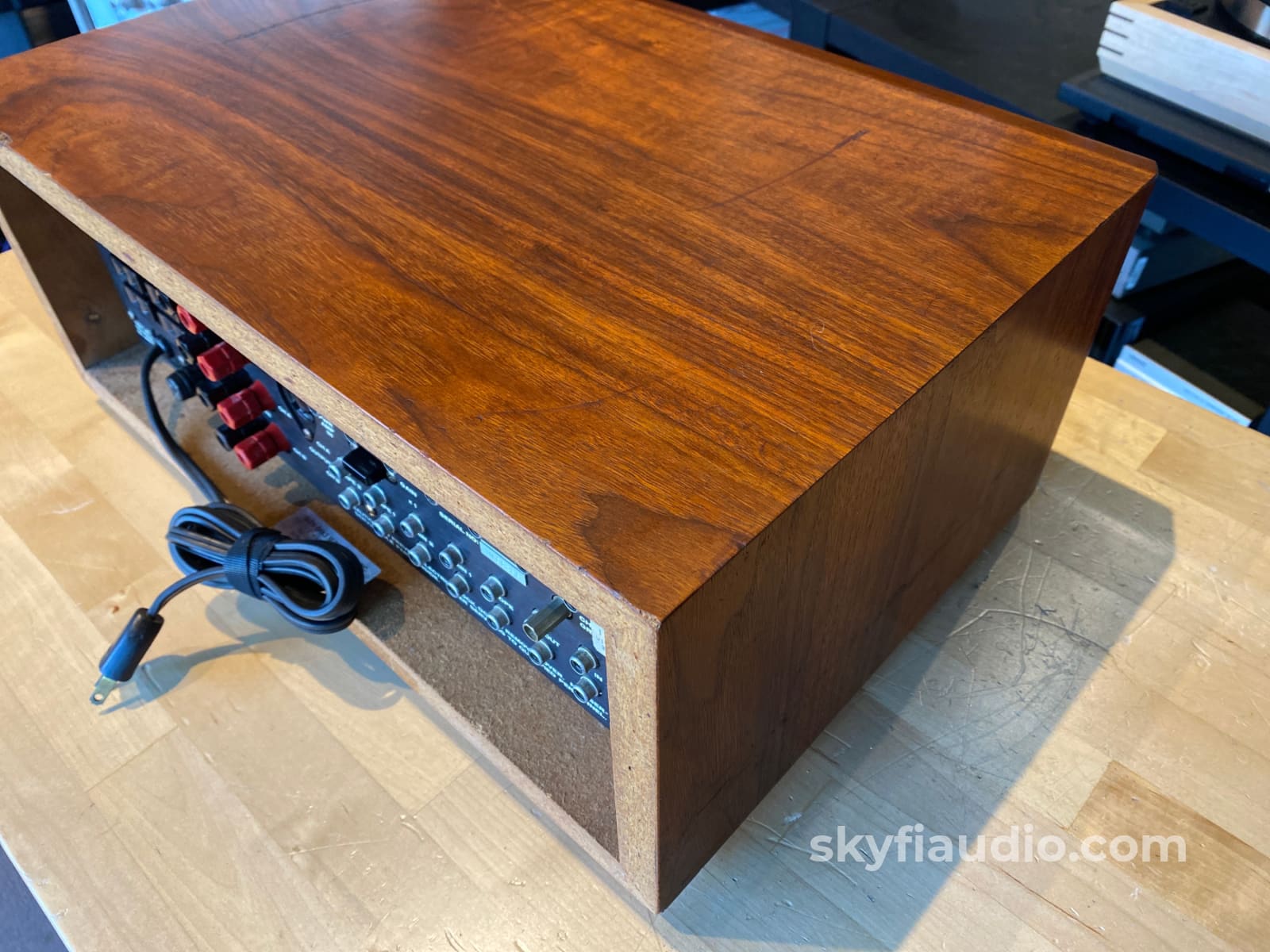
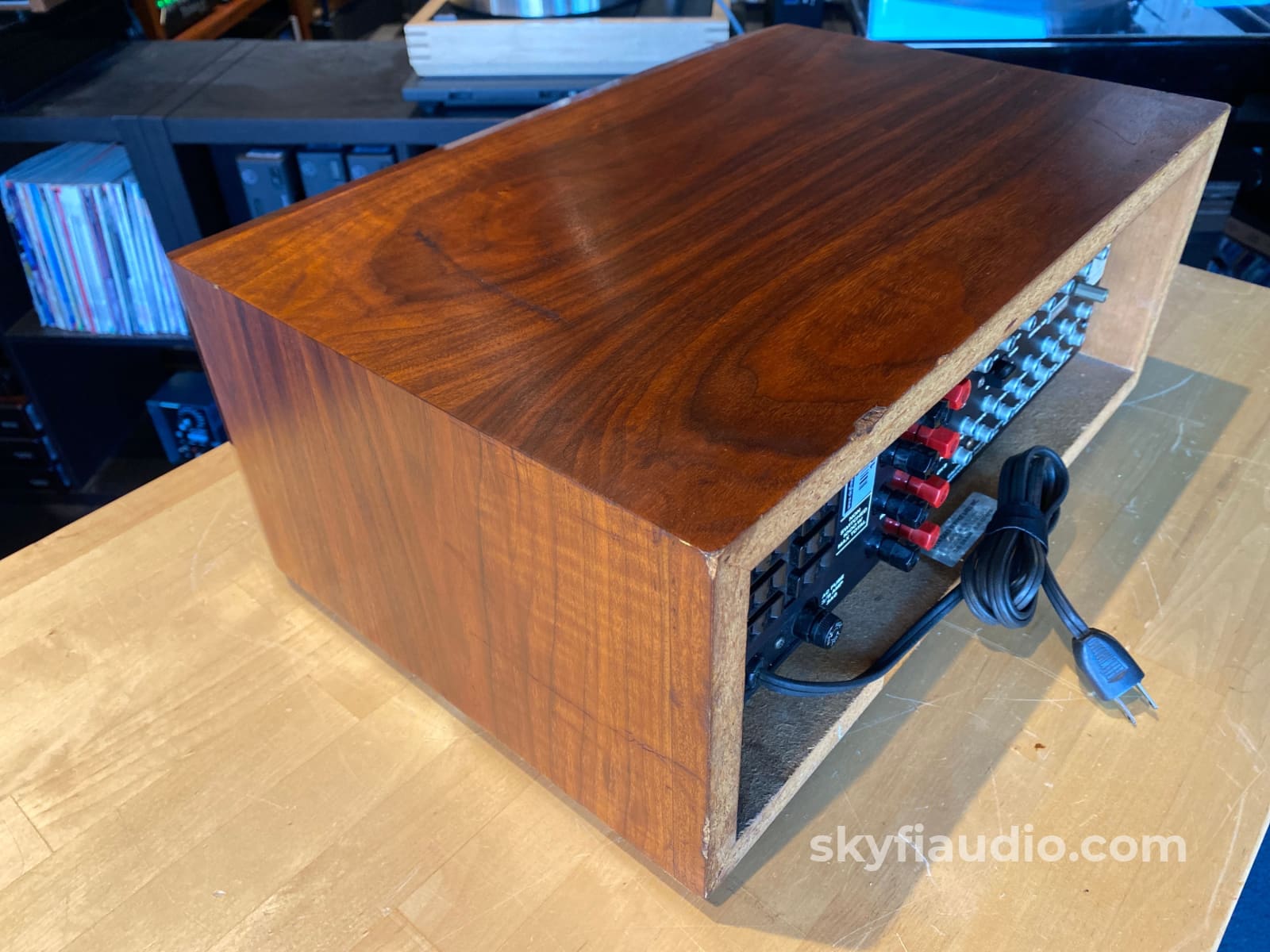
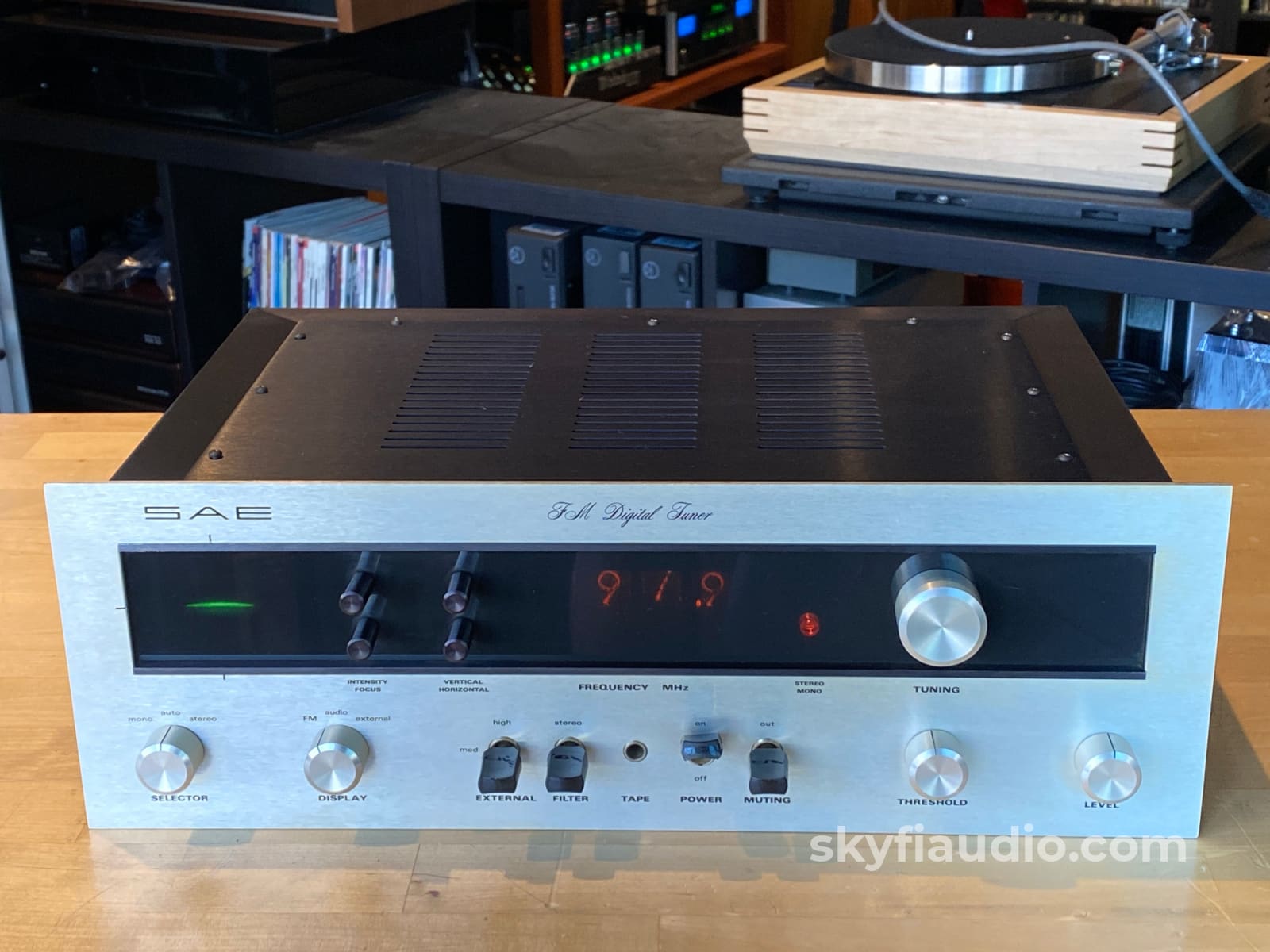

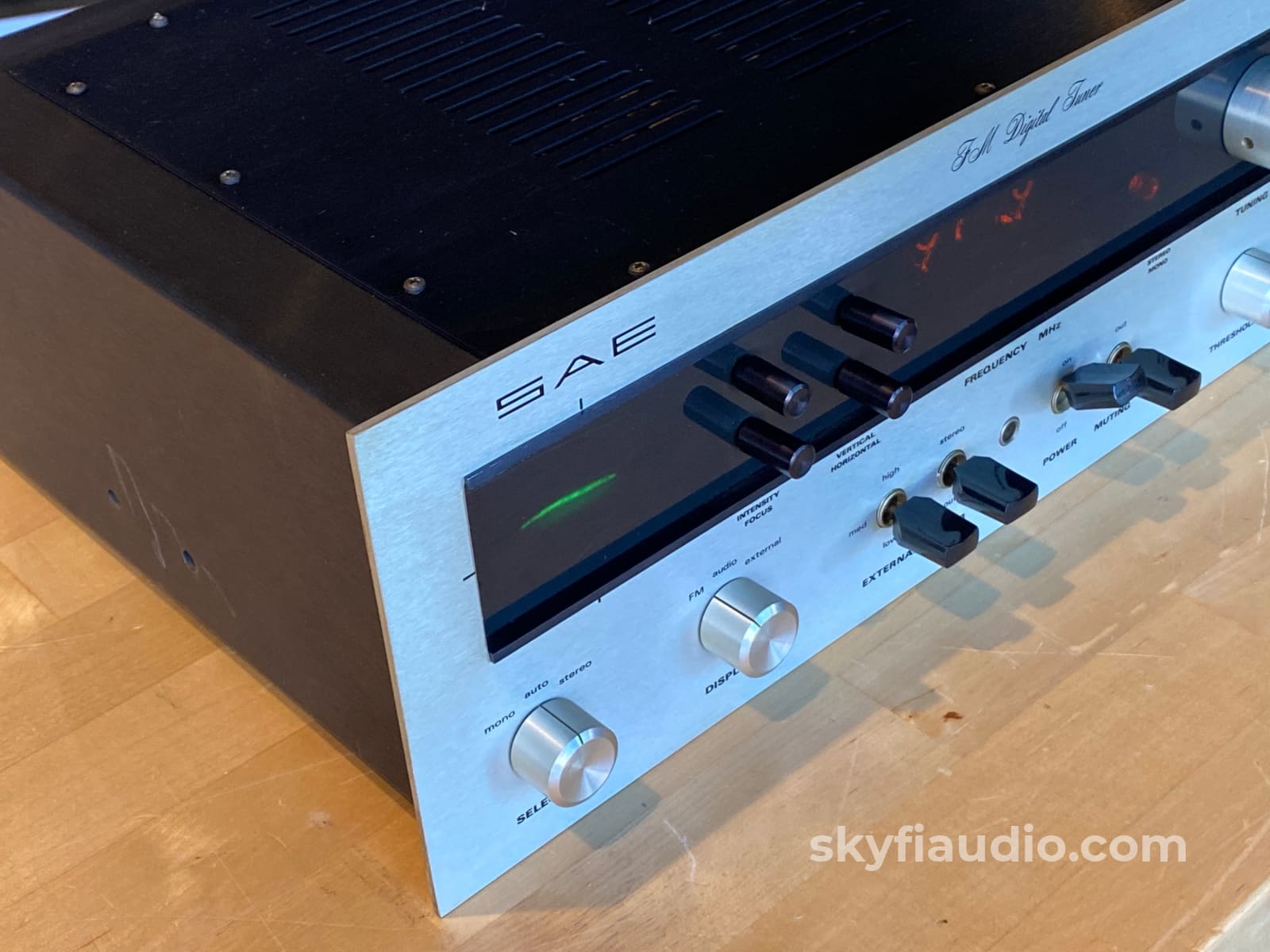
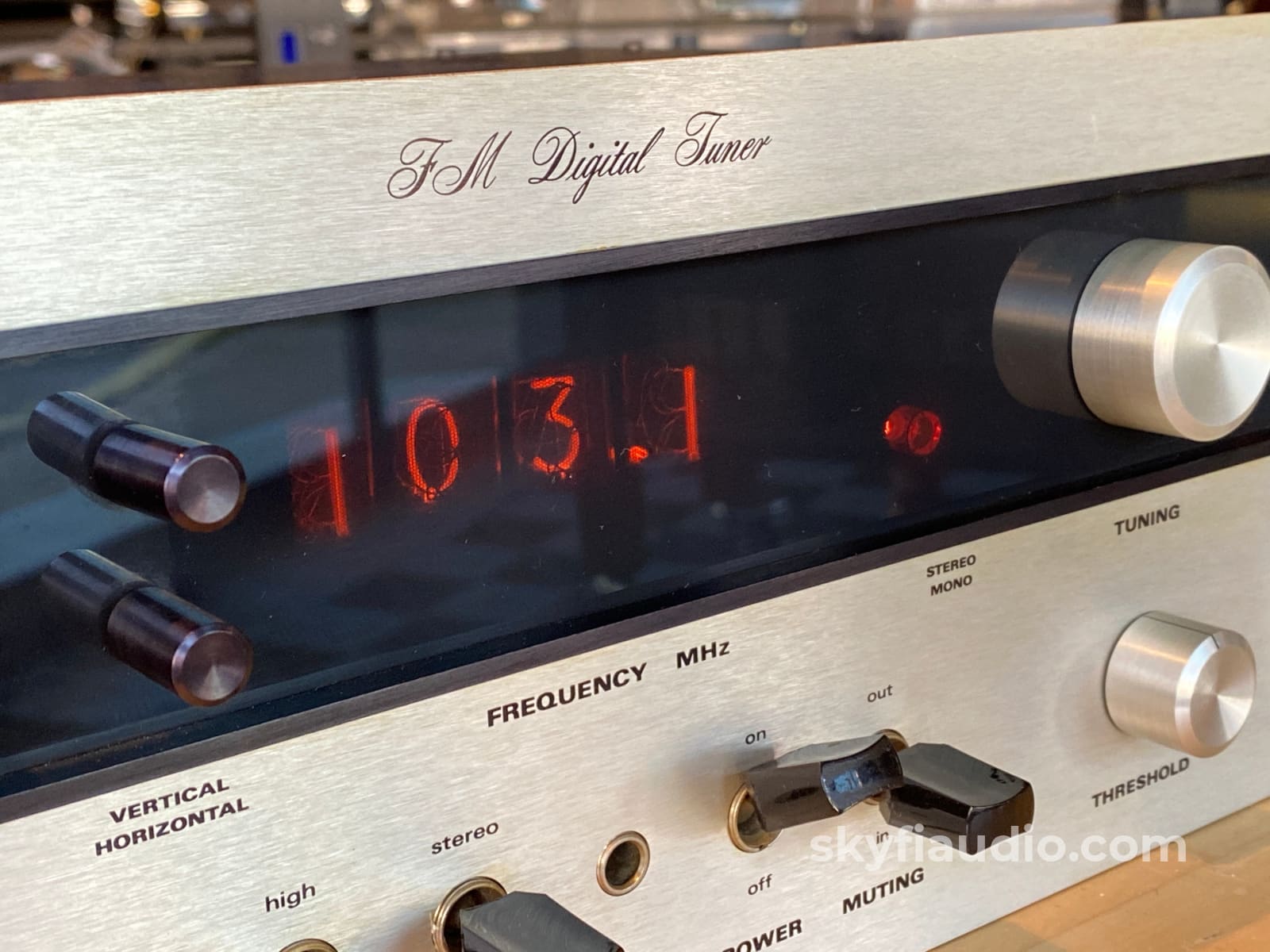

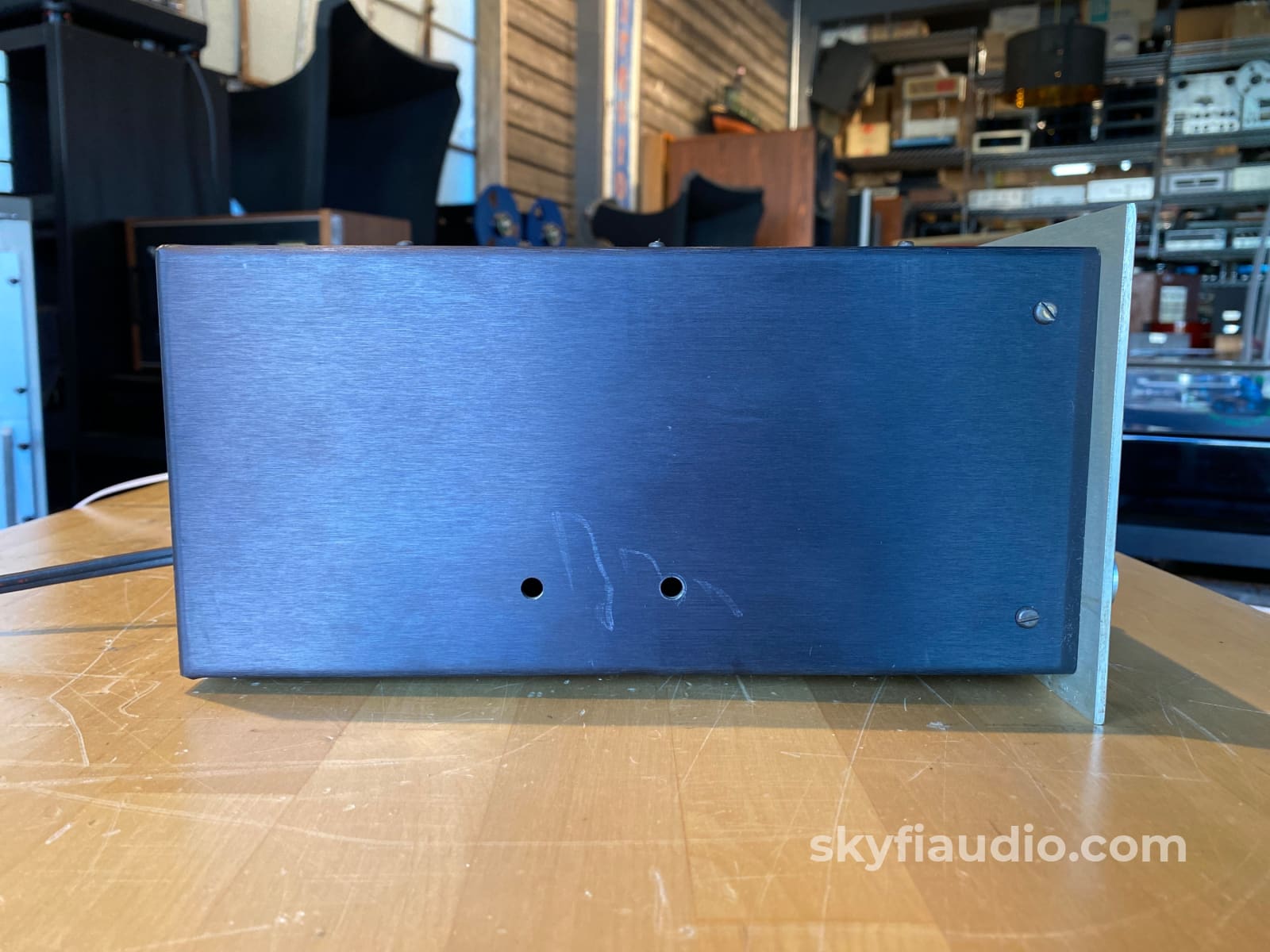

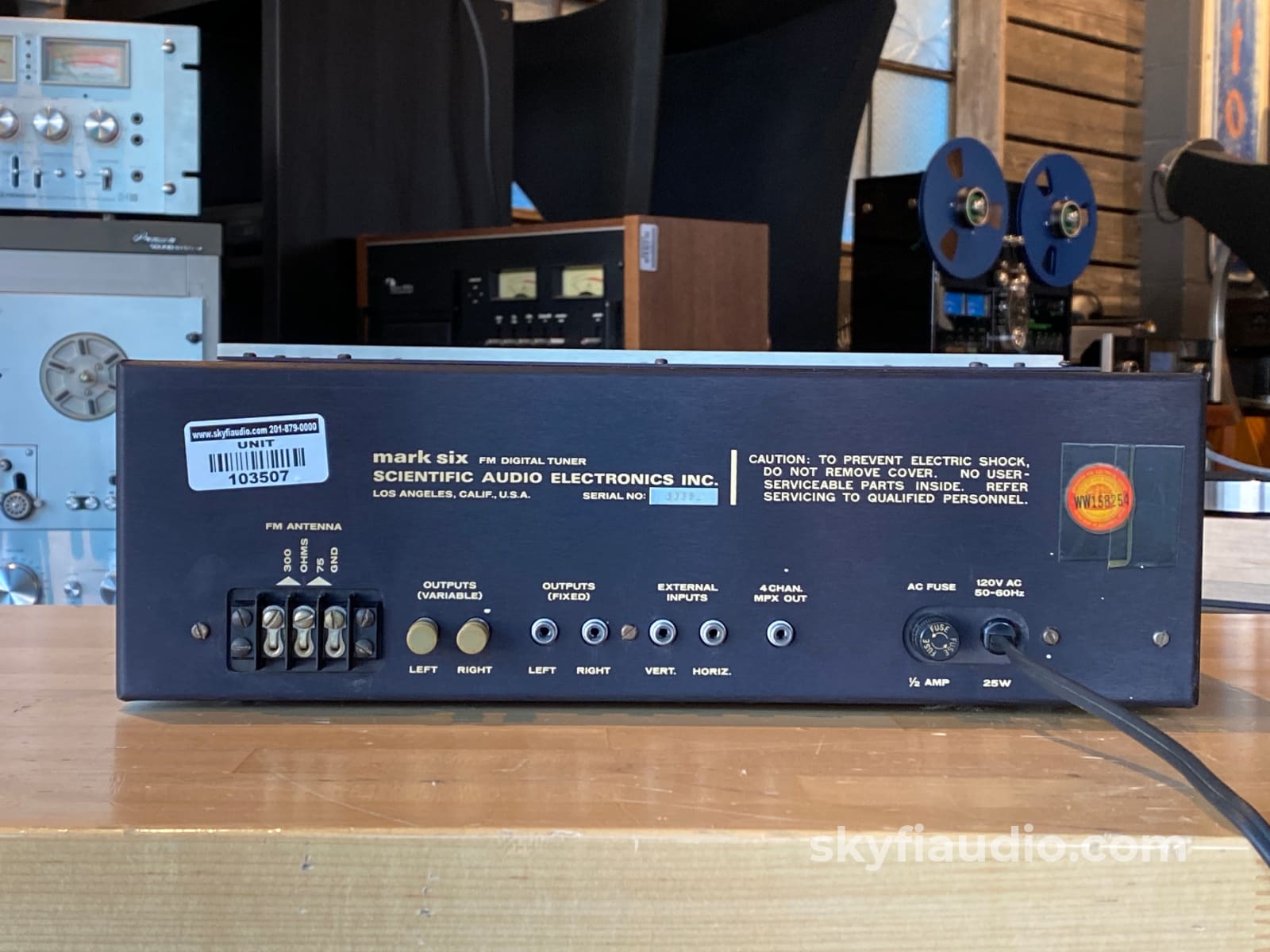
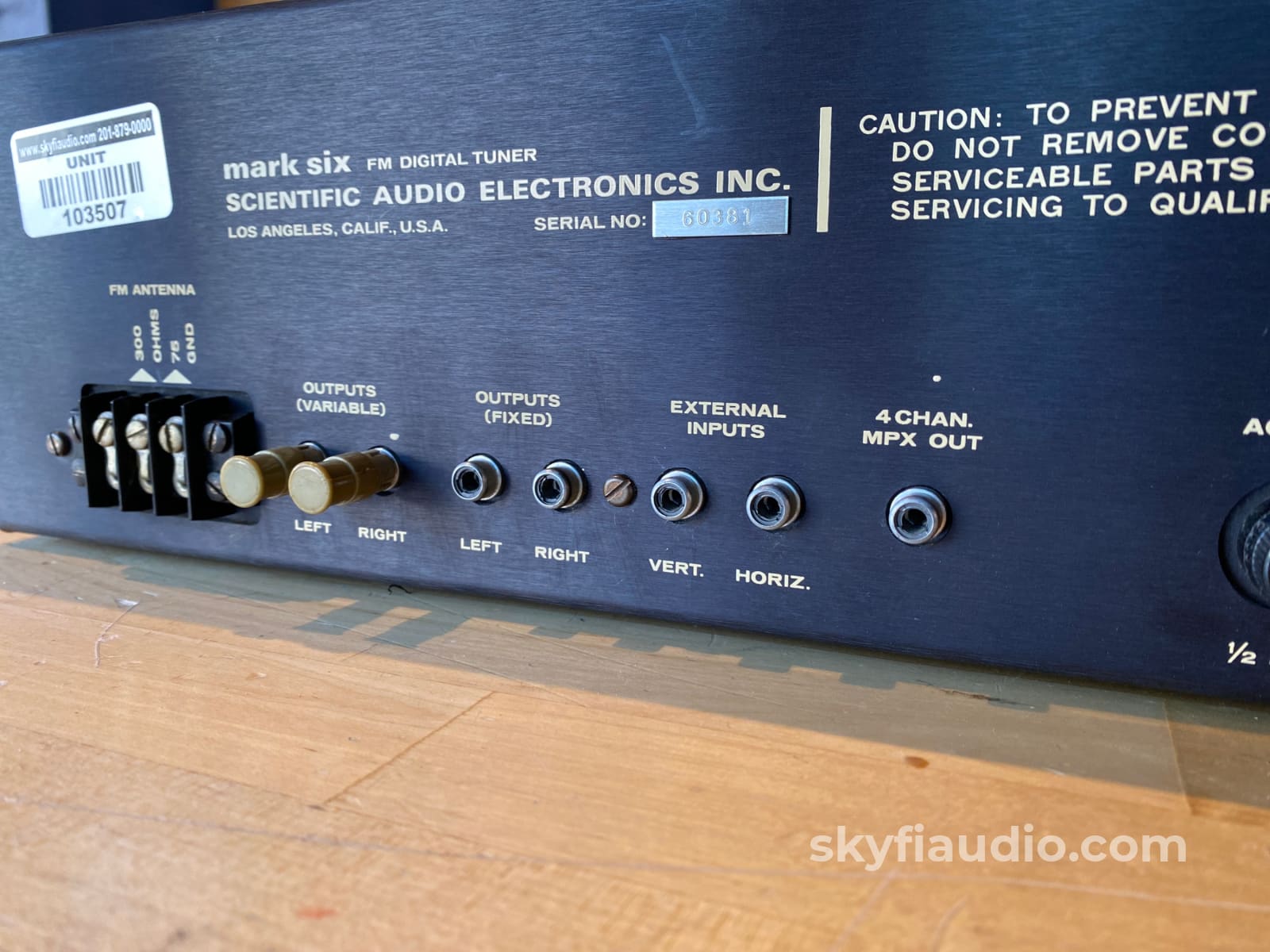
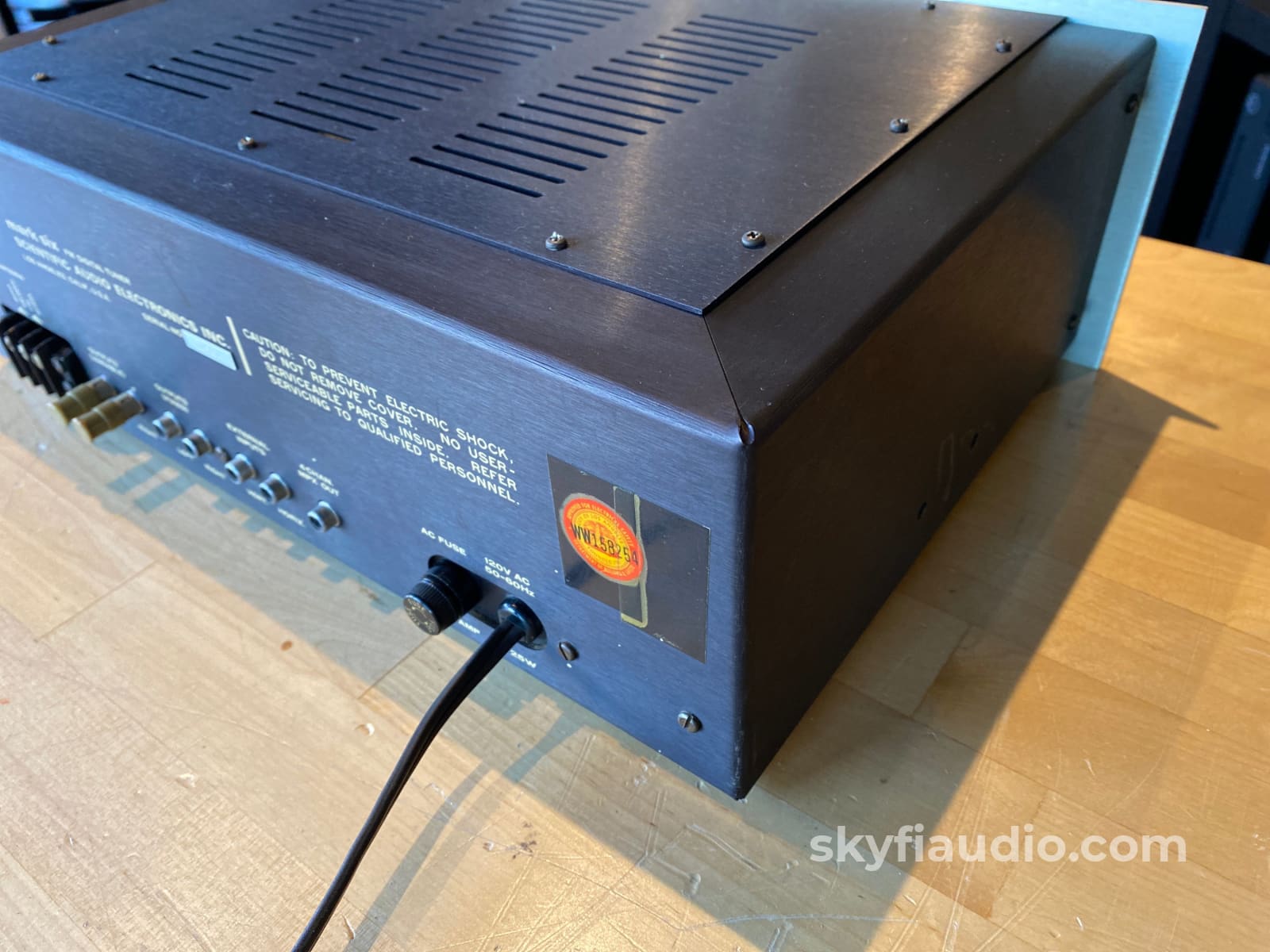


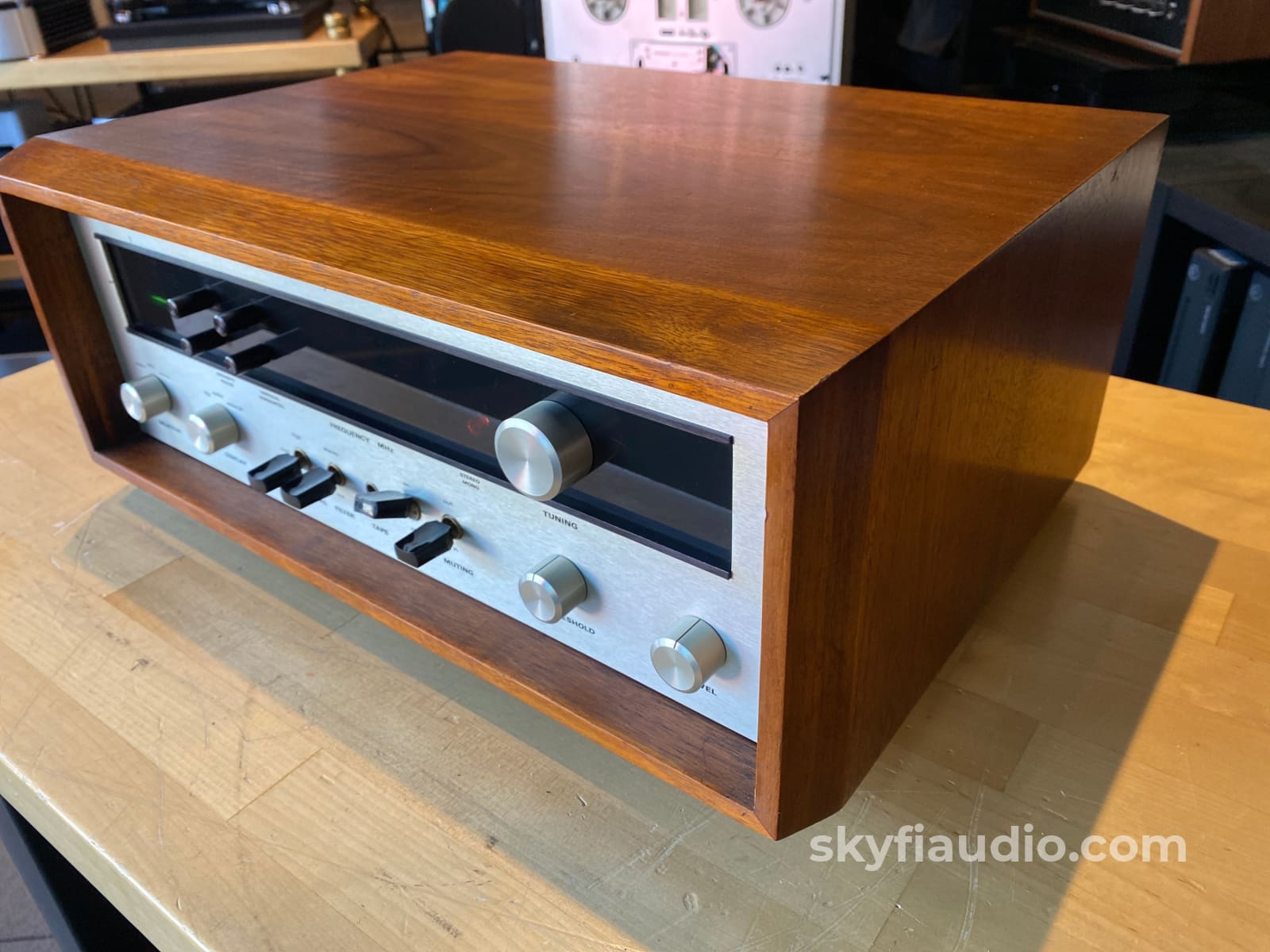
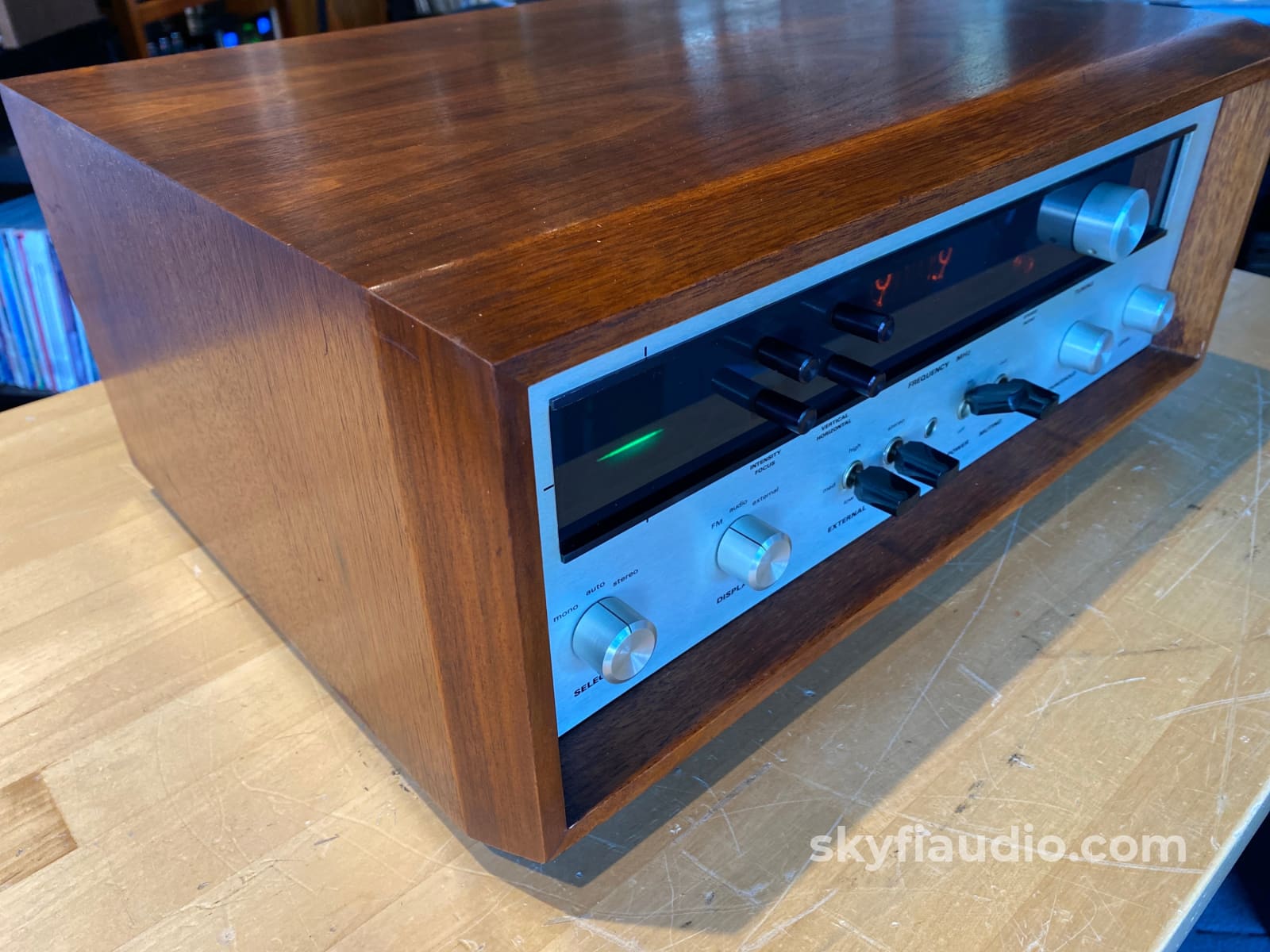

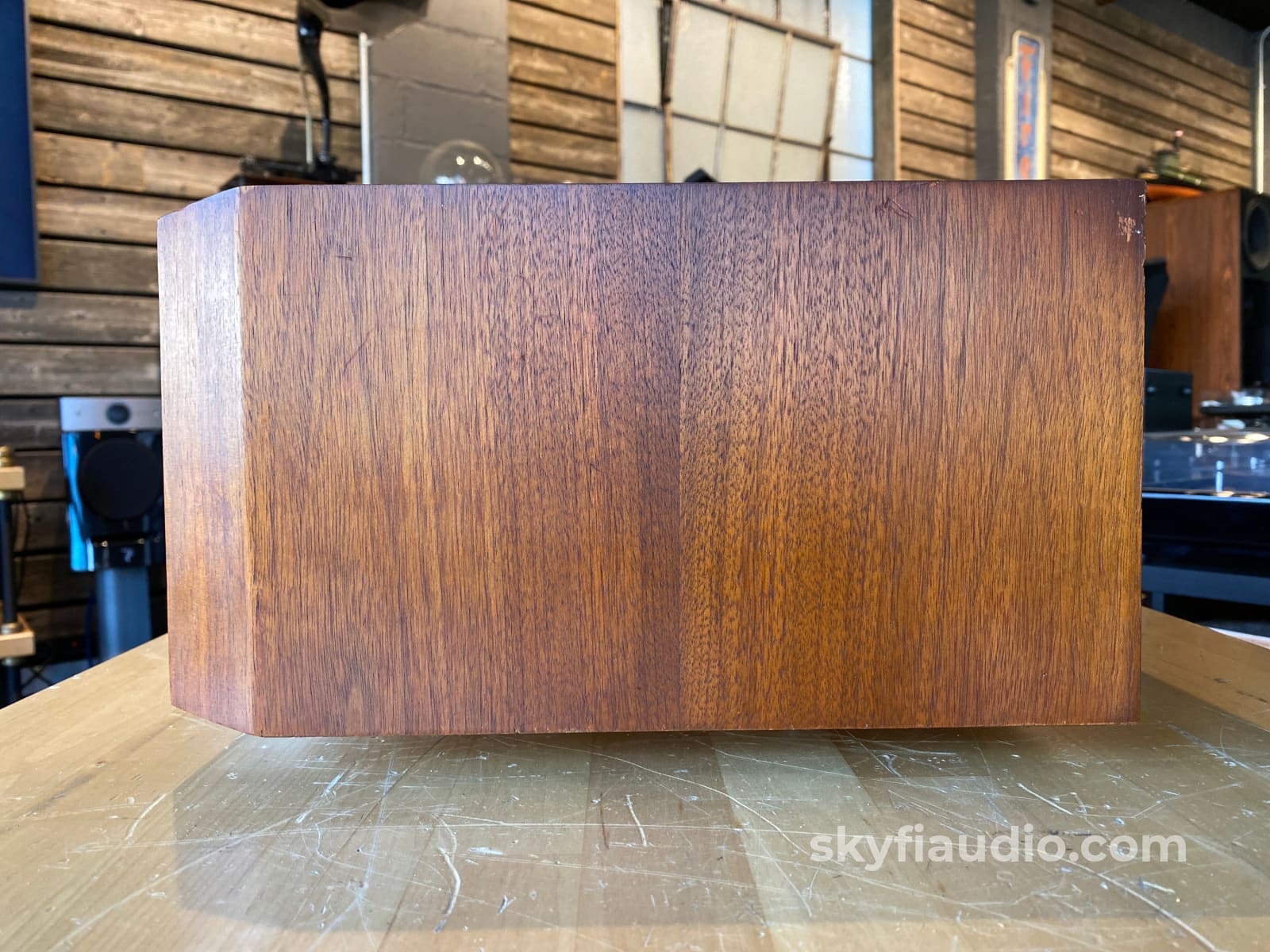
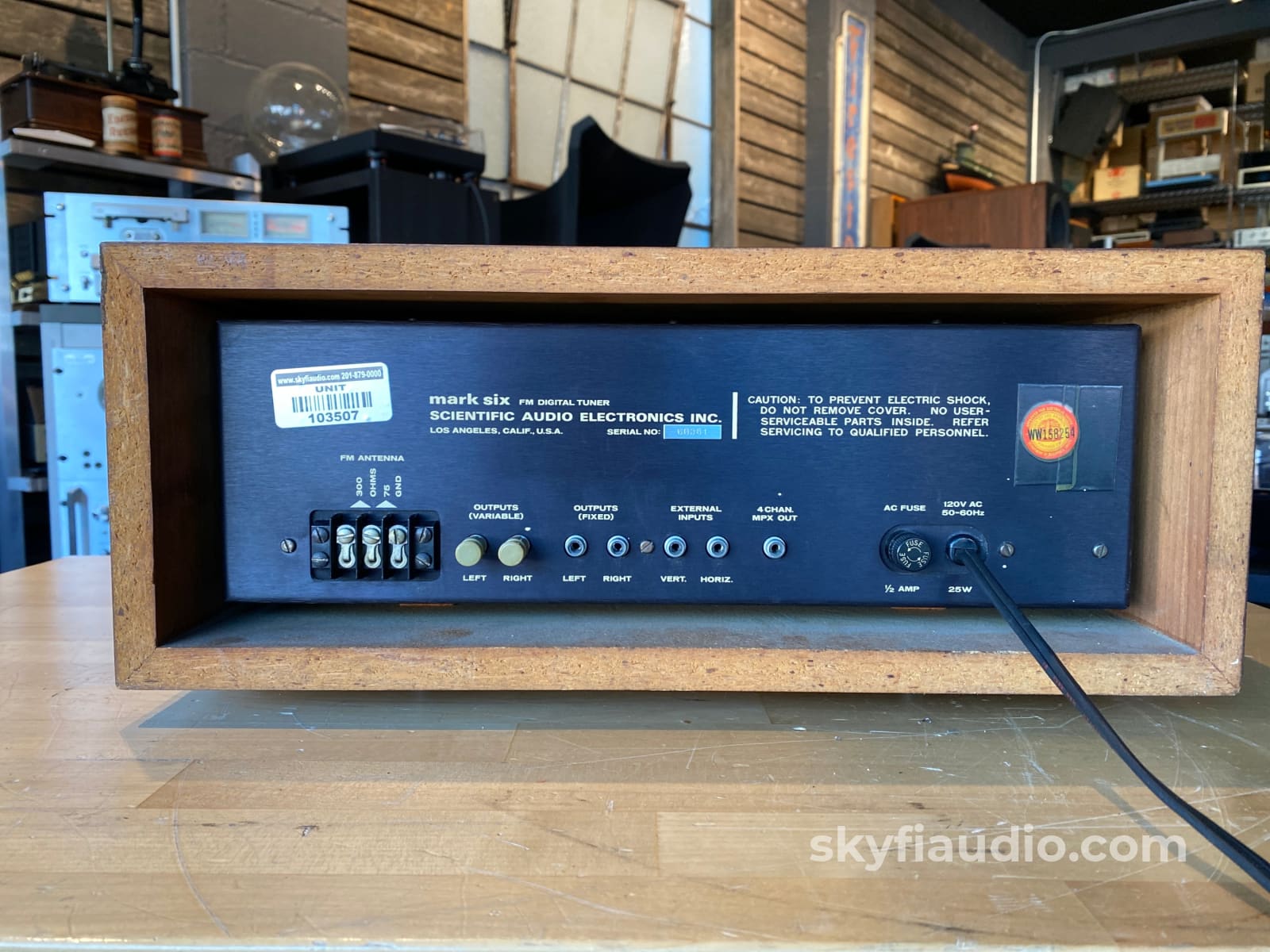
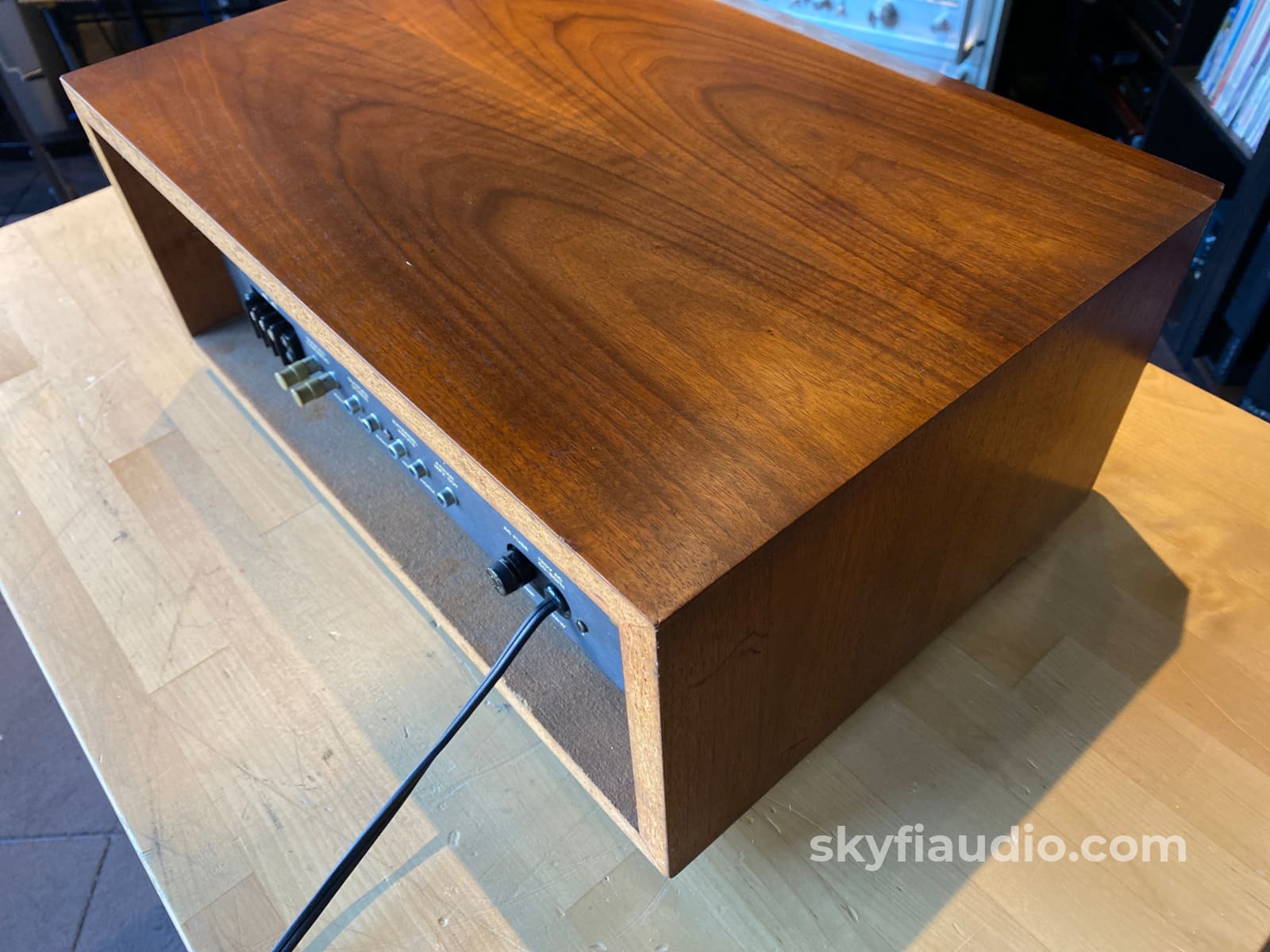

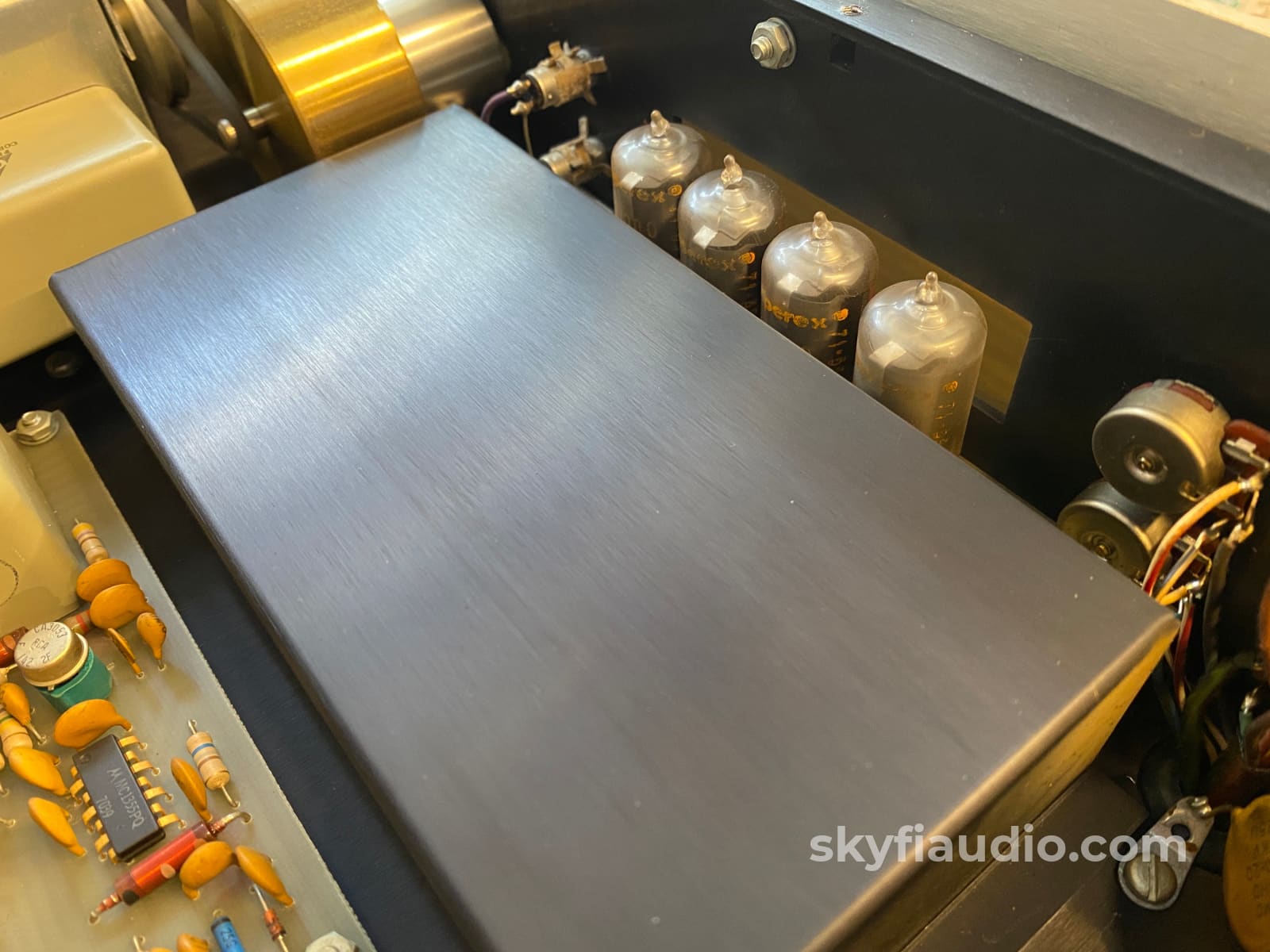
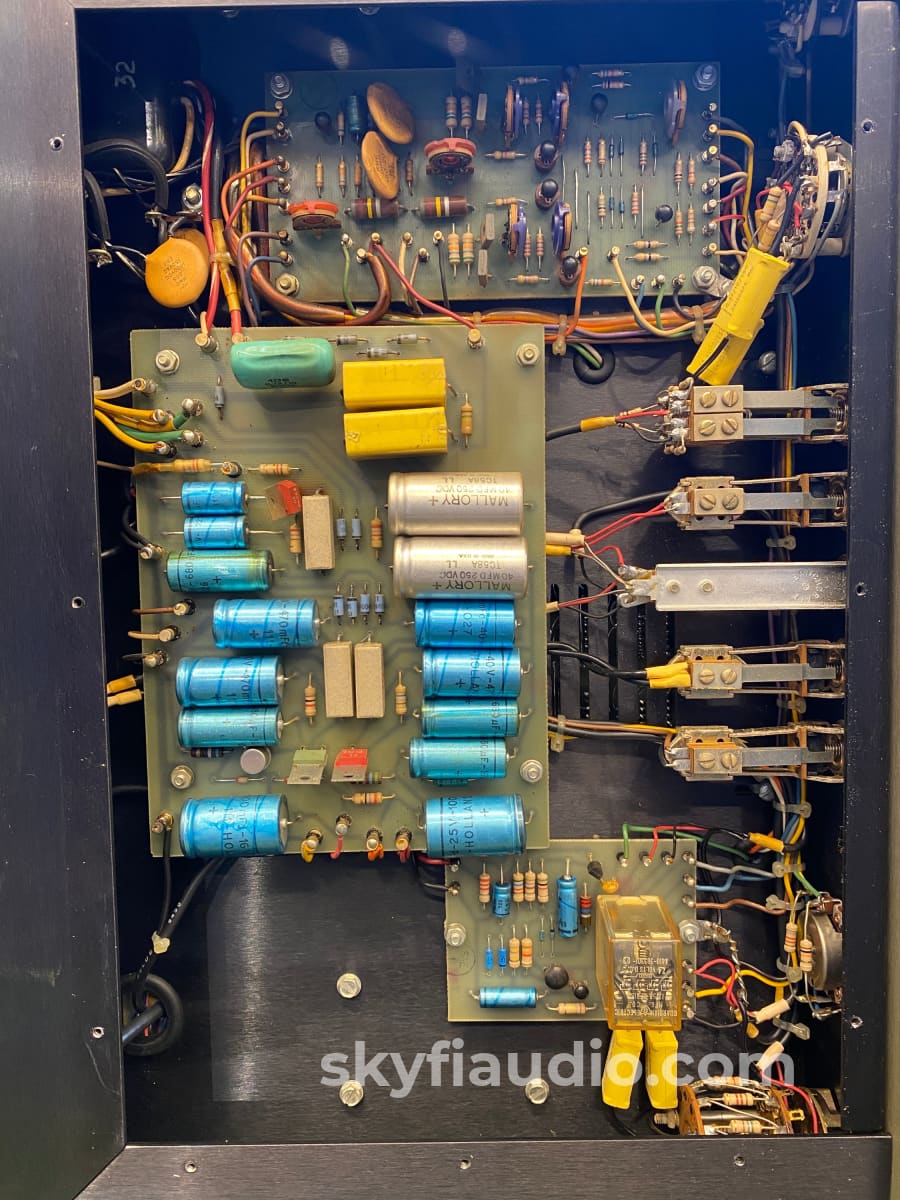
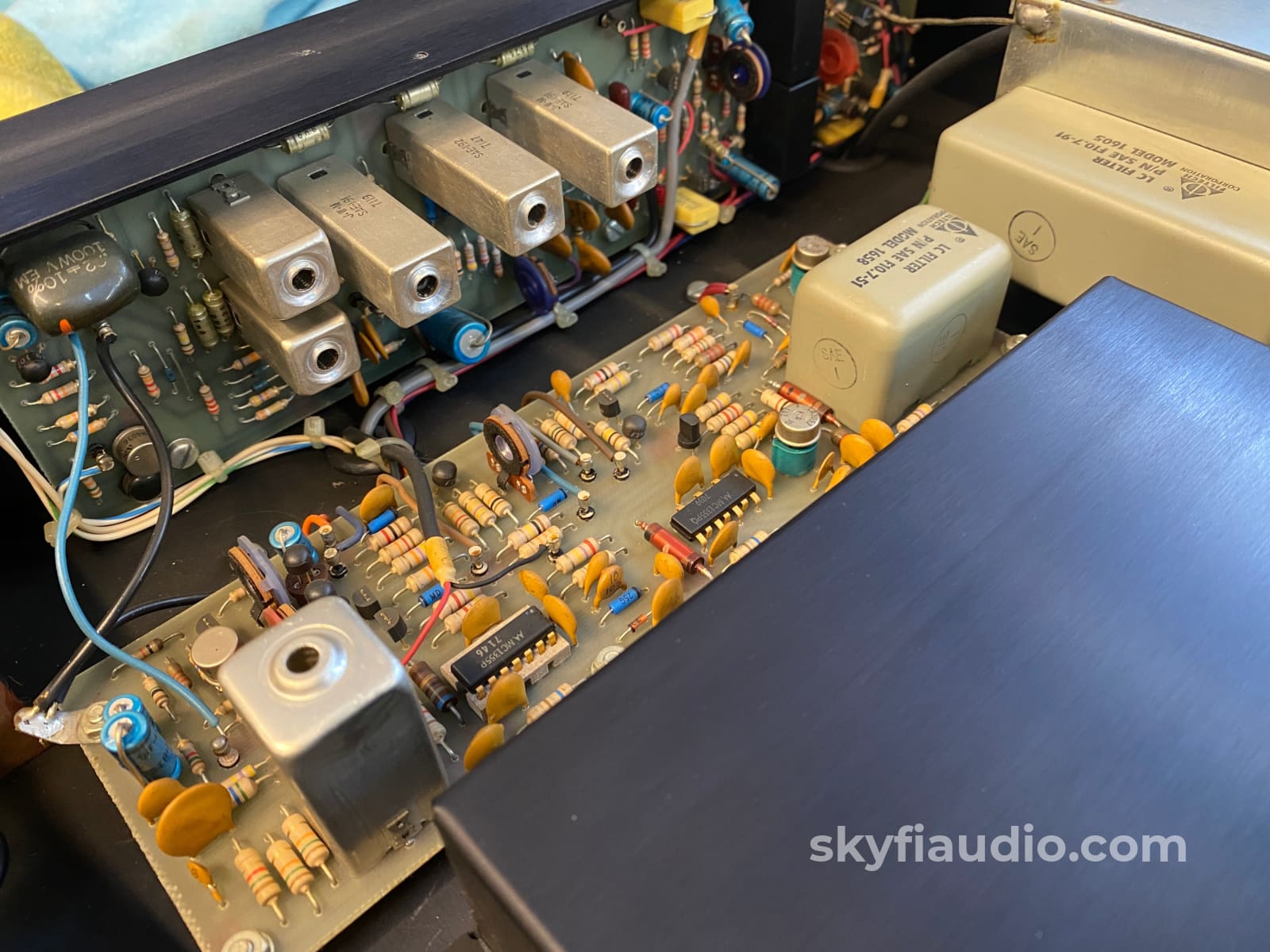
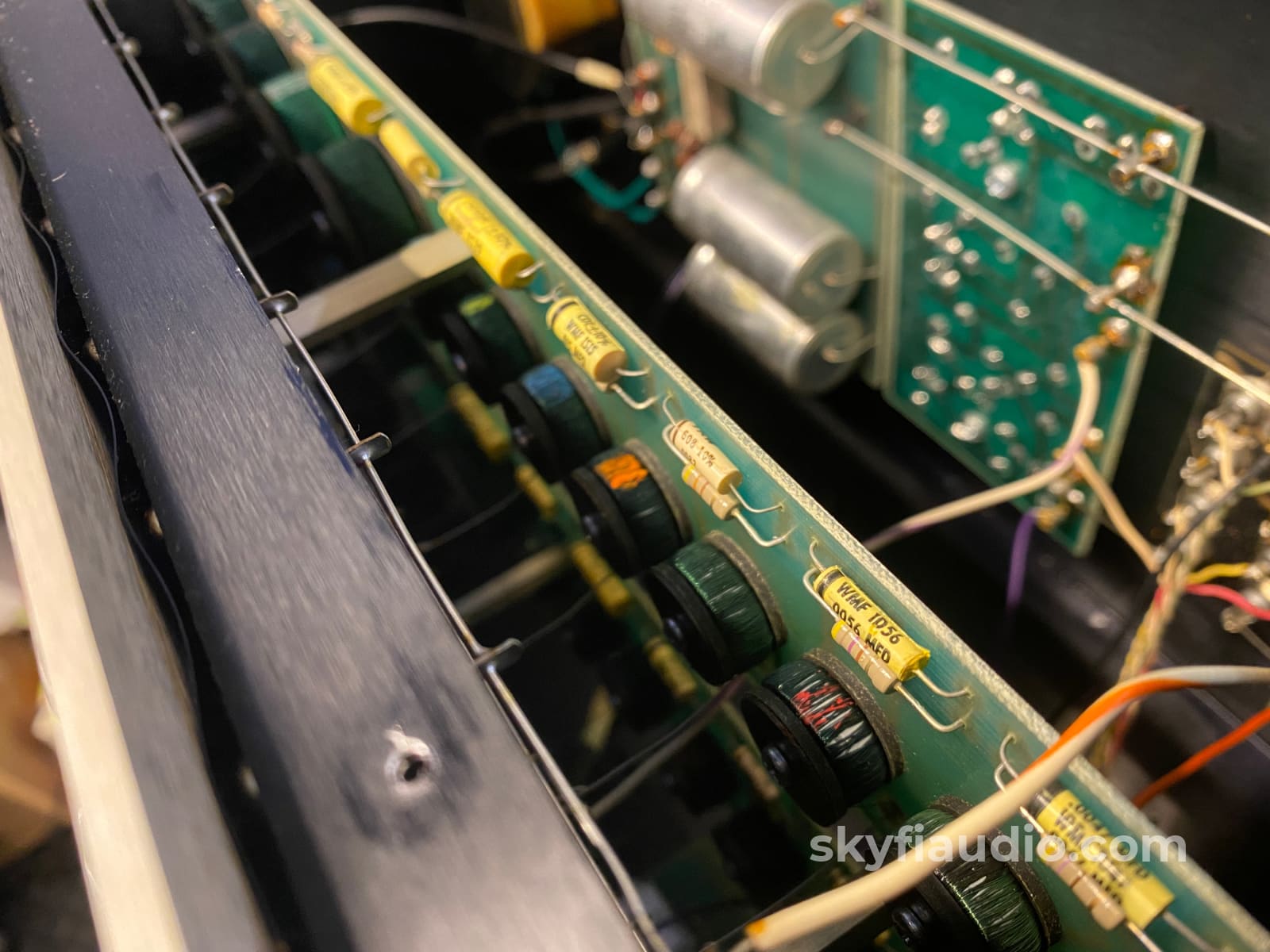

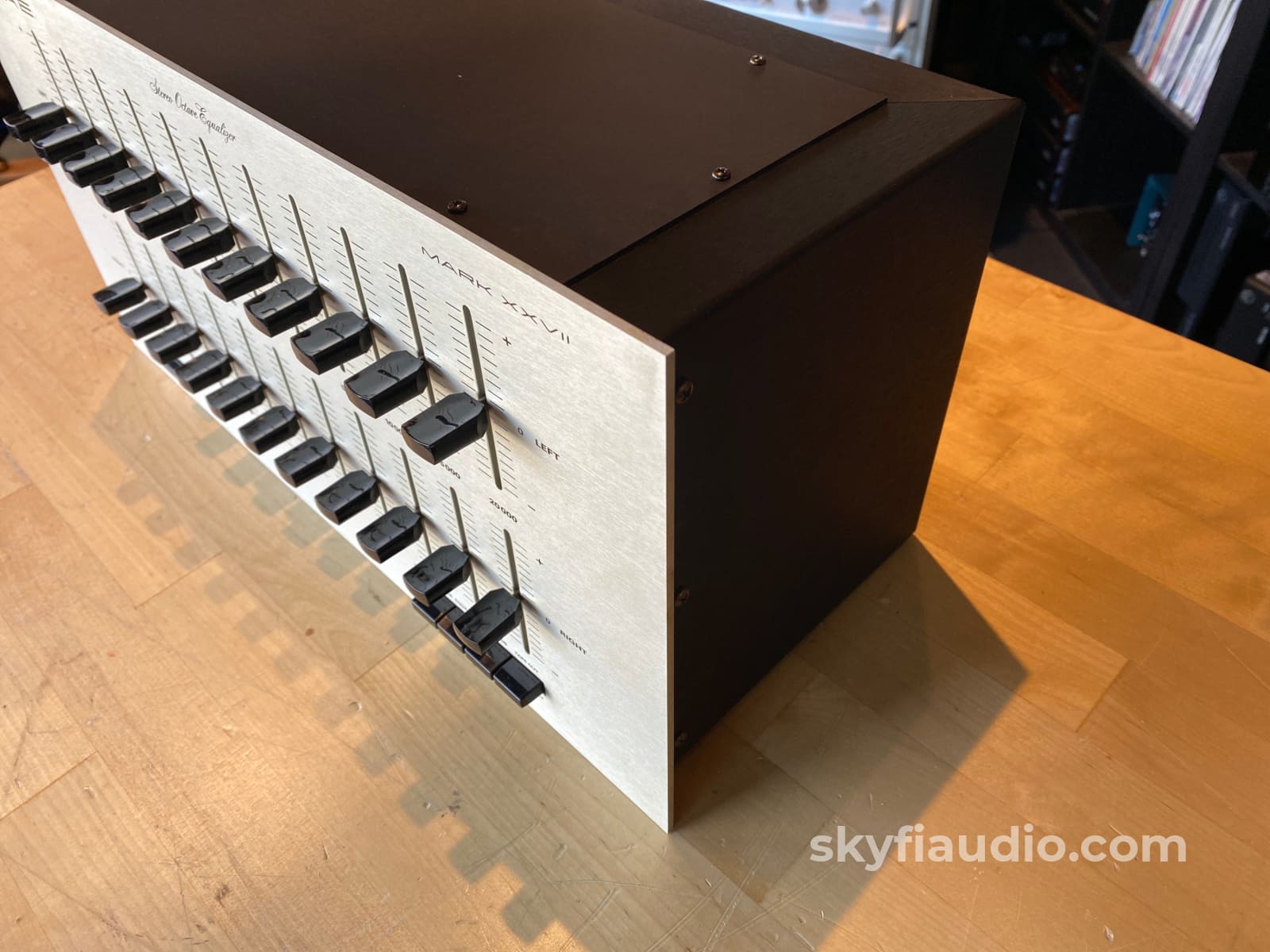
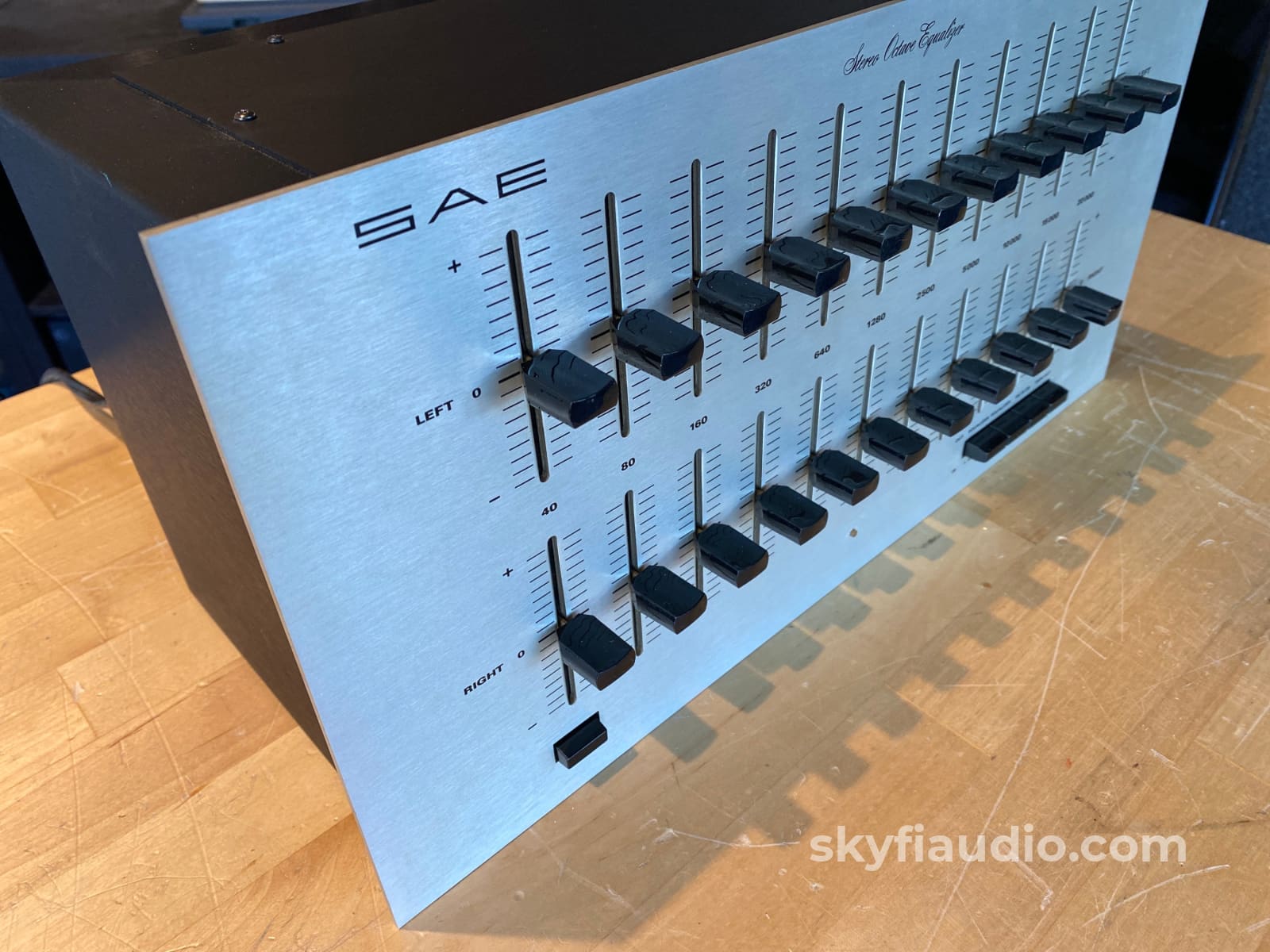
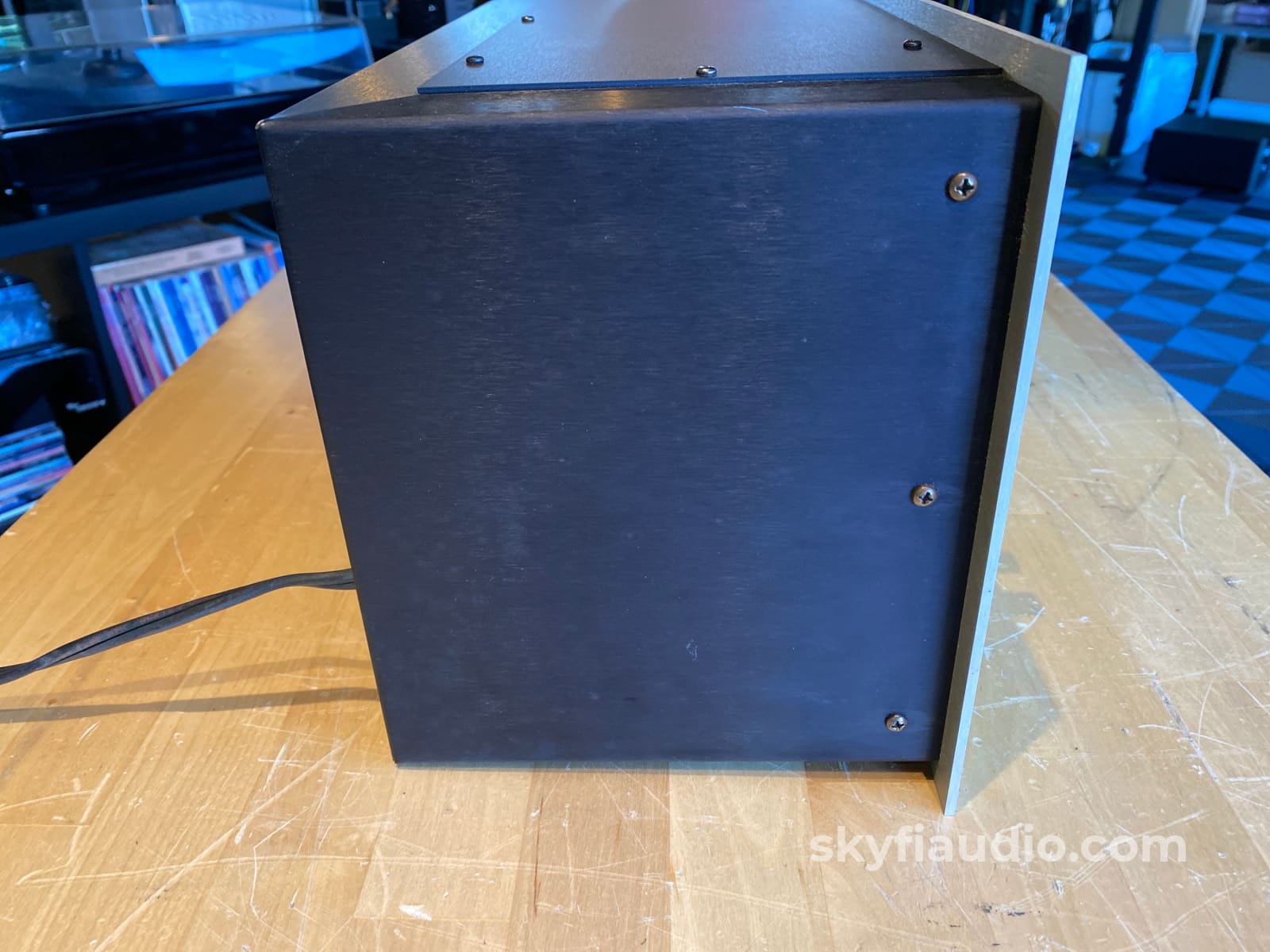
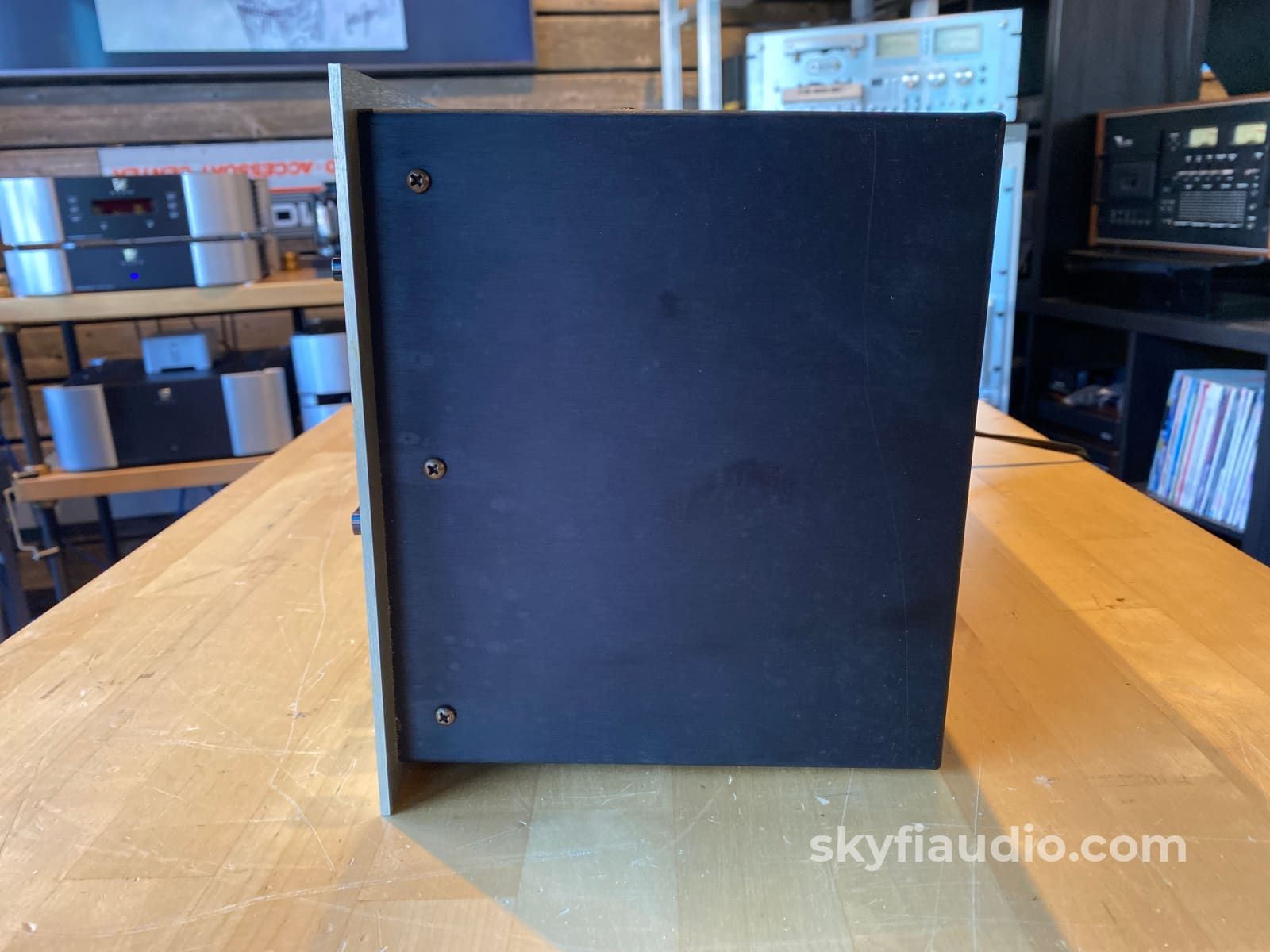
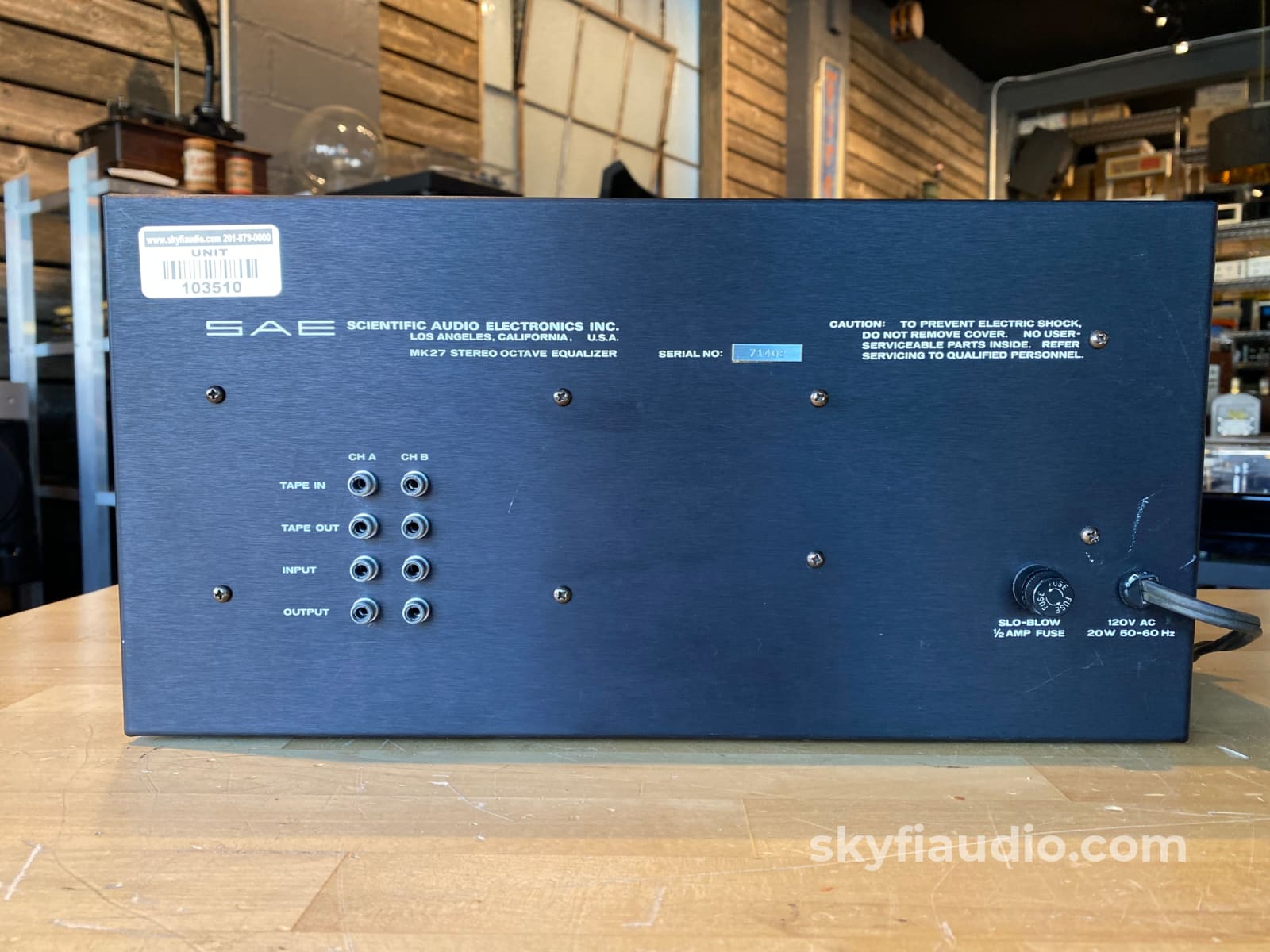
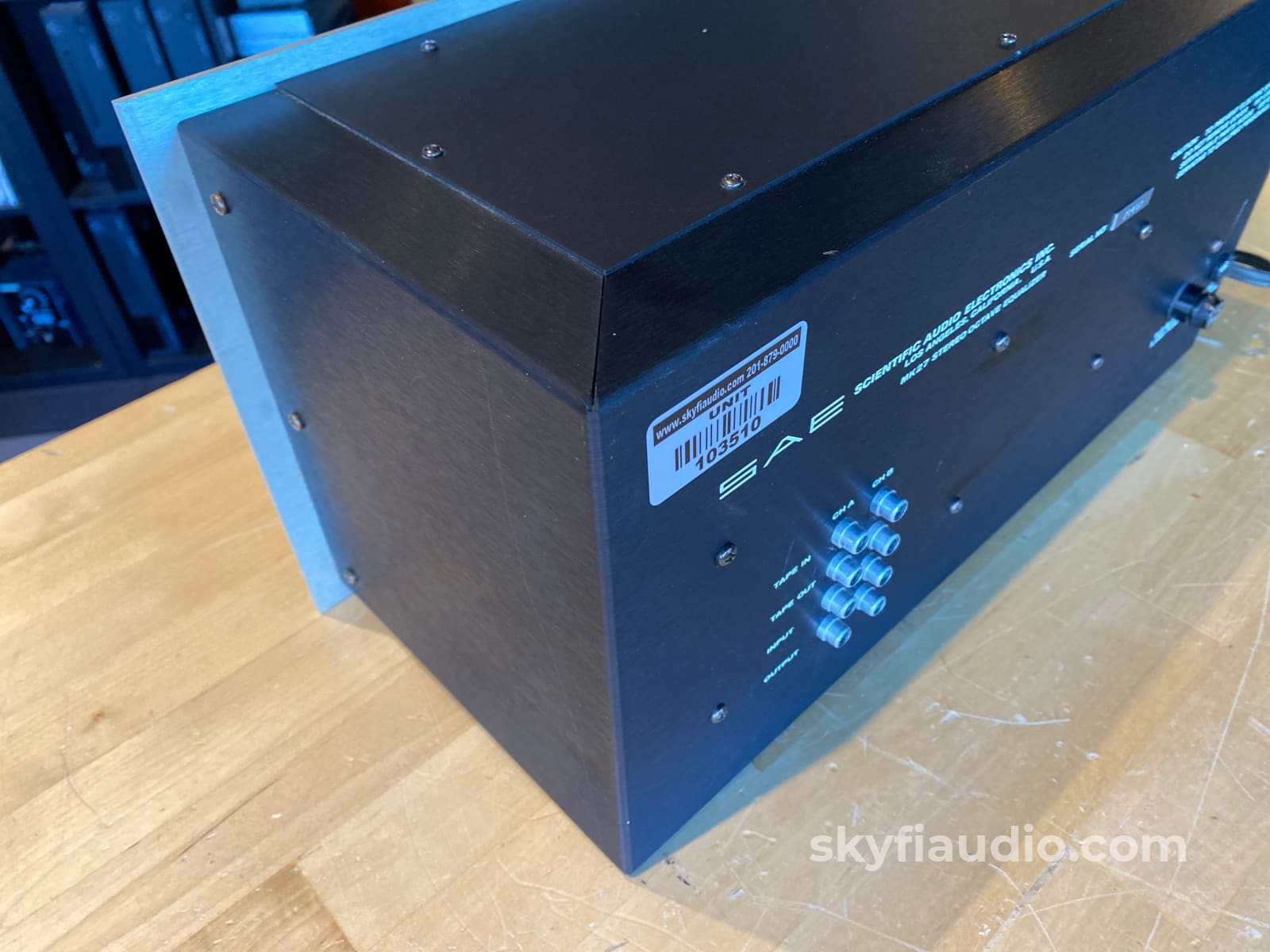

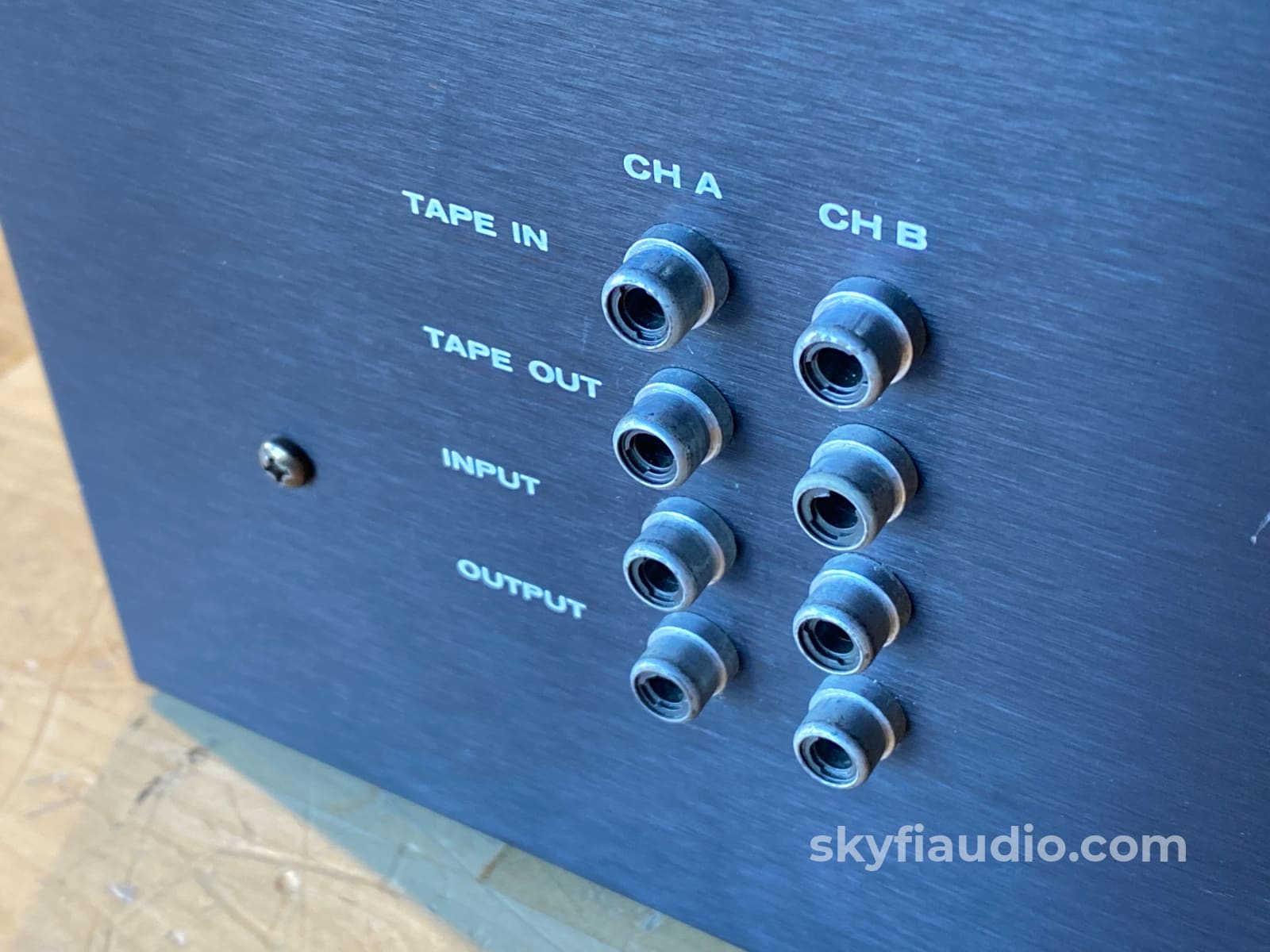
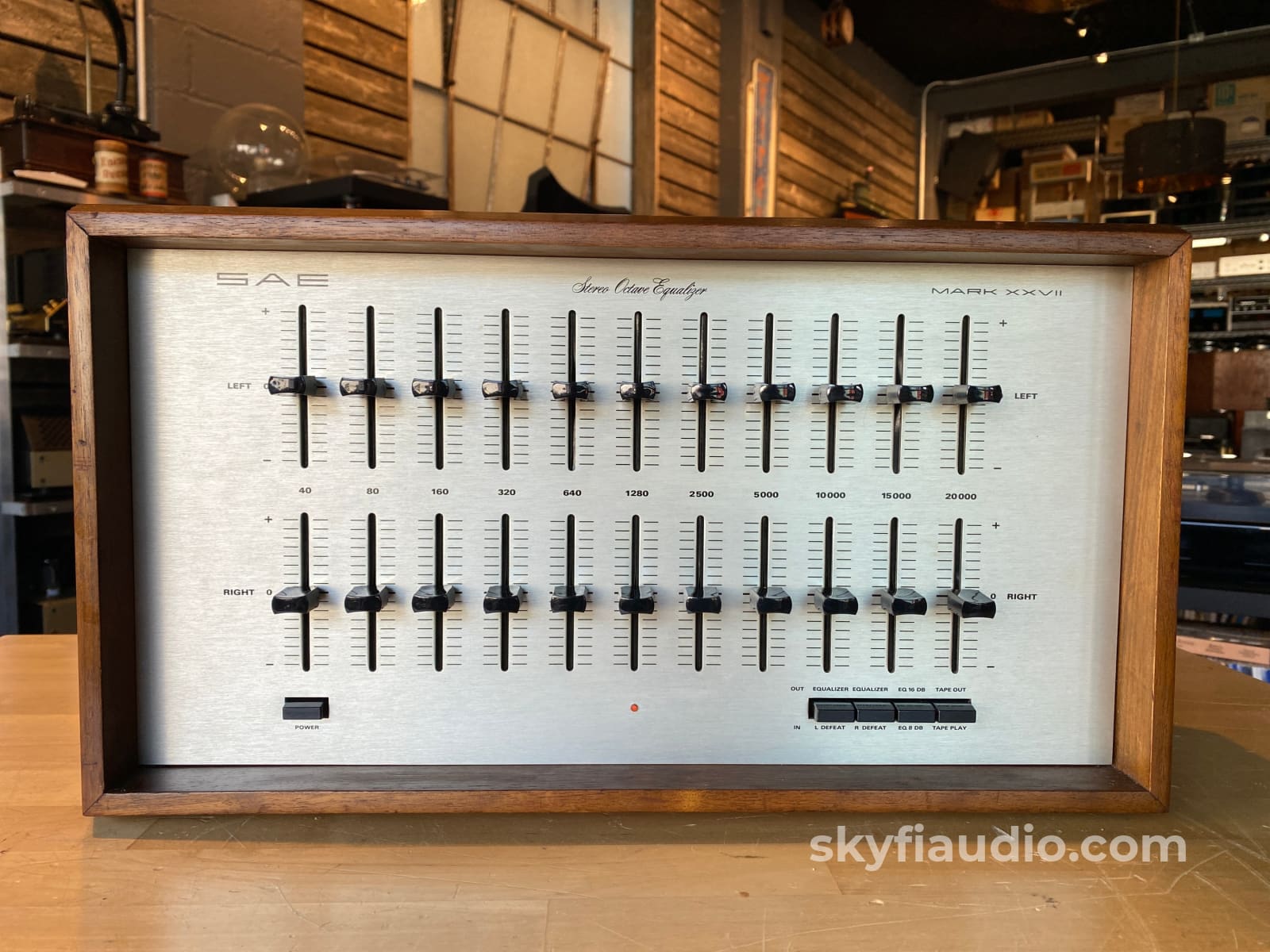
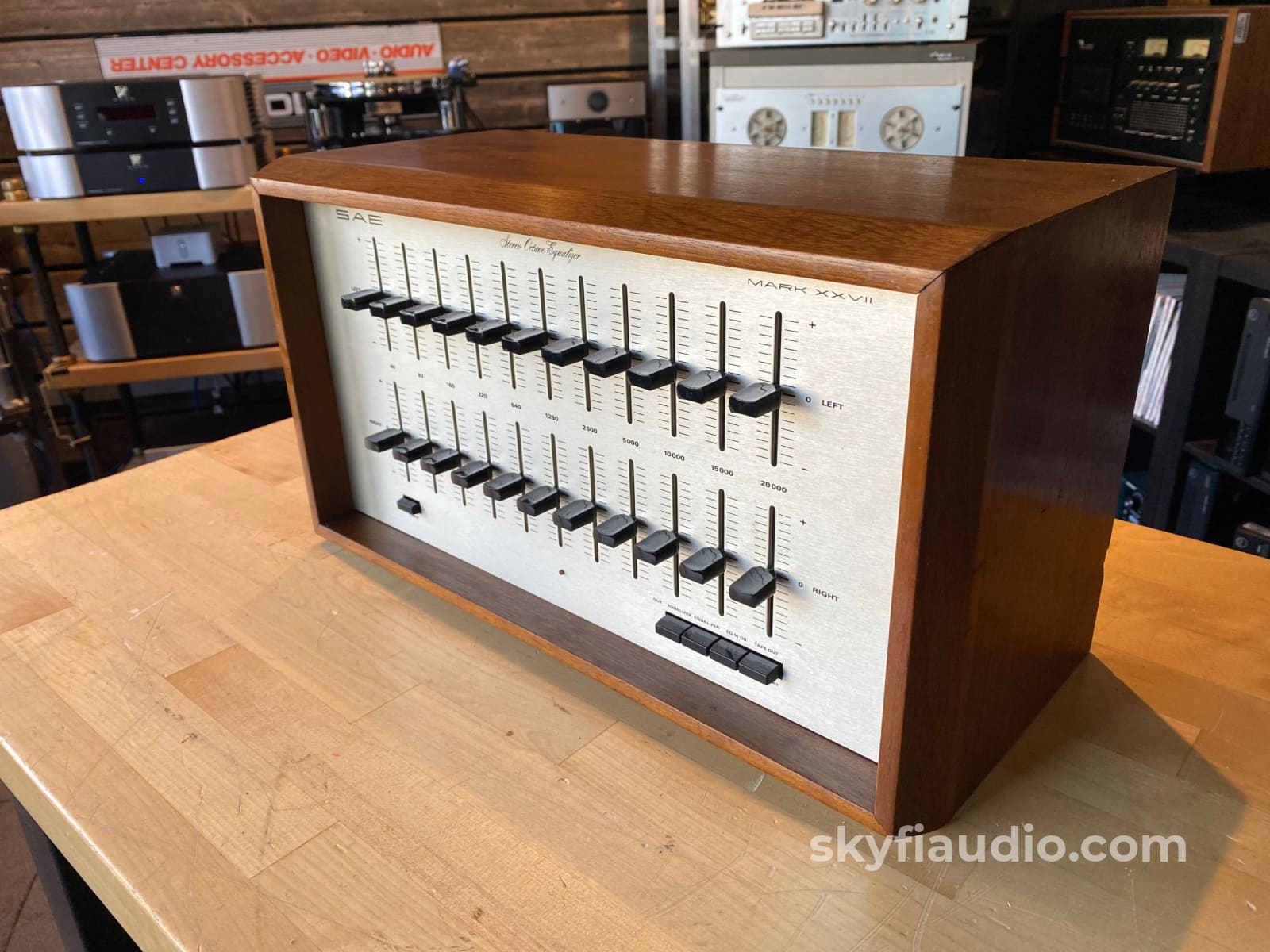
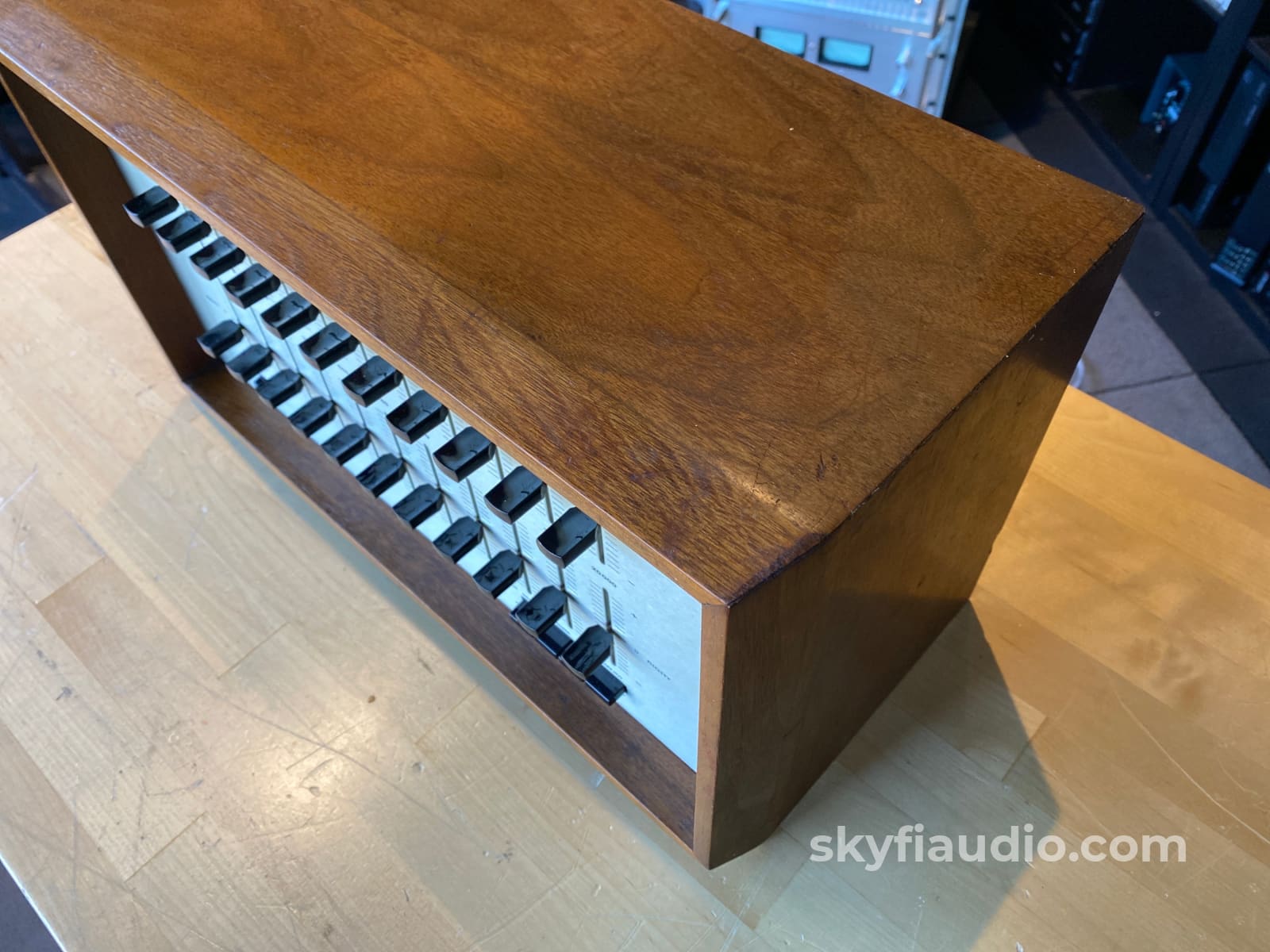
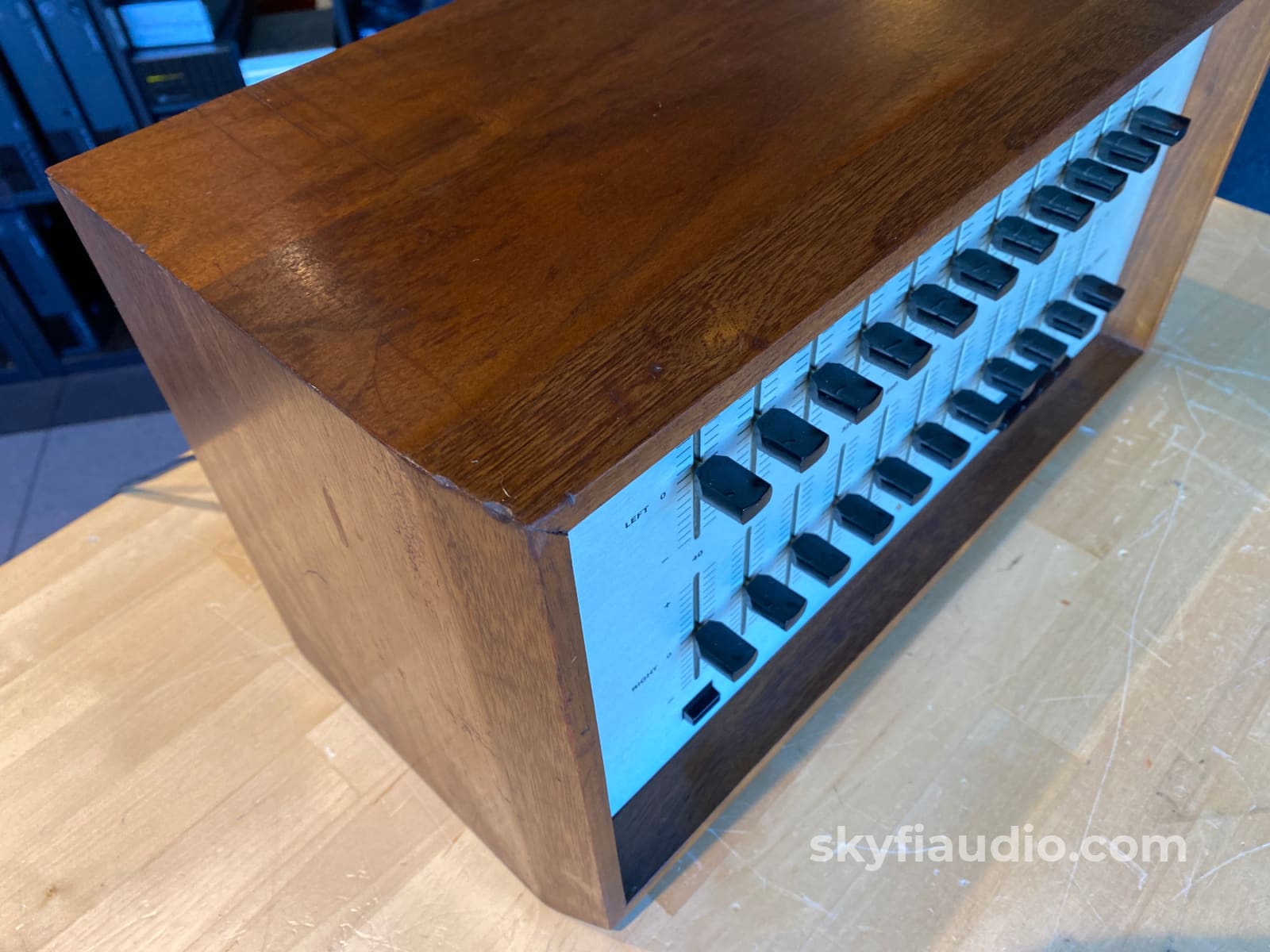
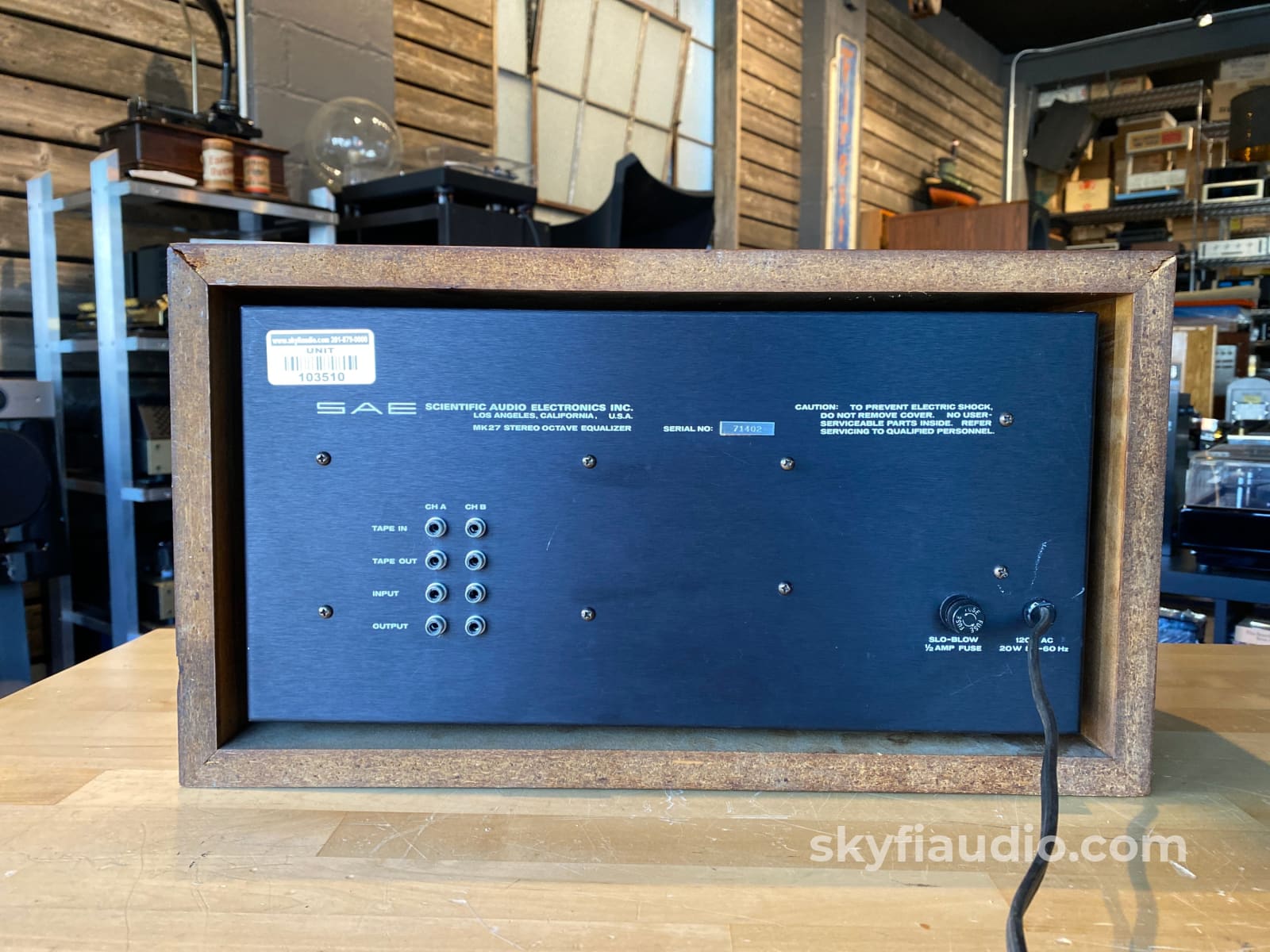
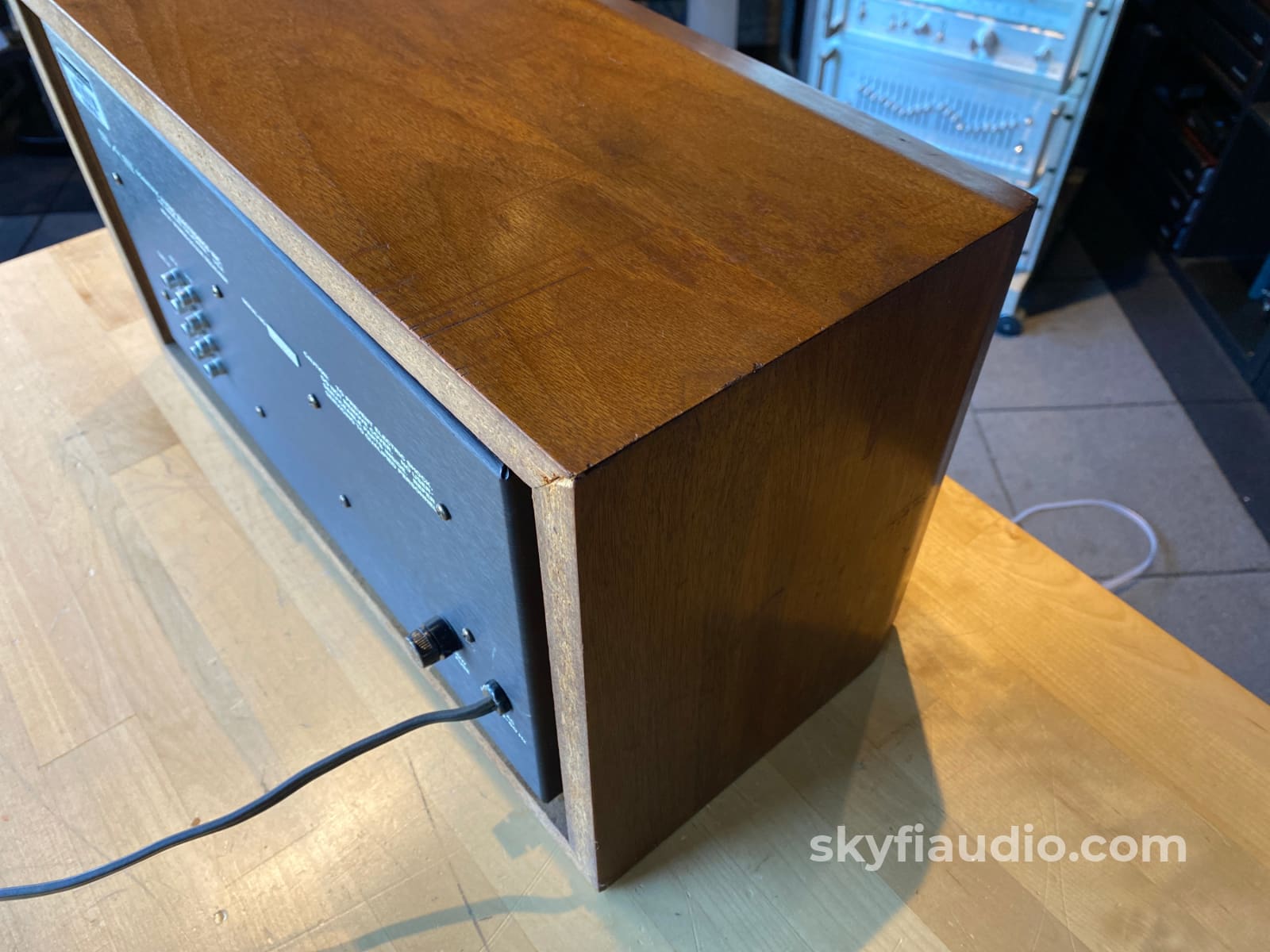
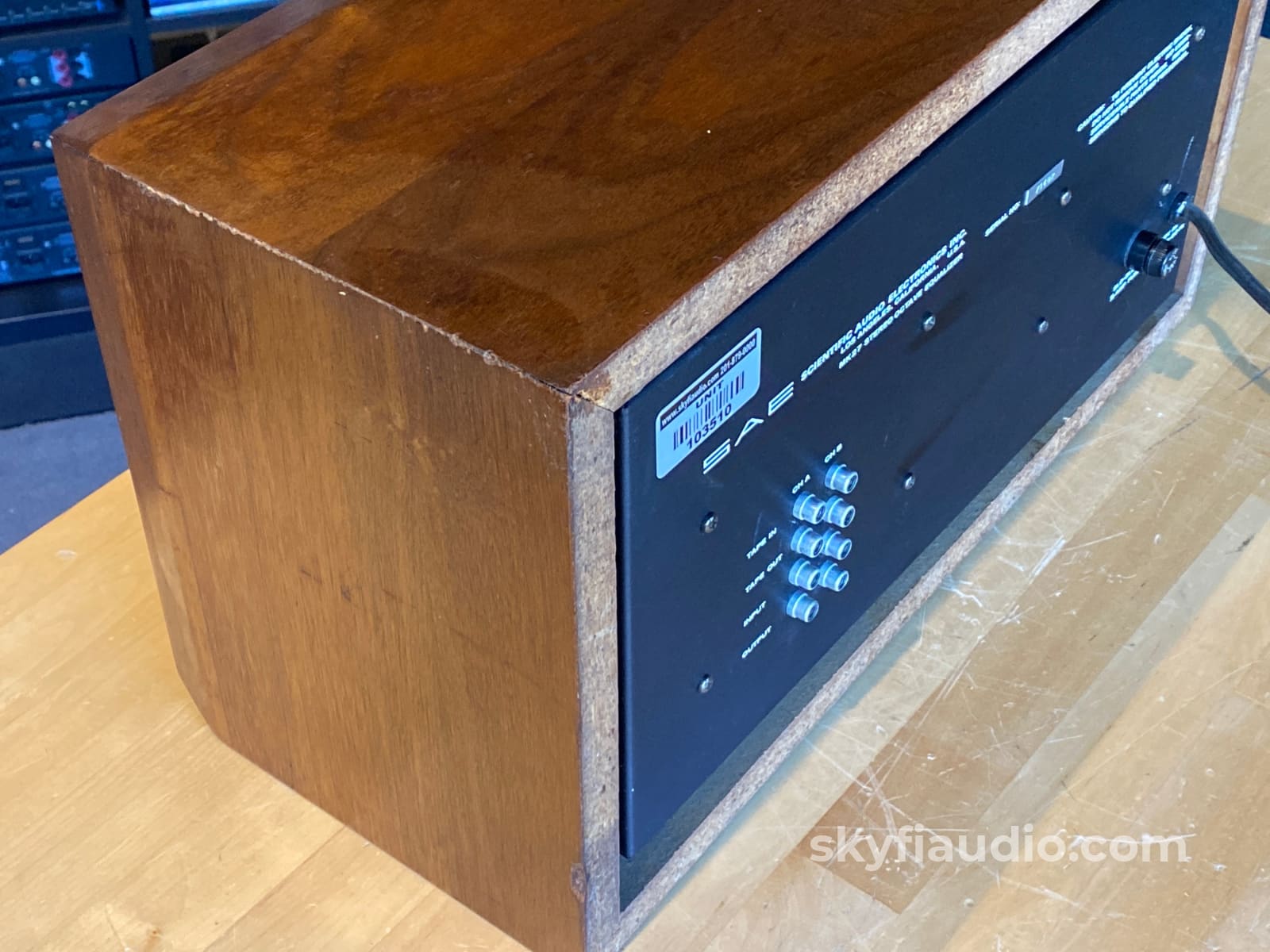
SAE 4 Piece Vintage System in Wood Cabinets - WOW!
Free Shipping on Most Electronics - Excludes Speakers and Items Requiring Freight - Contiguous U.S. Only
Pickup currently unavailable at SkyFi 479

SAE 4 Piece Vintage System in Wood Cabinets - WOW!
SkyFi 479
479 South Broad Street
Glen Rock NJ 07452
United States
I’ve always wanted to assemble an SAE system from this era and we were recently able to get all 4 pieces from a great client, all with silver faceplates!
They’re all housed in rare optional original wood cabinets which have survived the test of time. The cabinets showed light scratches and blemishes on arrival, but after some careful touch-ups and polishing the imperfections blended in to create a beautiful weathered patina that compliments the vintage look of the set.
NOTE: The Bose 901 speakers pictured flanking the system were put in place to complement the system but are not included in this listing.
The Mark Six Tuner is one of our absolute favorites, mostly because of the amazingly cool nixie tube frequency display and the built-in scope. It's also a great performer passing all of our bench tests for sensitivity, channel separation, and tracking.
The MK IIICM Amplifier features gorgeous warm yellow backlit meters with granular attenuation adjustments to compliment your listening level. It tested well over 200W per channel on our bench tests, and impressed us during our long term listening tests. It also has what appears to be a factory quiet fan option installed with an independent power cord, meaning the end user can choose whether or not to use it depending on their listening requirements.
The MK IM Preamp Equalizer also has backlit meters which is super rare for equipment from this era! This preamp is unique in several different ways but one of the most interesting features is the volume control.
Volume level is adjusted with a stepped attenuator instead of a carbon control which results in more accurate channel tracking and a cleaner signal path. There's a second coarse level control which allows the user to select the perfect range to get maximum range from the stepped attenuator for their specific system.
Likewise, the metering is also adjustable, this means that you can achieve effective meter action at both extremely quiet and extremely loud levels.
The MARK XXVII EQ has a 11 bands and was meant to be used with this specific preamp.
All 4 pieces arrived in need of some TLC but we were able to get them all working nicely by performing a typical service, bulbs, cleaning controls, biasing, bench testing etc.
We categorize these pieces as "survivors", meaning that they have been preserved in original condition electronically and have only received the service needed to meet manufacturer specifications.
The only existing electronic issue that we identified was intermittent RCA jack connections on certain pieces. This resulted in a dropped channel in our extended testing which could always be remedied by simply manipulating the cables. This is not a recurring issue that happens every hour or two, you may never have it happen, and we just wanted to make mention for full disclosure.
Physical condition of the units is a 7 while the cabinets are more like a 6 but present really well.
This system will ship in 4 double boxes utilizing our well documented packing process to ensure safe travel.
*We’re not looking to split the system up so please don’t ask.
Click below to add our recommended matching cables from Kimber Kable, all brand new as SkyFi is an official Kimber dealer.
Kimber Kable - RCA Interconnects
|
Item |
Included |
|
Original Box |
Not Included |
|
Manual |
Not Included |
|
Remote |
Not Applicable |
|
Cables |
Yes - Power Only |
|
Physical Condition |
7 / 10 |
|
Working Condition |
10 / 10 |
The SkyFi Testing Process for Preamplifiers:
We start with a visual inspection of all internal components to make sure that there are no signs of heat stress or damage. Capacitors are checked for telltale signs of predictive failure including bulging, shrunken wrappers, or physical leakage. We also inspect the PCBs for discoloration from resistors or transistors that may have been running hot. On vintage units we often spot check select capacitors for value and ESR.
When we first power on a preamplifier we connect its RCA output to a Sencore PA81 Power Analyzer which simulates real world loading conditions and gives us an oscilloscope interface. The first order of business is checking that the volume control works smoothly throughout its entire range with acceptable channel balance. This is accomplished by feeding a 1KHz sine wave into one of the preamp’s line level inputs while monitoring the preamp’s output on an oscilloscope. We then switch to a 1KHz square wave to test the tone controls, loudness function, and filters where applicable. During this step we are watching for equal alteration of the test signal by both channels. This also helps us identify dirty controls that will need treatment. Once the basic line stage functions are verified, we test each input individually. This is especially important for devices that use relays to select their sources. If the preamp is equipped with a phono stage we test that as well. We use an inverse RIAA filter which allows us to feed a reference test signal into the phono input with the proper RIAA equalization and level. A square wave or sine sweep is used to verify that the device’s phono stage is faithfully reproducing the RIAA curve. If the preamp under test has balanced inputs and/or outputs these are tested as well.
We finish up our bench testing with a listening test with our bench amplifier and reference speakers. During this test we check for hum or hiss that may not have shown up in earlier testing. We also check that all of the tone controls and filters perform as expected. If the preamplifier has remote control functions these are also tested. Preamps with tube circuits or complicated power supply topologies are connected at our long term test rig for extended stress testing under real world conditions.
The SkyFi Testing Process for Solid State Amplifiers:
We start with a visual inspection of all internal components to make sure that there are no signs of heat stress or damage. Capacitors are checked for telltale signs of predictive failure including bulging, shrunken wrappers, or physical leakage. We also inspect the PCBs for discoloration from resistors or transistors that may have been running hot. On vintage units we often spot check select capacitors for value and ESR.
If the amplifier passes visual inspection, we move on to a controlled power on sequence using a Sencore safety analyzer to monitor current draw in real time. Once the amplifier is determined to be safe to operate, we connect it to full AC mains for function and power testing. We connect the speaker outputs of the amplifier to a Sencore PA81 Power Analyzer which acts as a dummy load, DC offset monitor, and oscilloscope interface. We start with a low level 1KHz test signal at the amplifier’s input and slowly increase its amplitude while monitoring the output on an oscilloscope for signs of noise, clipping, distortion, or improper channel balance. We continue increasing the signal level until the amplifier reaches clipping. At this point we take an output power measurement and compare it to the spec sheet of the amplifier to verify proper performance. If the device under test has both balanced and single ended inputs they are both tested at this time. We finish off the bench evaluation with a 1KHz square wave check and a 20Hz to 20KHz sine sweep to assess the amplifier’s frequency response characteristics. This battery of tests will usually reveal if the amplifier has any issues that need further attention.
Before the device leaves the bench, we perform a listening test with actual music using a variety of preferred test tracks. Our benches are outfitted with familiar monitor speakers which help us identify inconsistencies that will not always show up on our test gear. The main things that we are listening for are hum or noise with no signal present, proper center image, clicks, pops, or any other obvious undesirable audio characteristics.
If the unit passes all of these tests it is moved to our long term testing rig where we simulate real word operating conditions for 6-8 hours. This allows us to monitor the unit for signs of thermal runaway or intermittent issues that only crop up when the unit has fully come up to temperature.
The SkyFi Testing Process for Tuners:
We start with a visual inspection of all internal components to make sure that there are no signs of heat stress or damage. Capacitors are checked for telltale signs of predictive failure including bulging, shrunken wrappers, or physical leakage. We also inspect the PCBs for discoloration from resistors or transistors that may have been running hot. On vintage units we often spot check select capacitors for value and ESR. Vintage analog tuners also have moving parts related to the tuning gang and dial string. These parts are inspected for smooth operation.
If the unit passes visual inspection it is bench tested for a handful of key performance parameters using a Sencore SG80 AM/FM Stereo Analyzer. The SG80 allows us to “simulate” an ideal radio station using precision test signals instead of music. This device, in conjunction with an oscilloscope allows us to properly evaluate the following parameters:
1. AM Reception (Where Applicable)
2. FM Mono Reception & Tuning Meter Function
3. FM MPX Reception (Stereo)
4. Dial Tracking - How accurately the tuner dial or display indicates the actual frequency of the broadcast being received.
5. Stereo Separation - A properly working stereo tuner will have minimal crosstalk between the left and right channel.
6. Sensitivity & Signal Strength Meter Function - By lowering the output of the SG80 we can simulate weak stations and determine how well the tuner will be able to pull in weak distant stations. This adjustment also helps us verify signal strength meter function.
If the tuner has acceptable performance related to the parameters above we connect the unit for listening tests with a simple dipole antenna. We listen for audio reproduction quality of local stations and evaluate how many stations the tuner can receive while we sweep through the dial. We are looking to verify that the tuner can decode stereo on strong local broadcasts and pick up a wide variety of local stations at the bottom, middle, and top of the frequency band. At this point we also test convenience features such as muting, filters, built in oscilloscope function, etc.
We finish up with an extended listening test on our long term test rig. We tune in a strong local station and monitor for drift over a 2-3 hour period.
Choose options
























































































